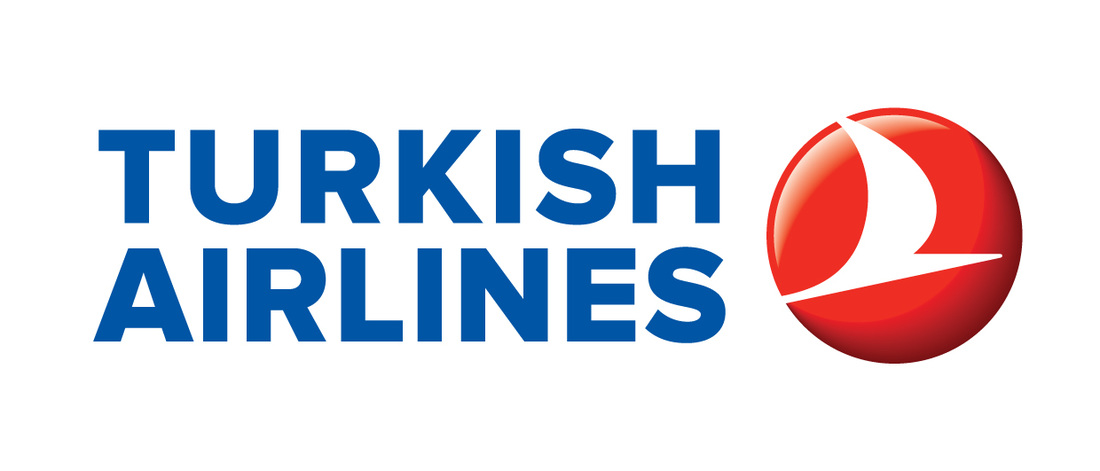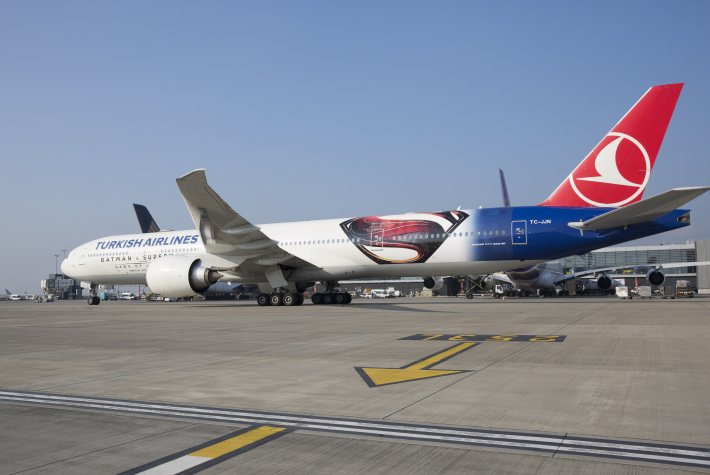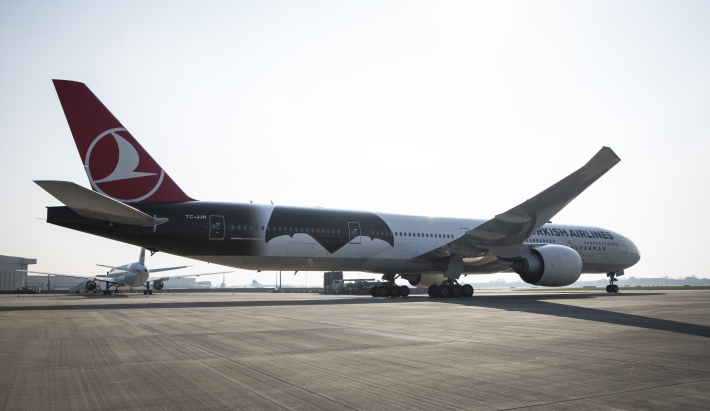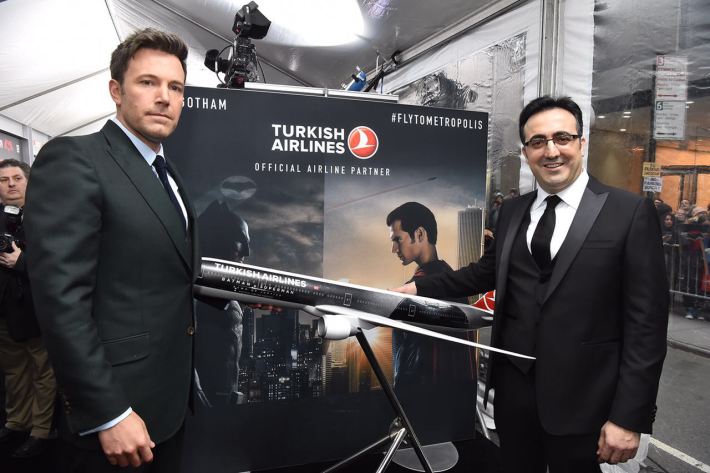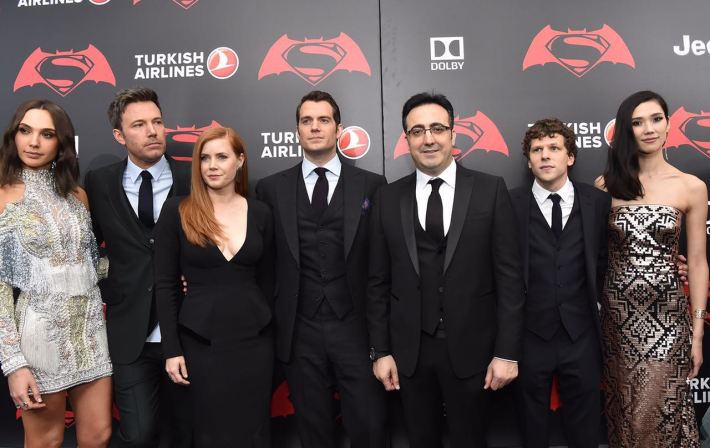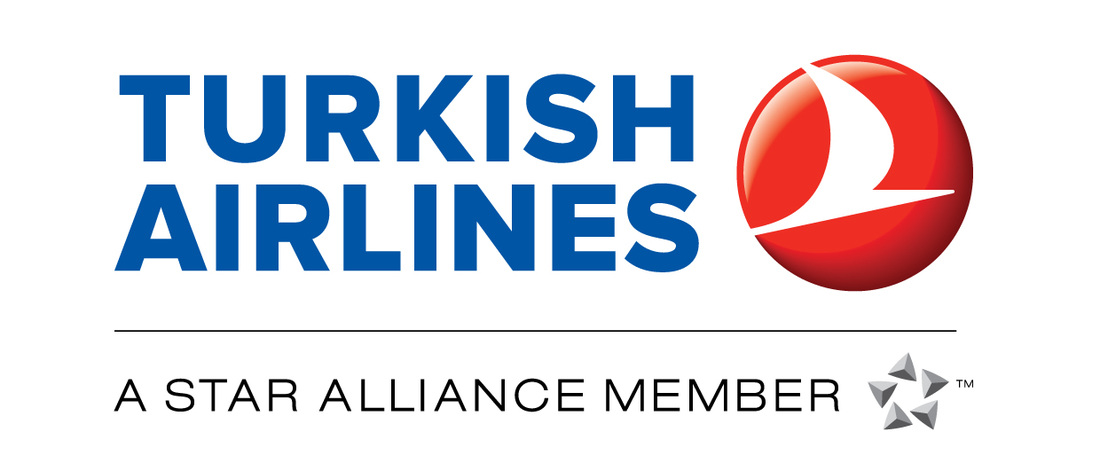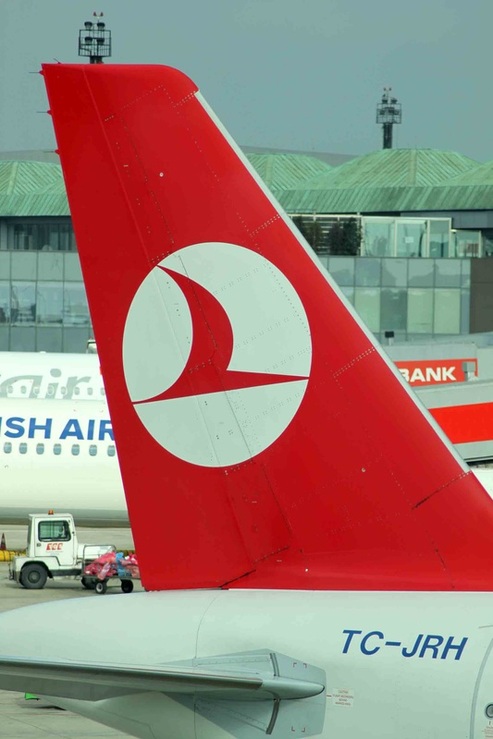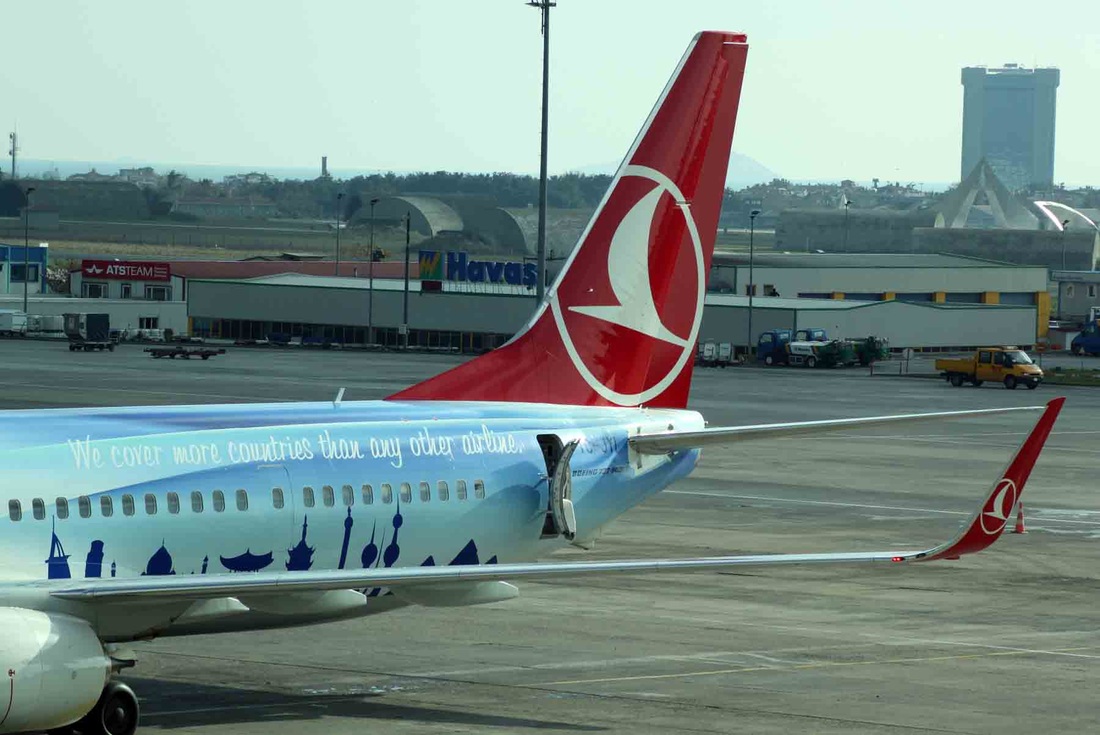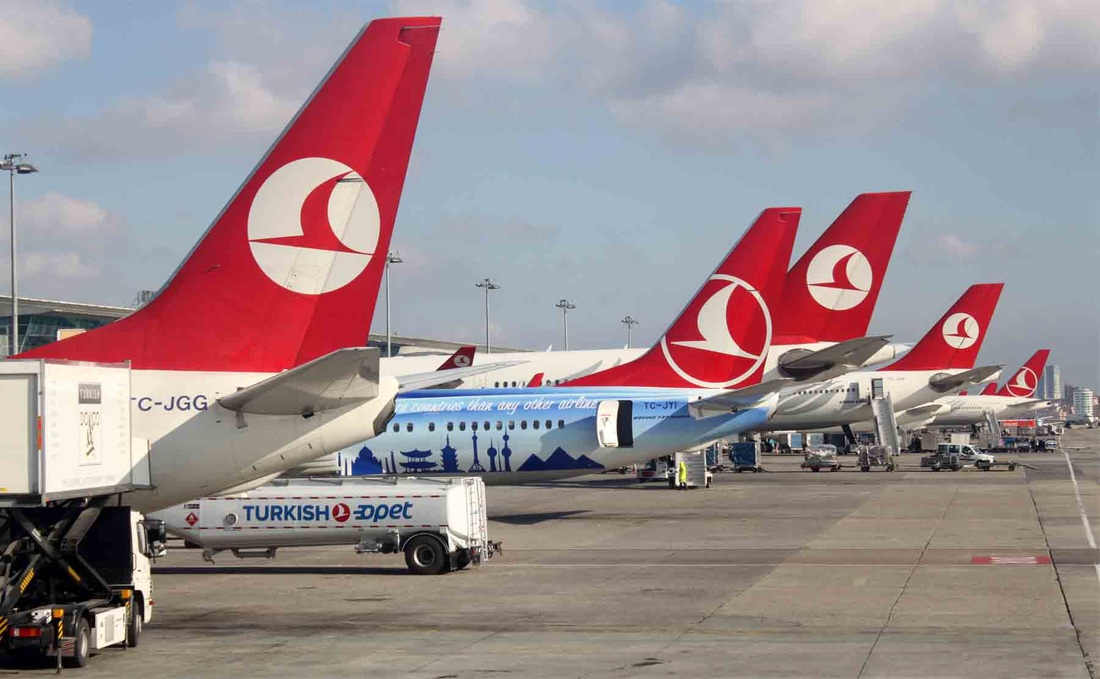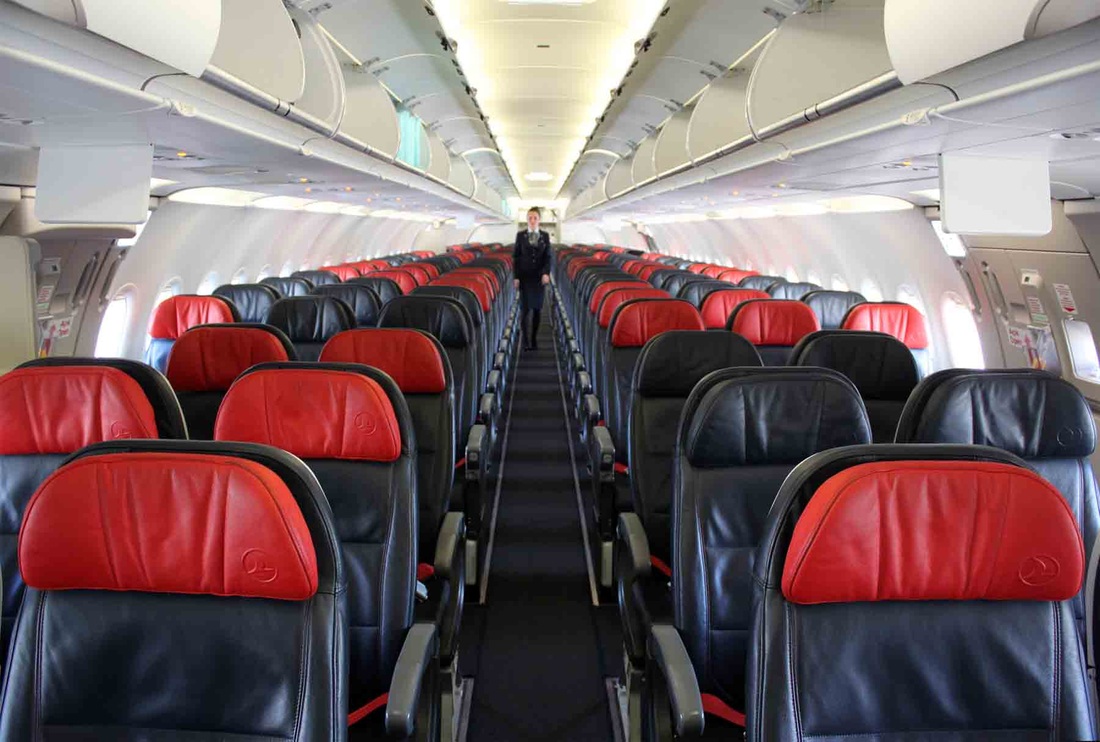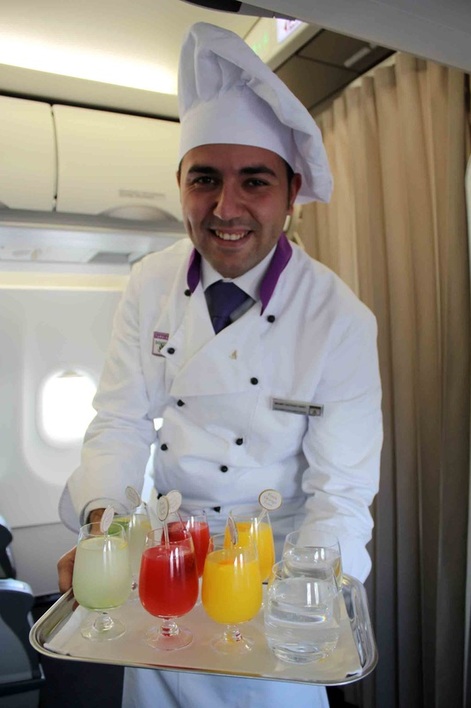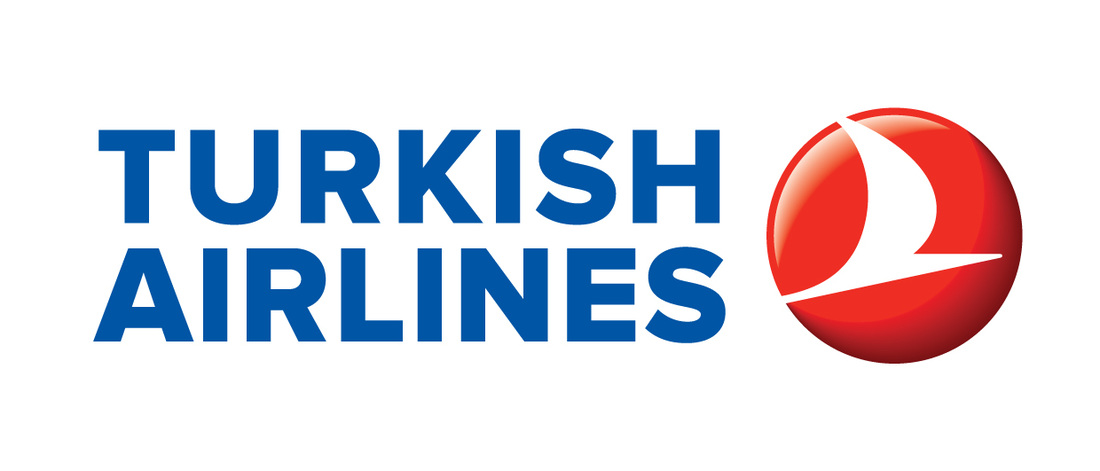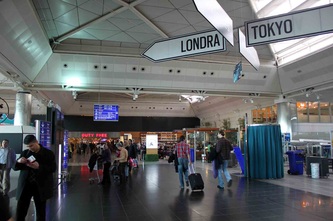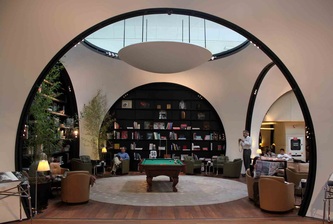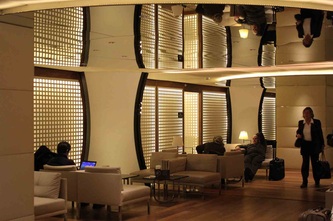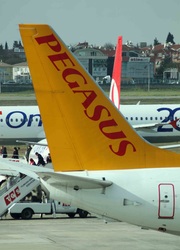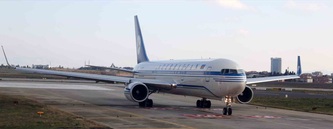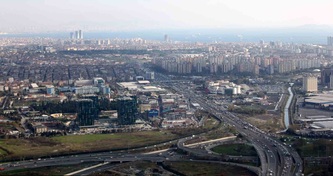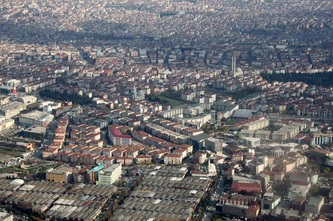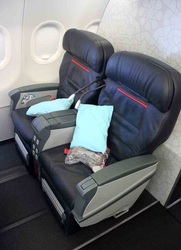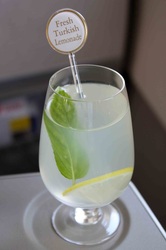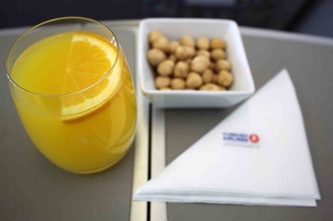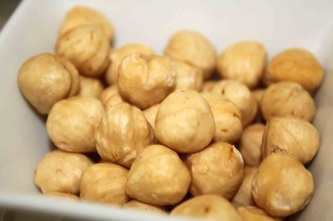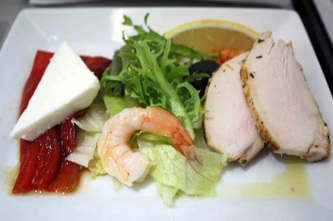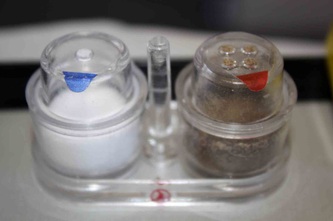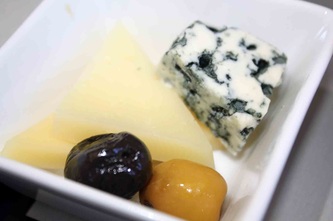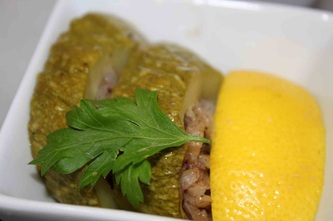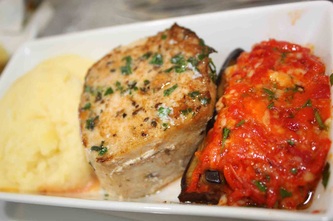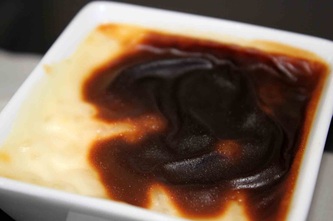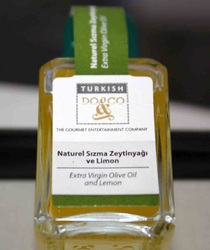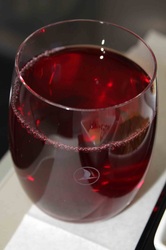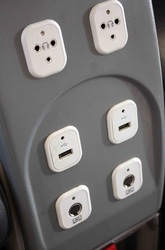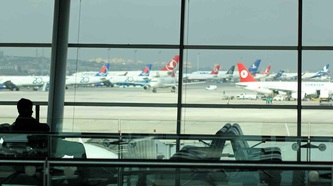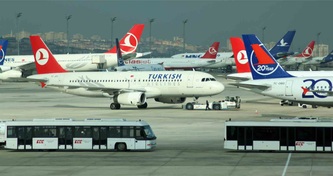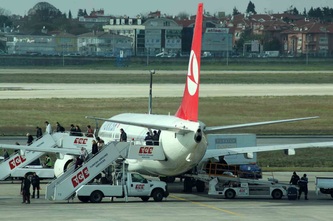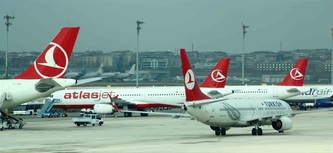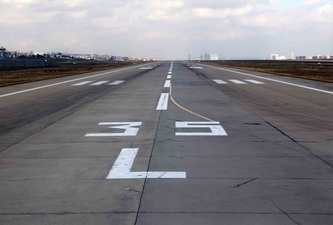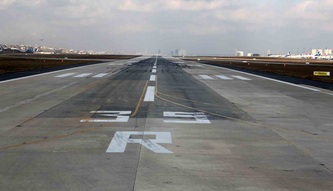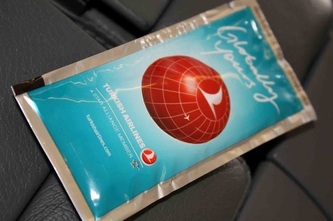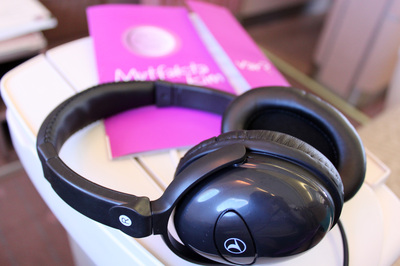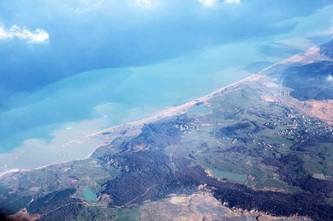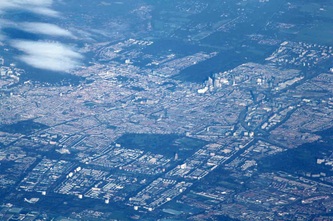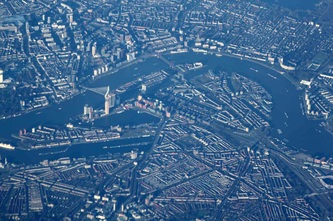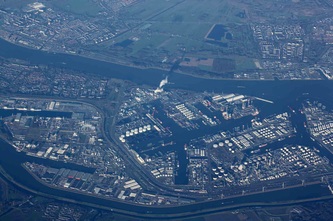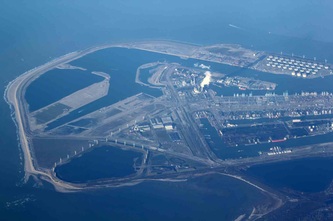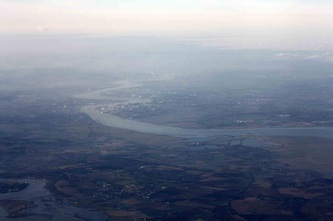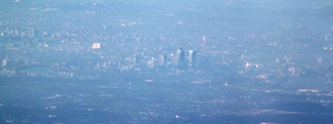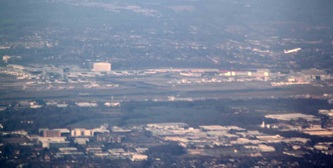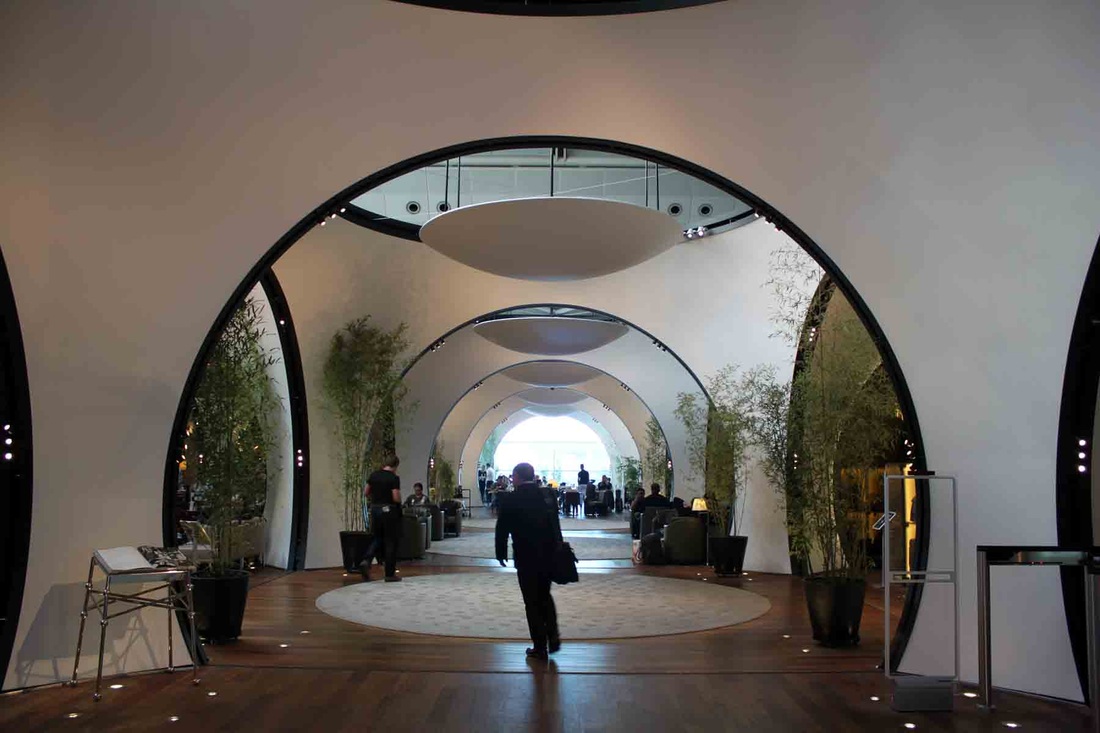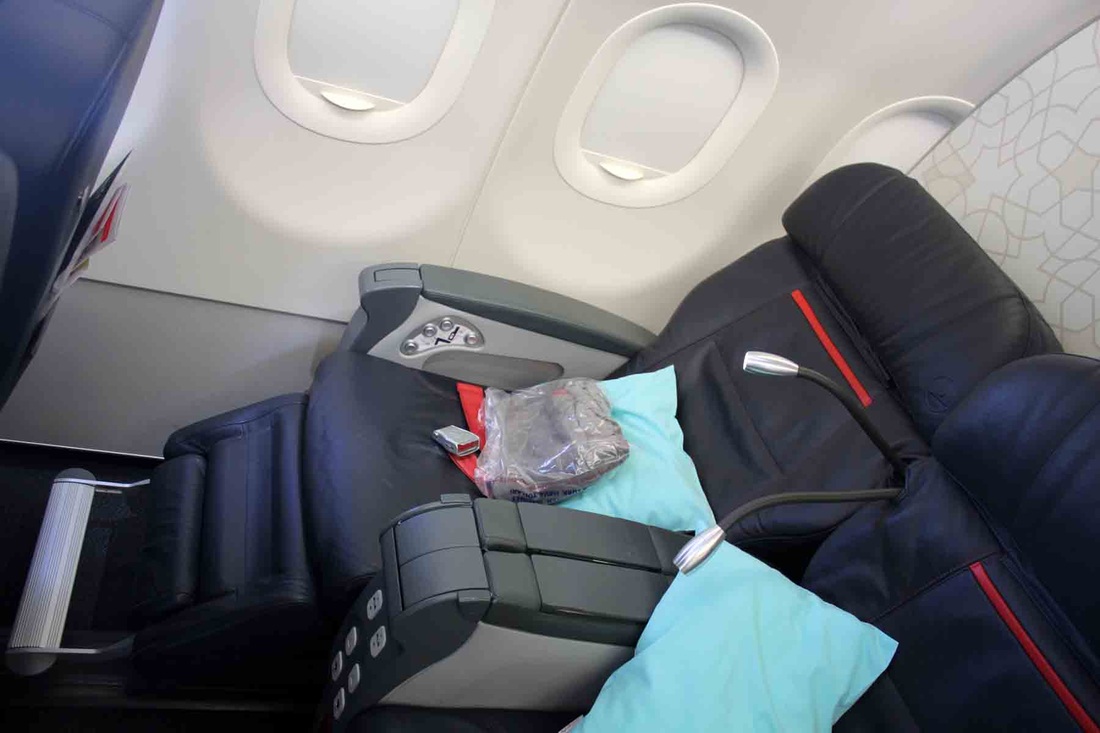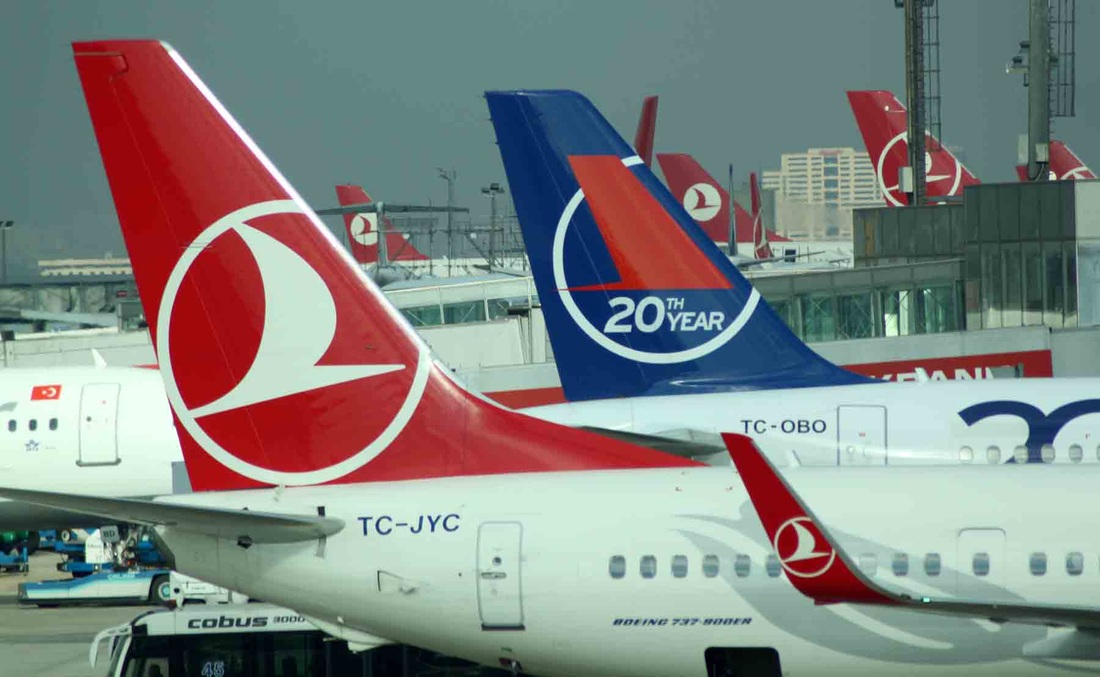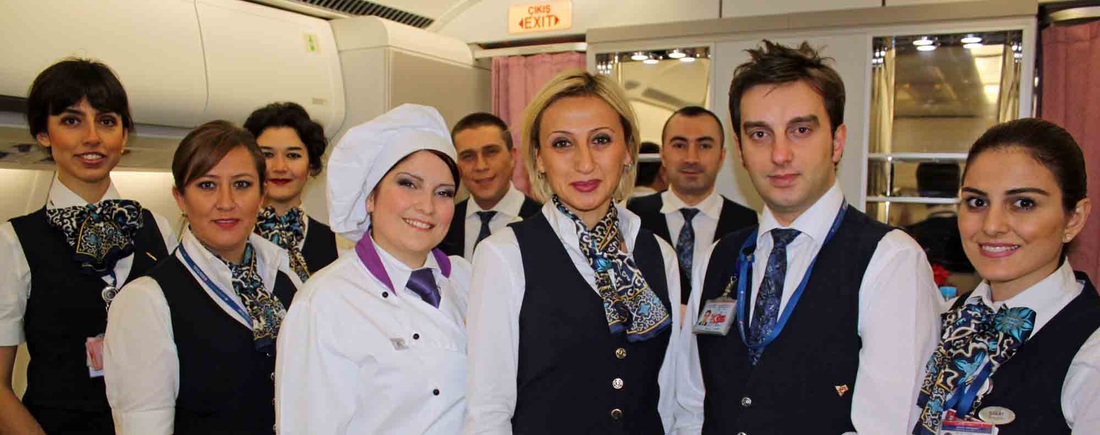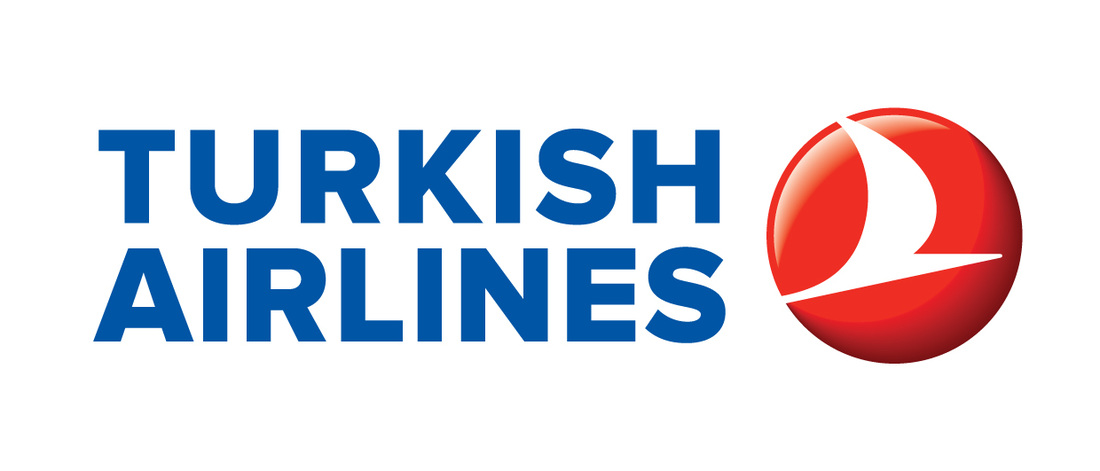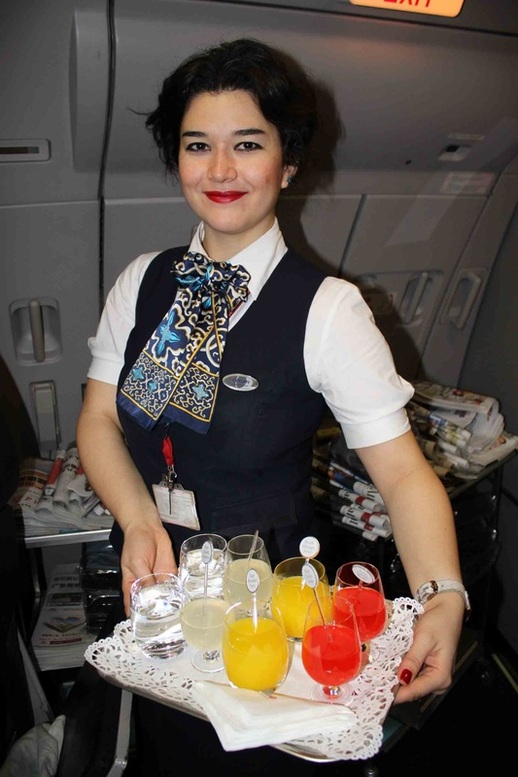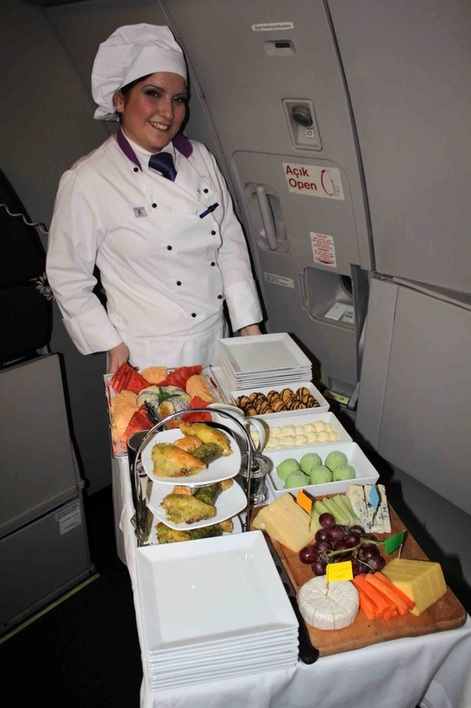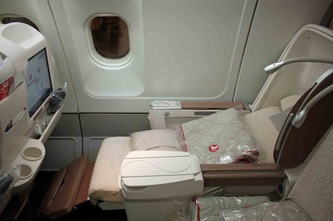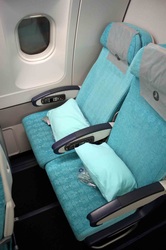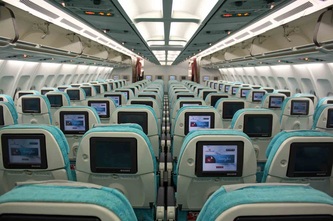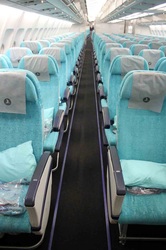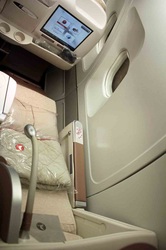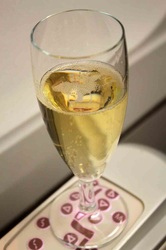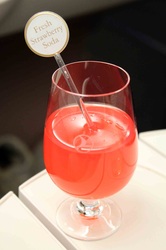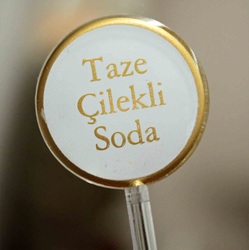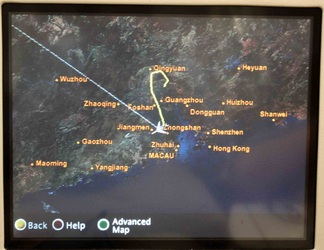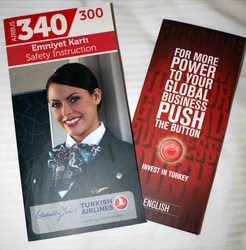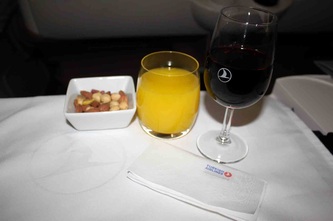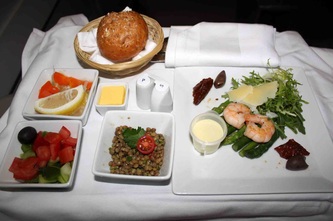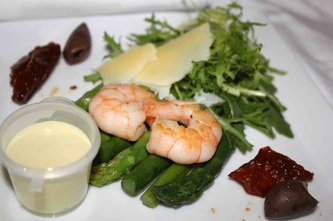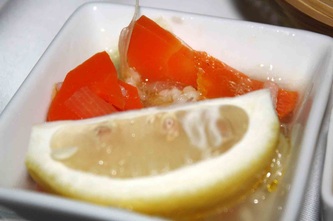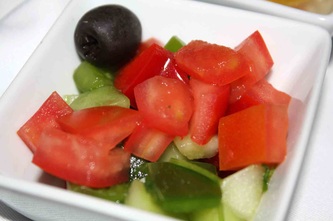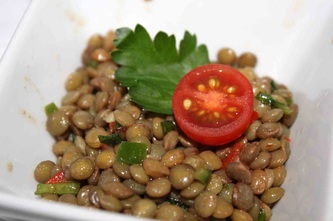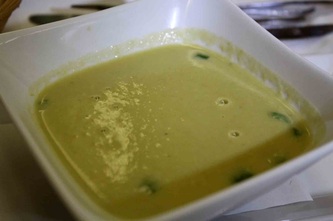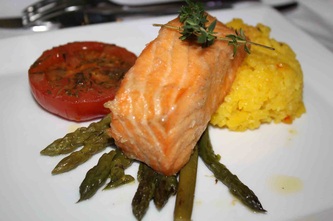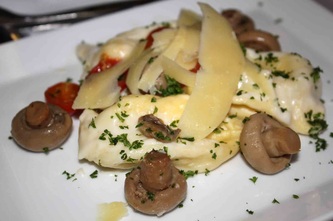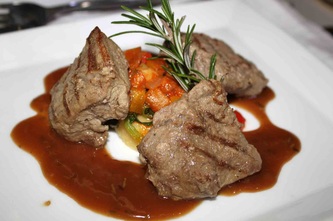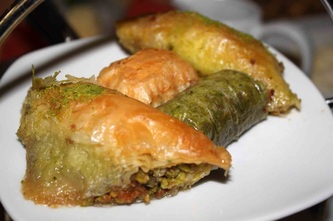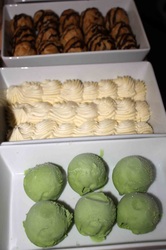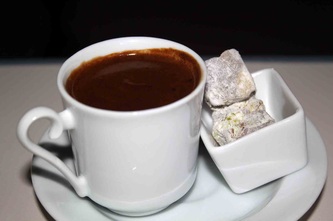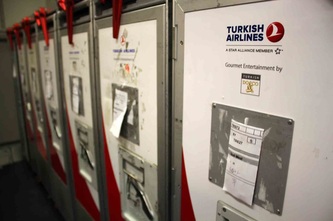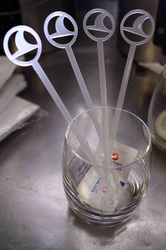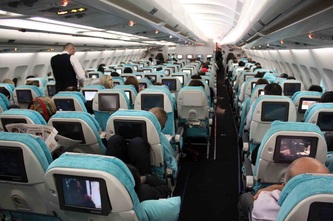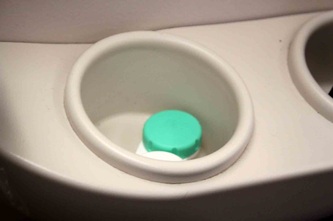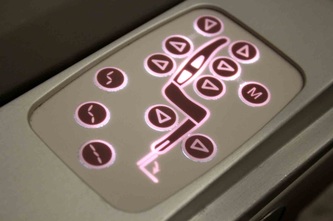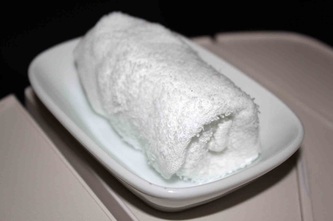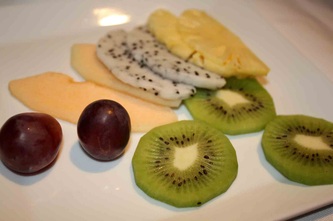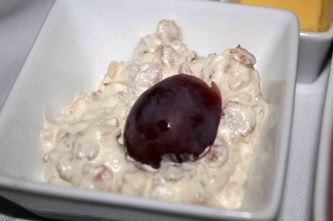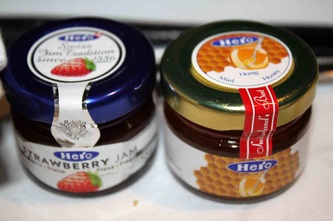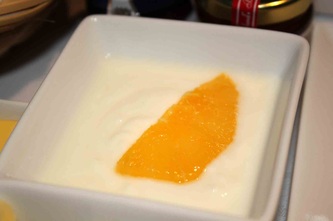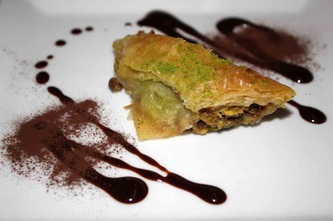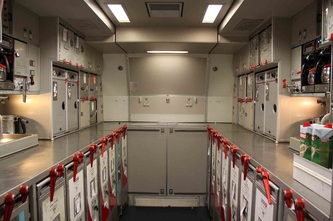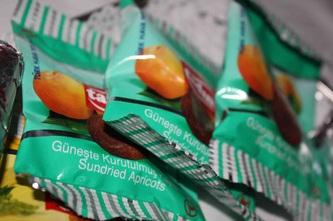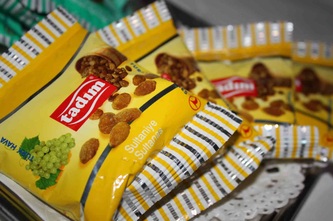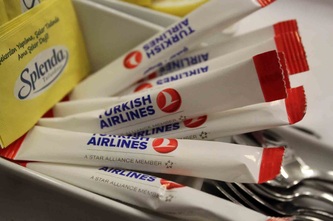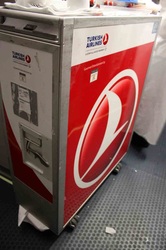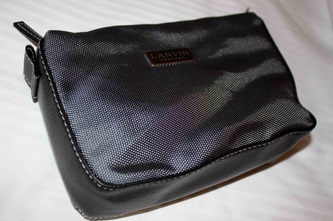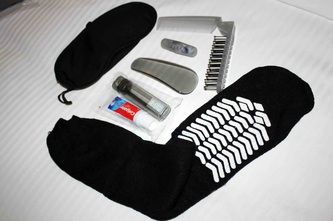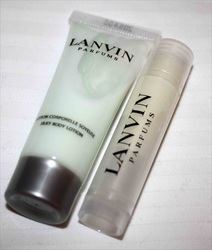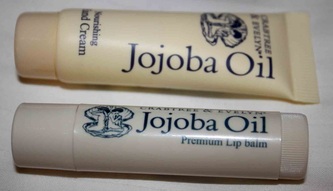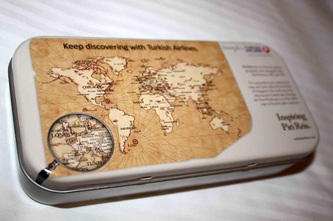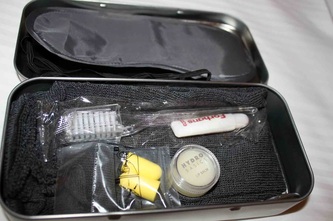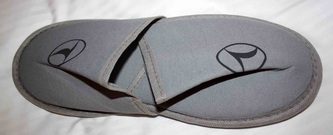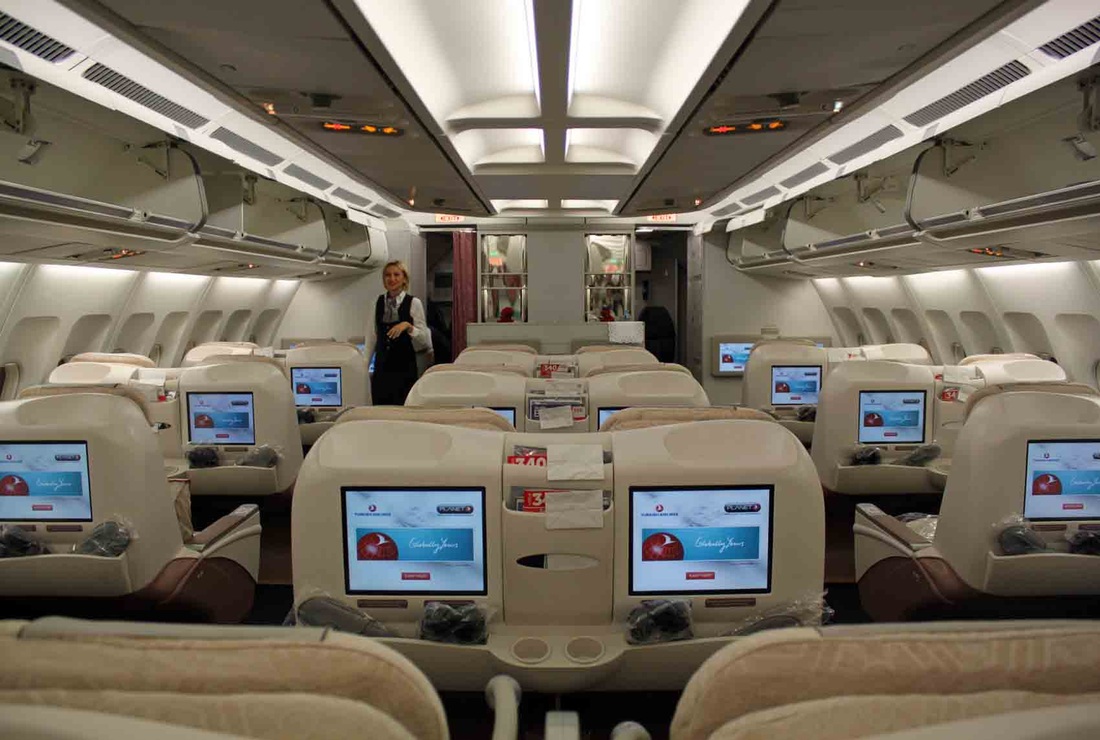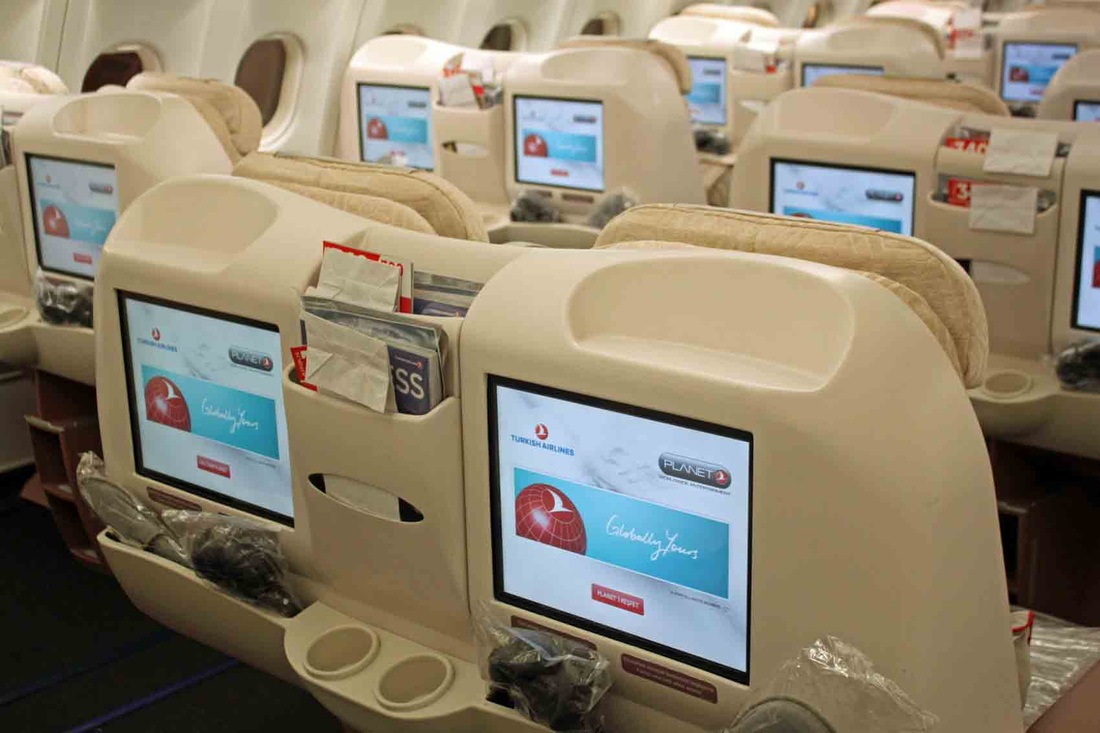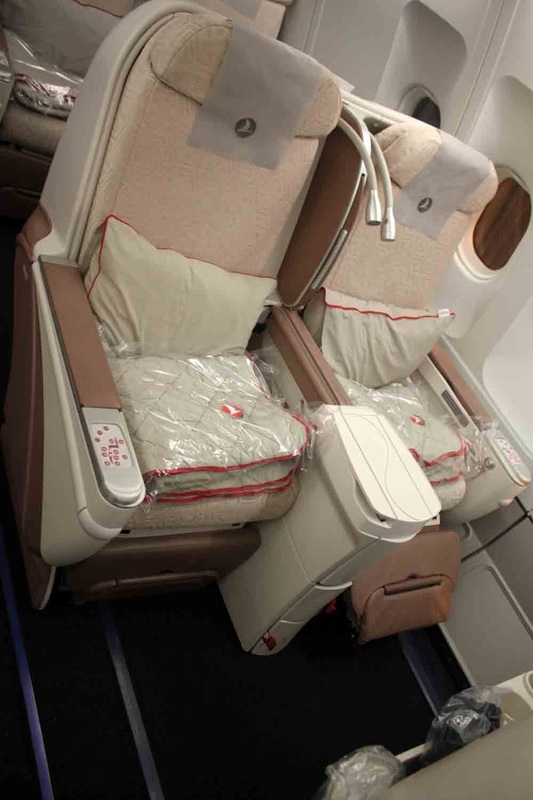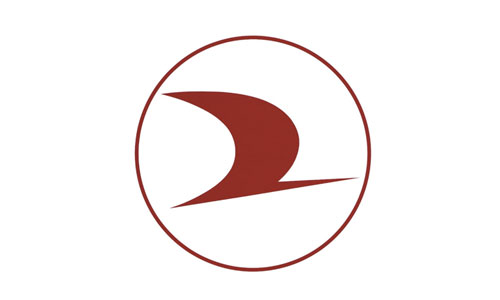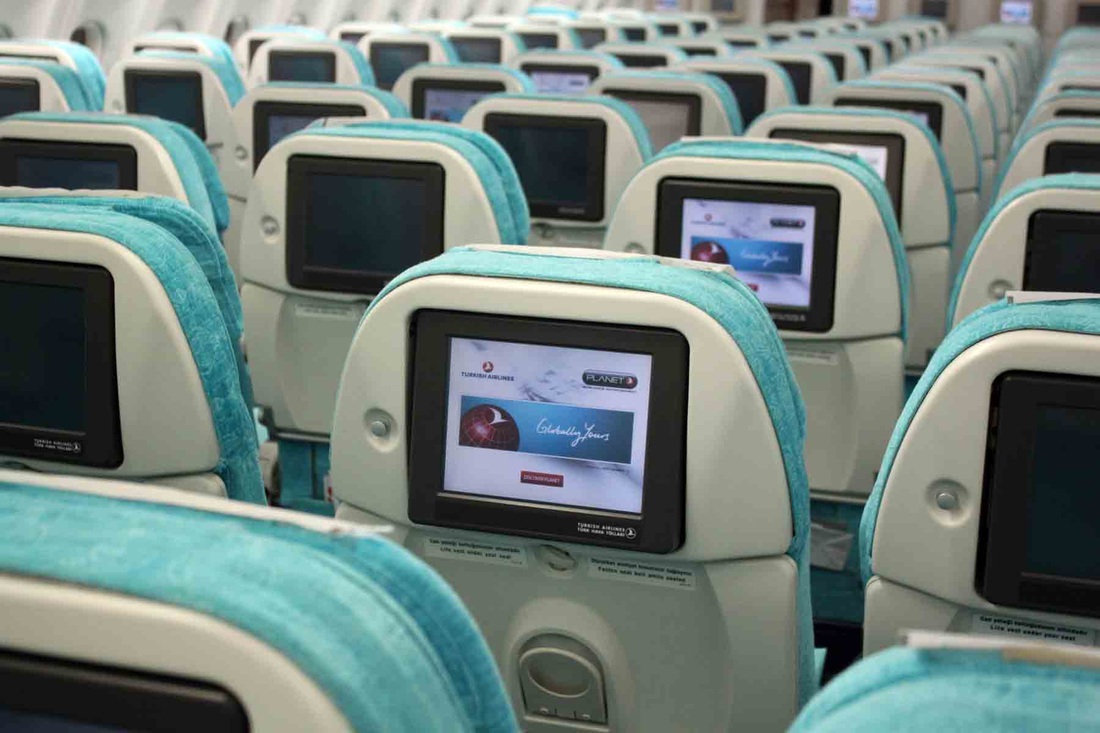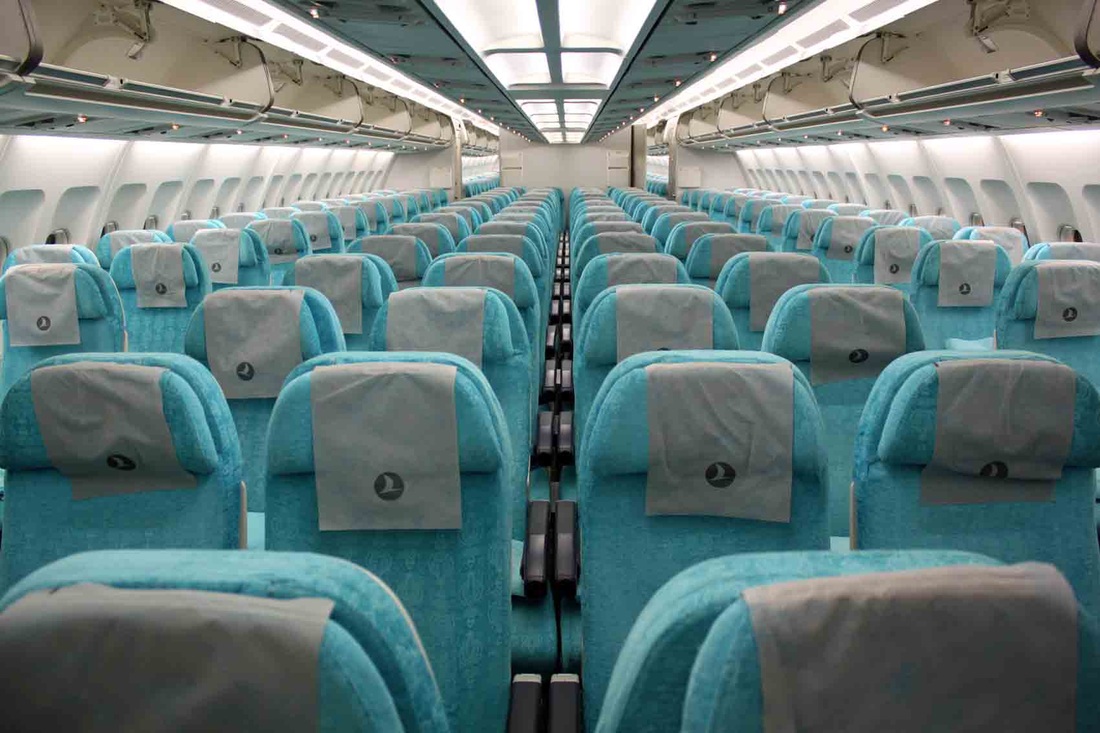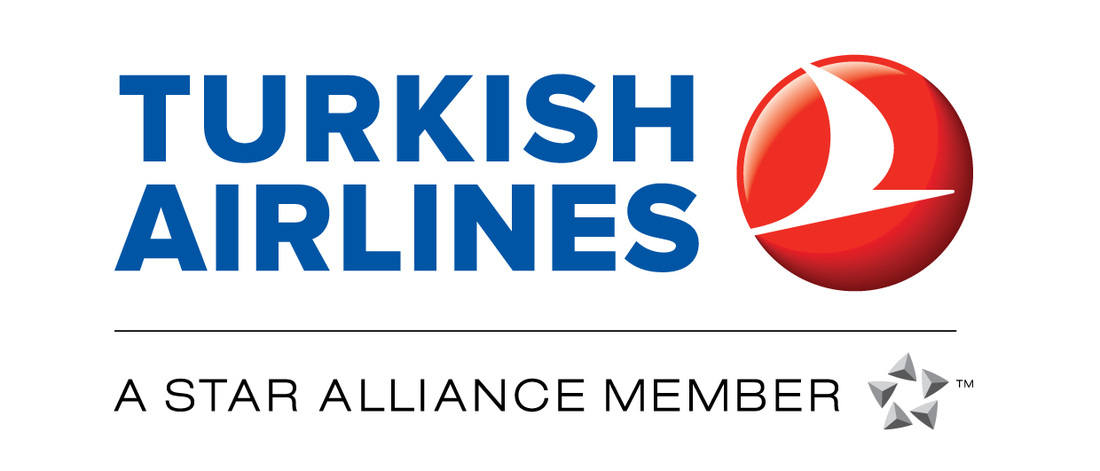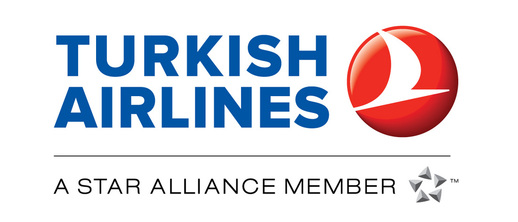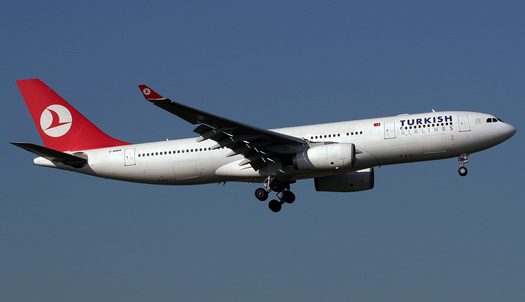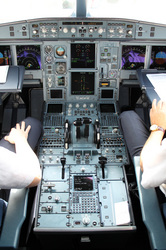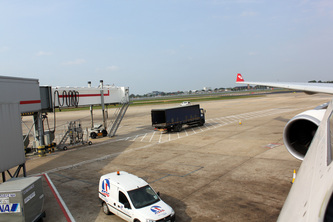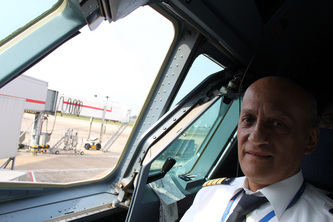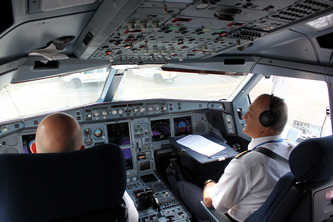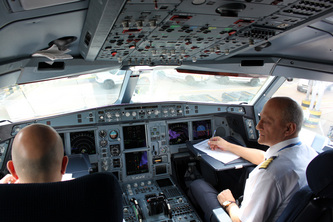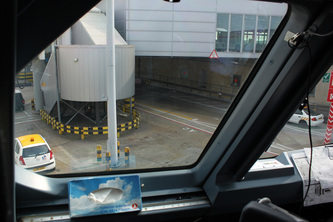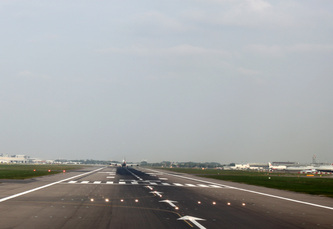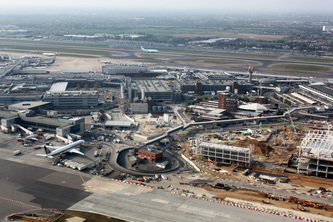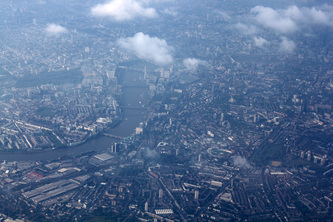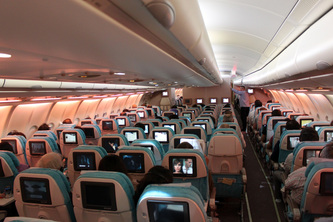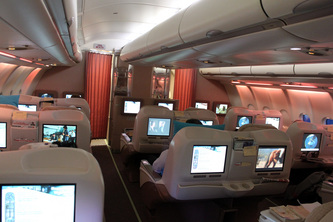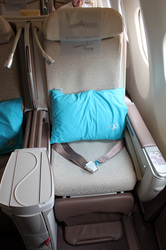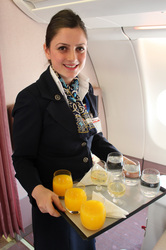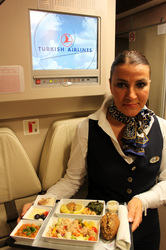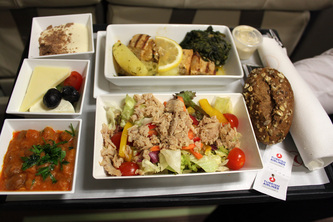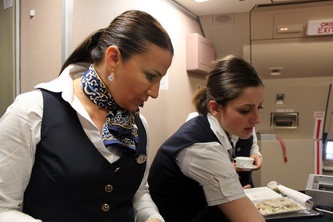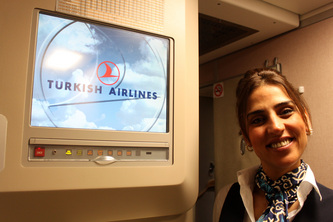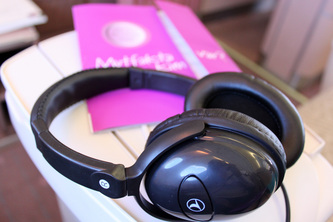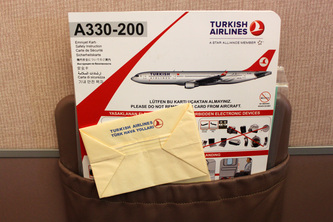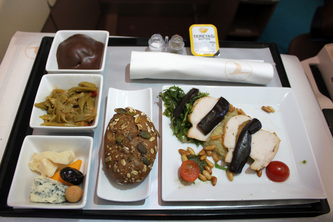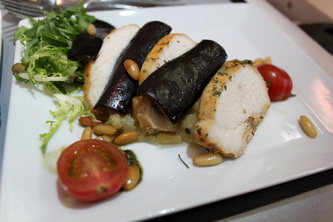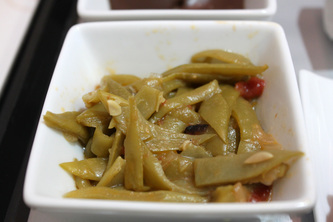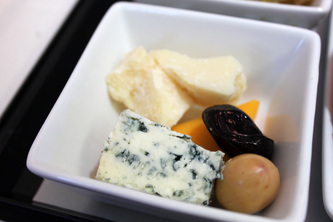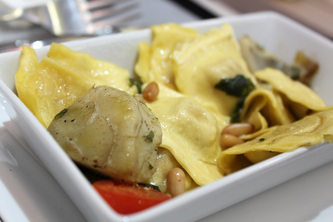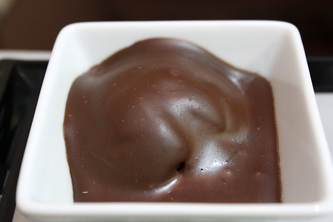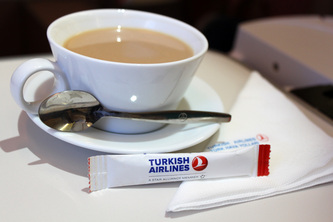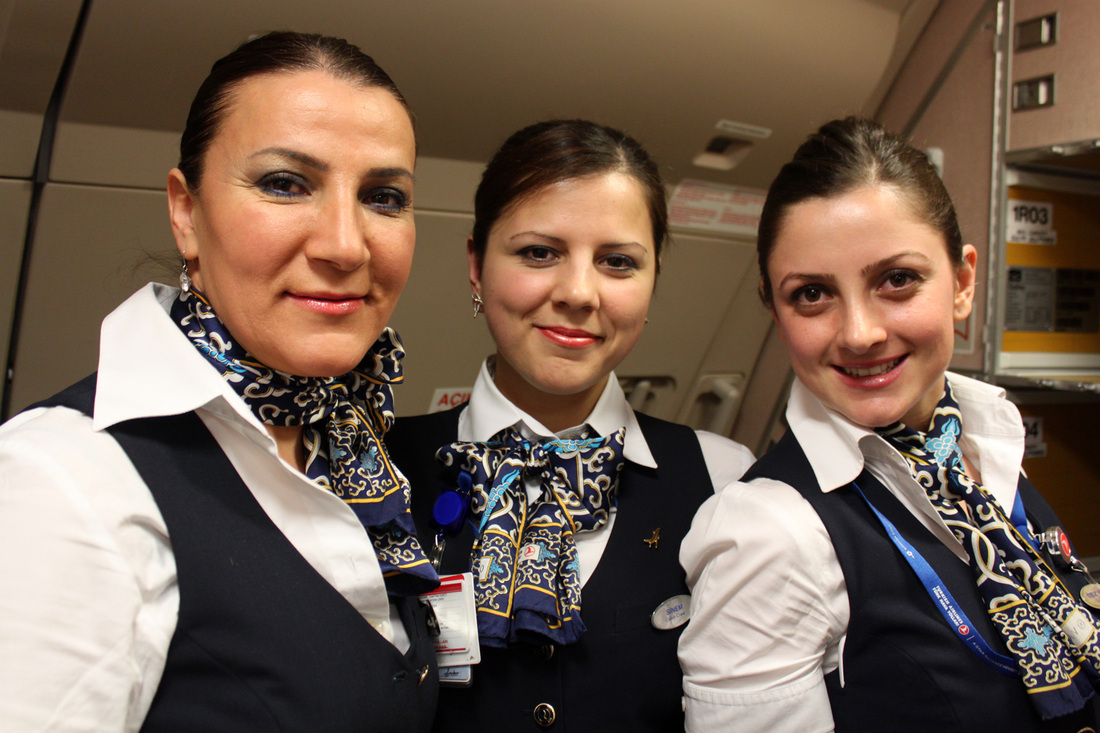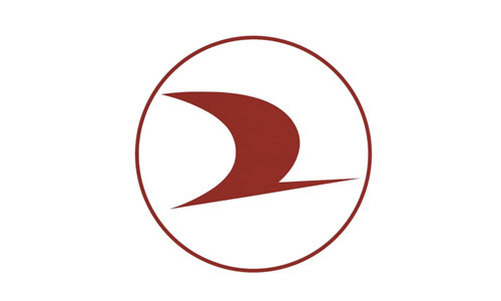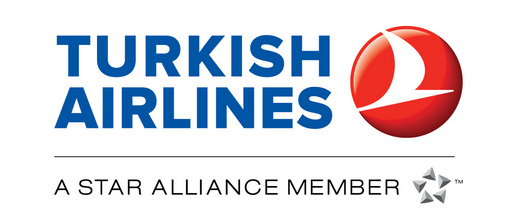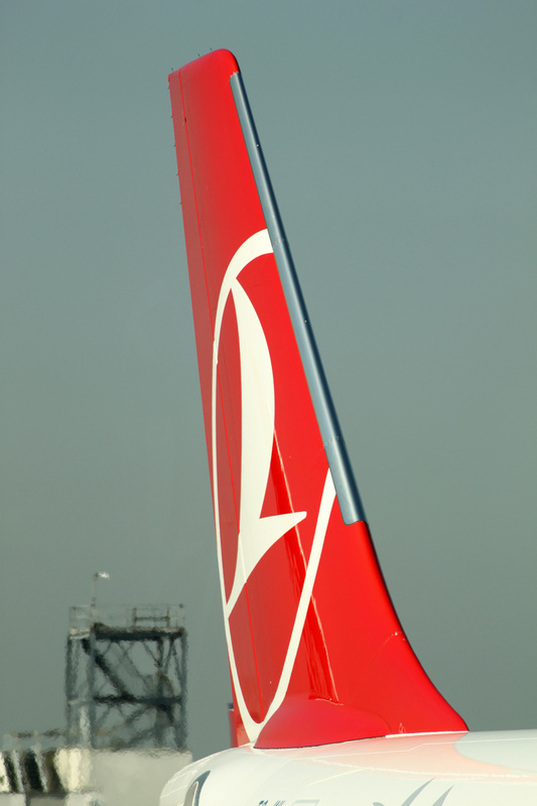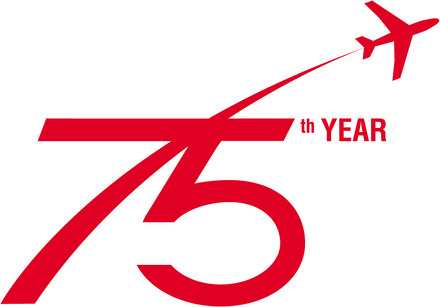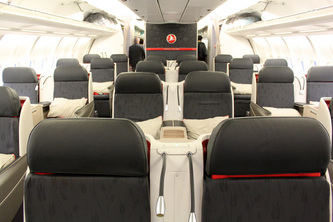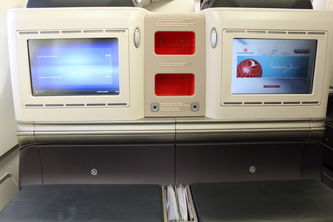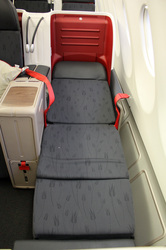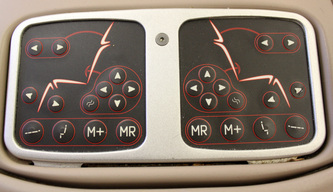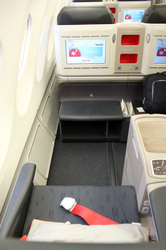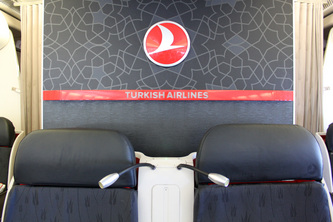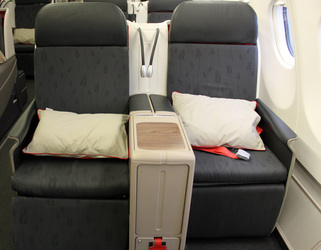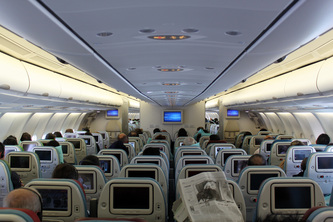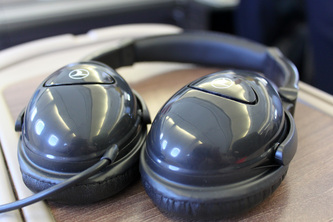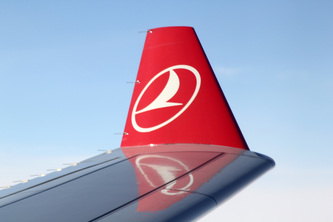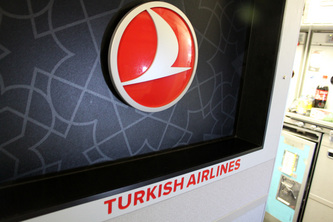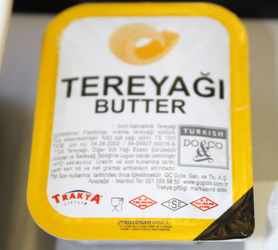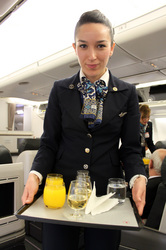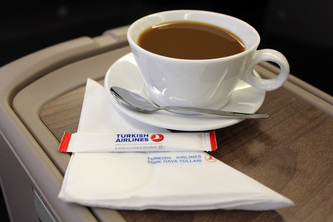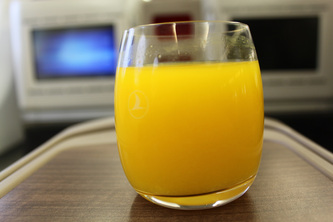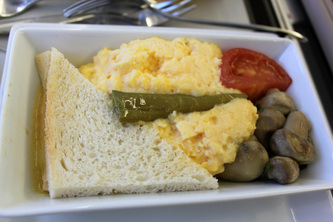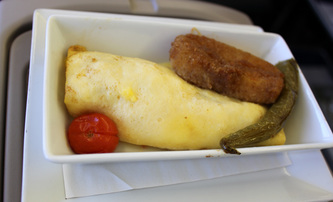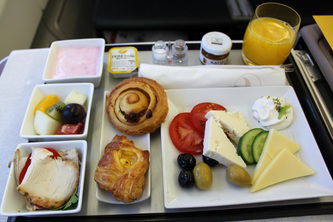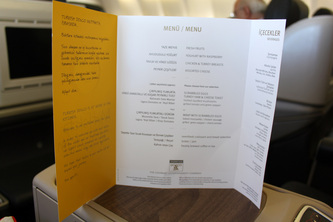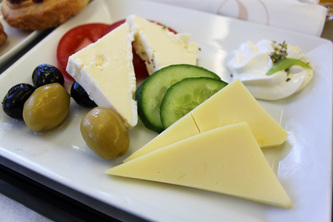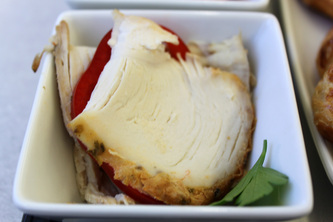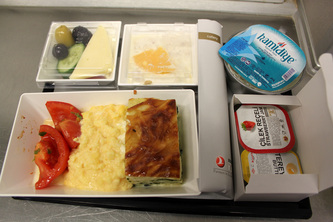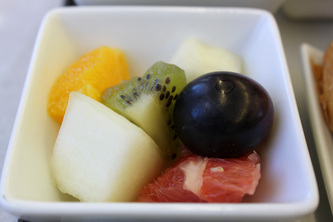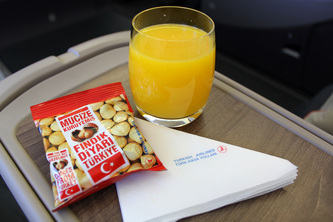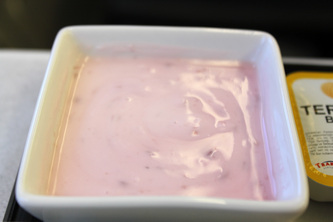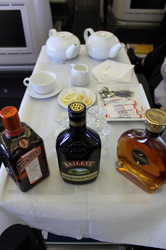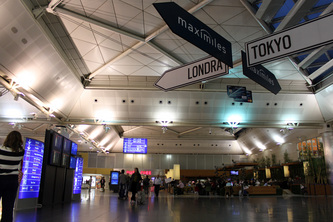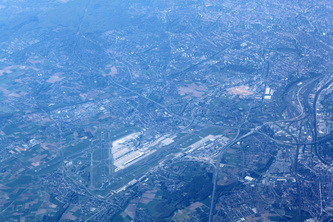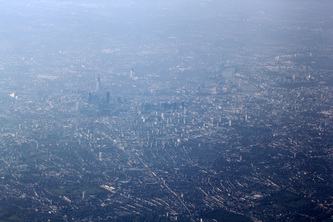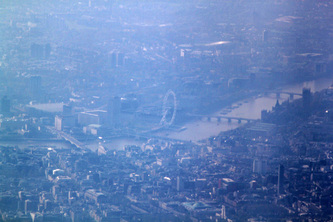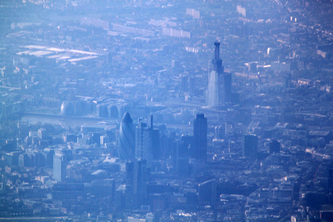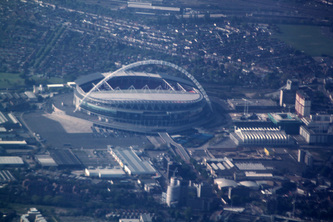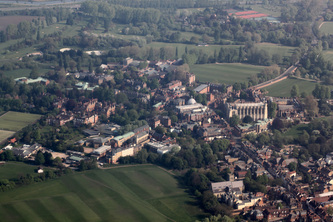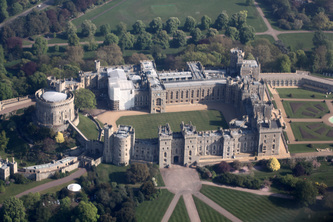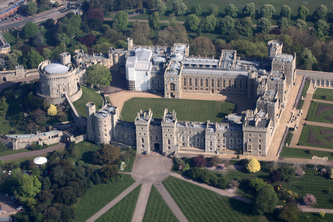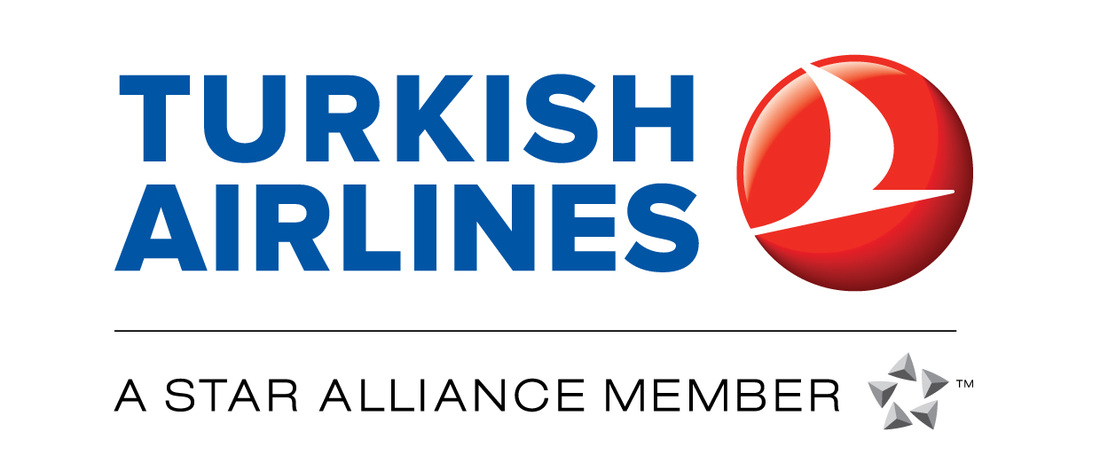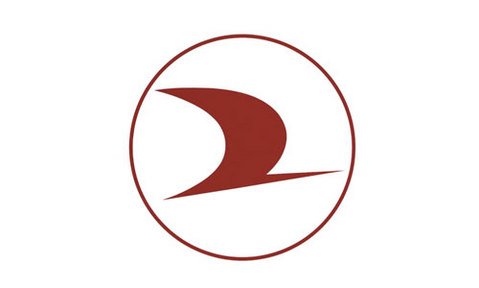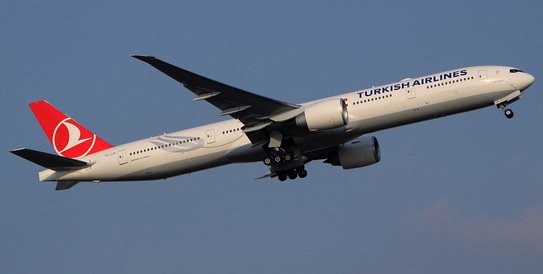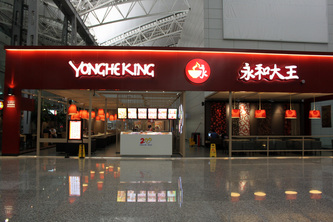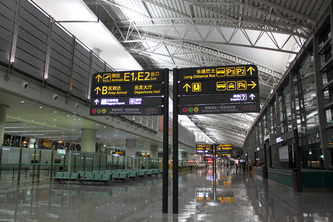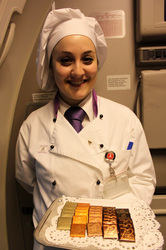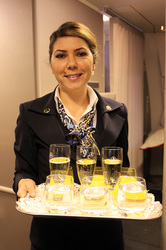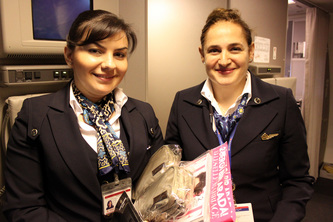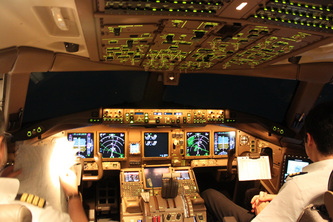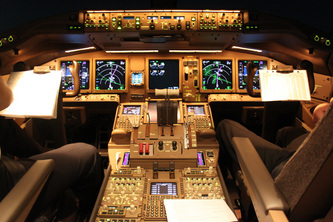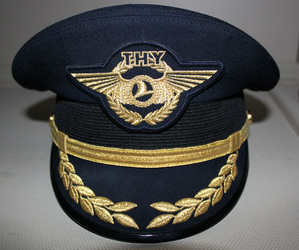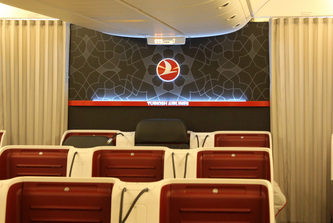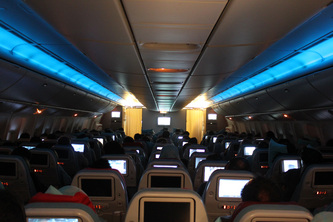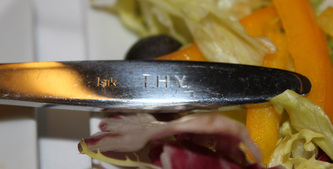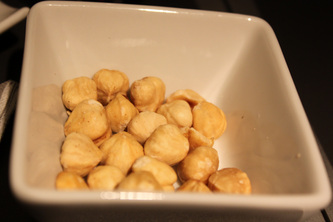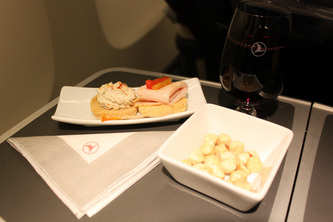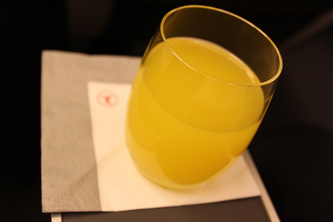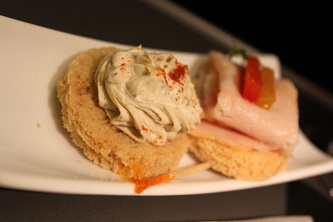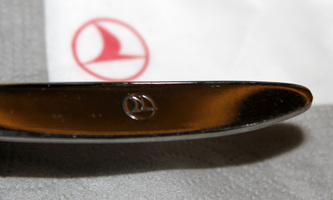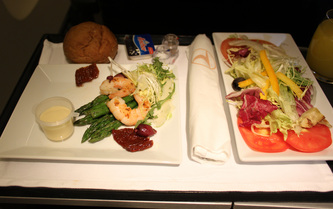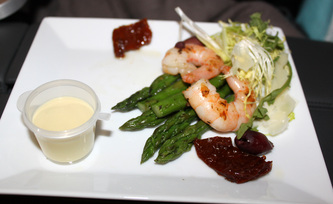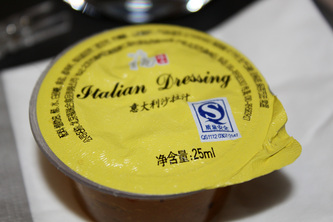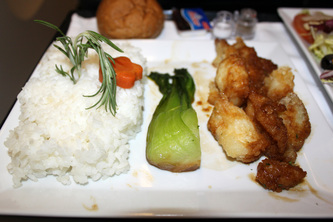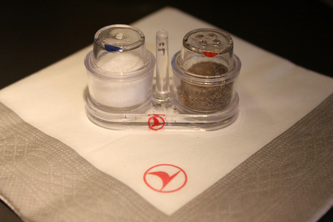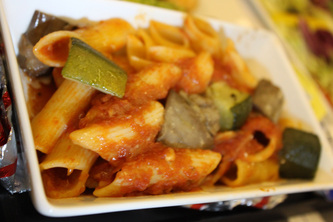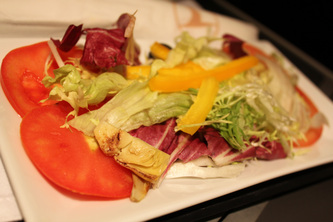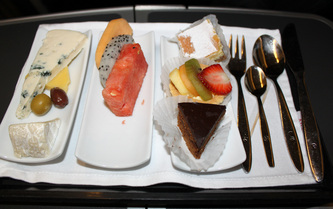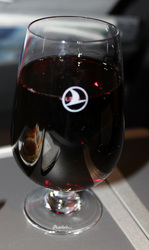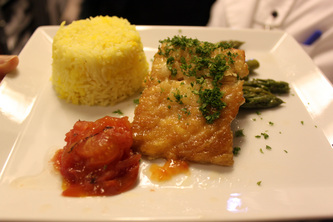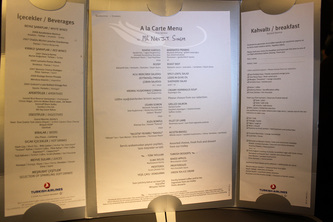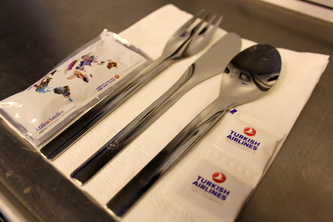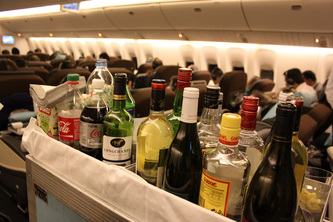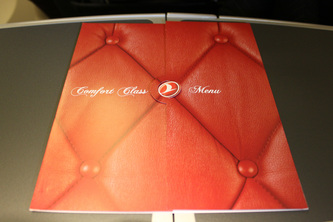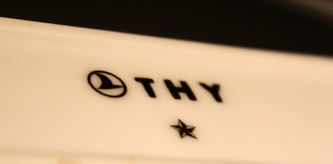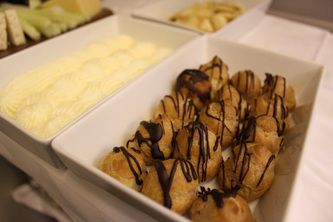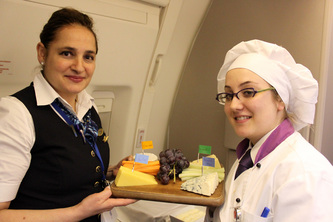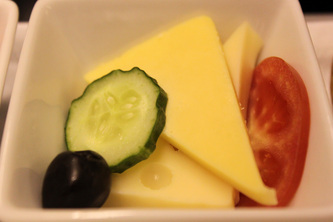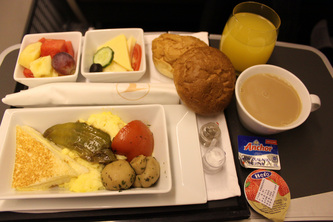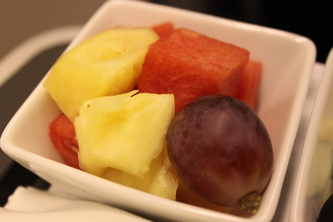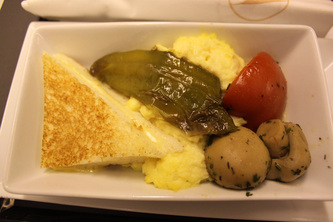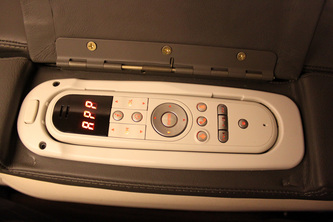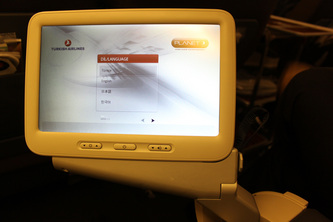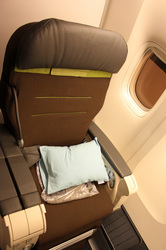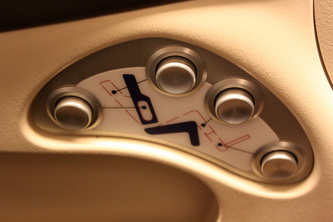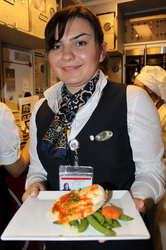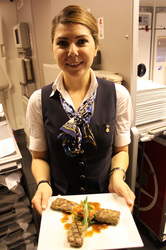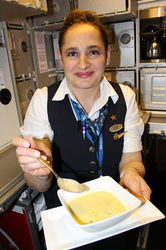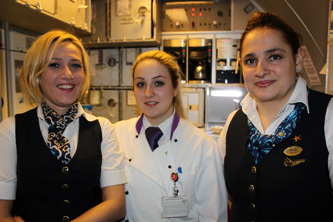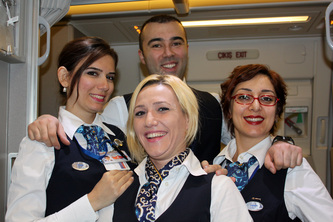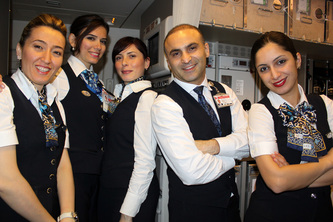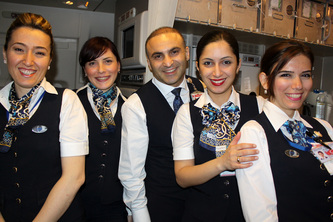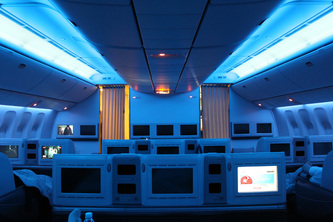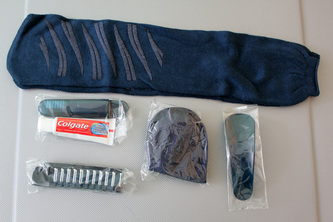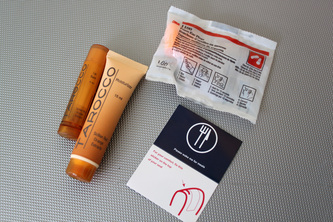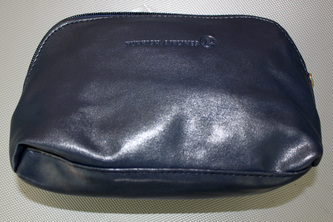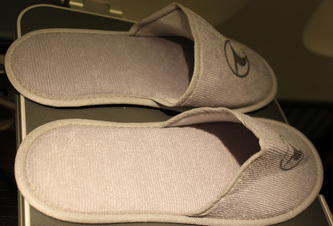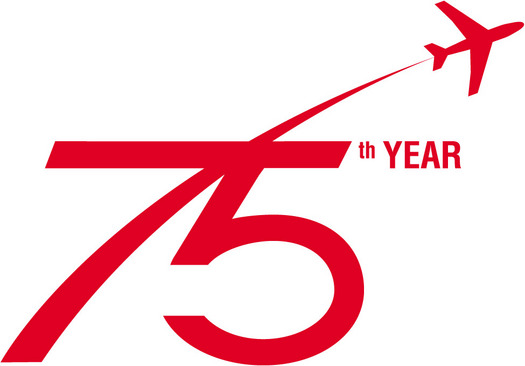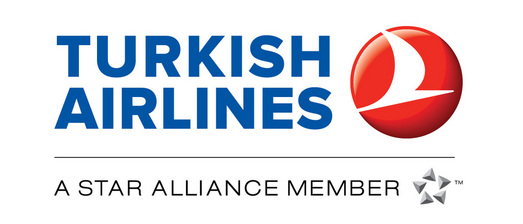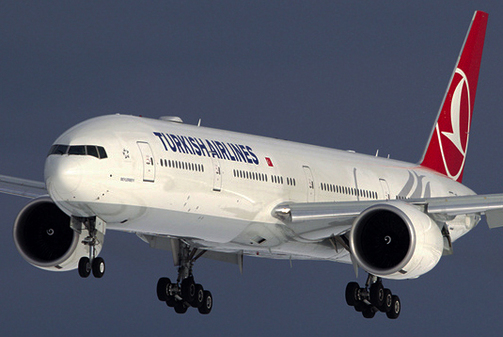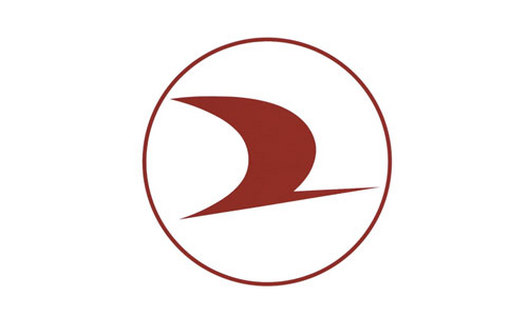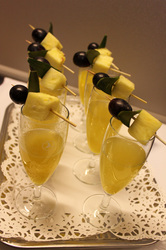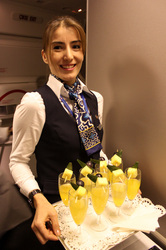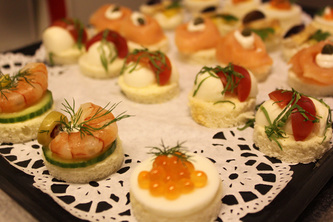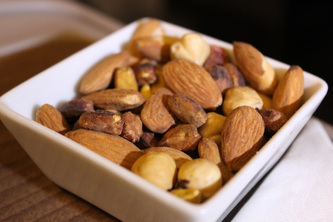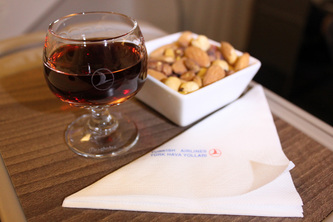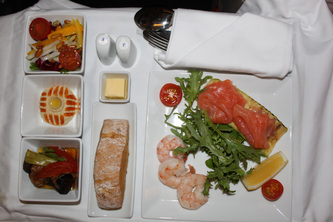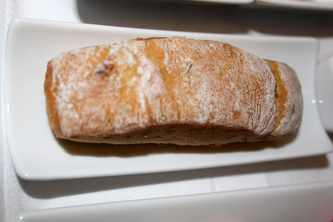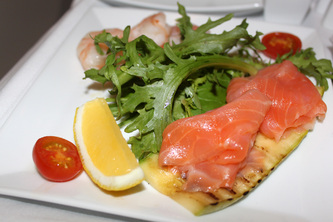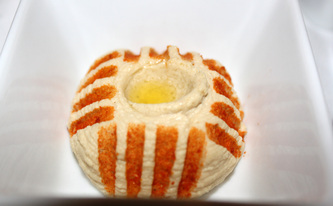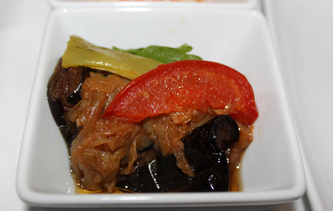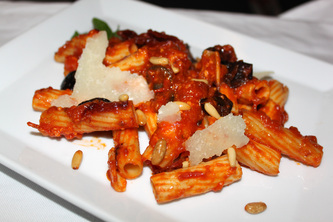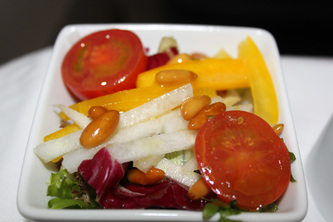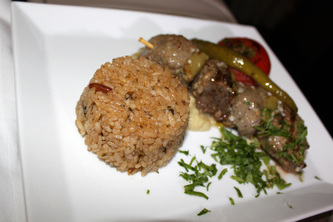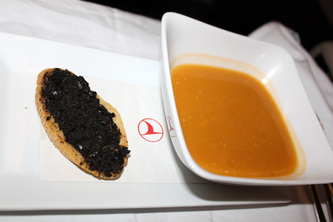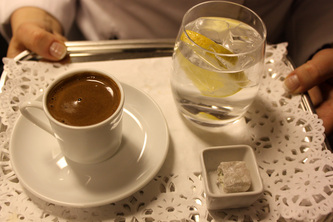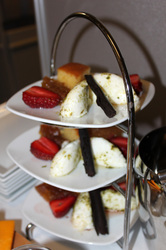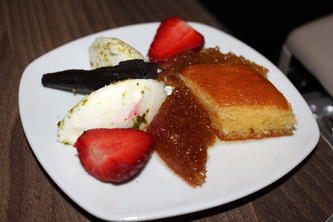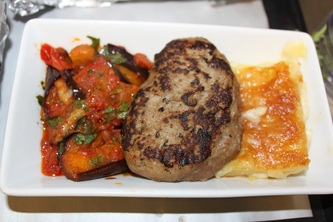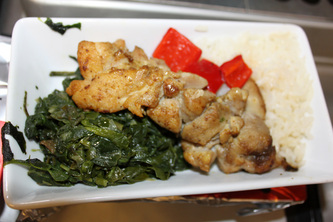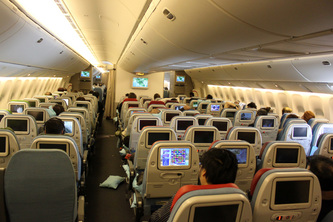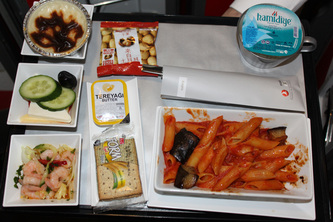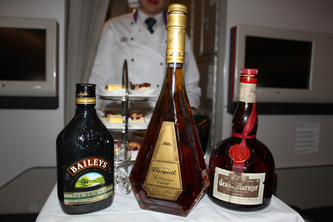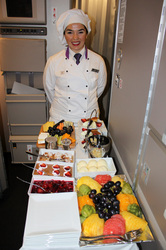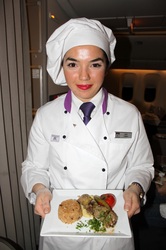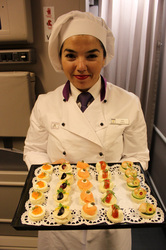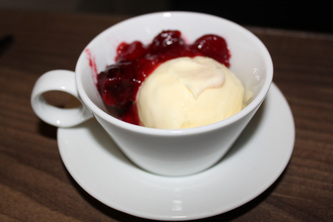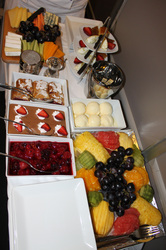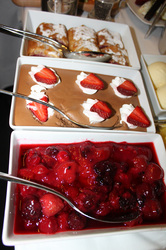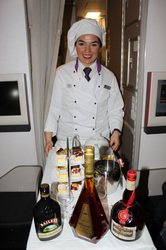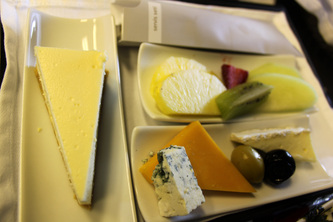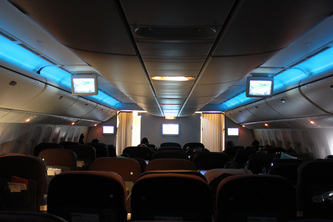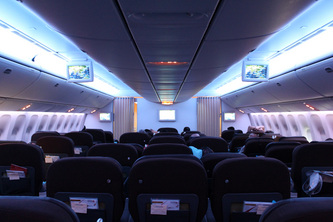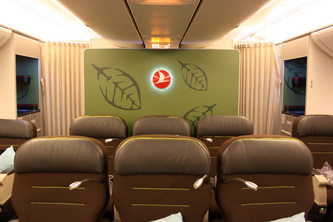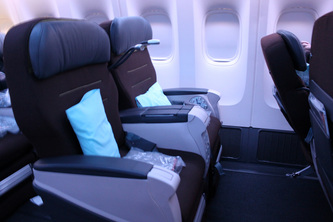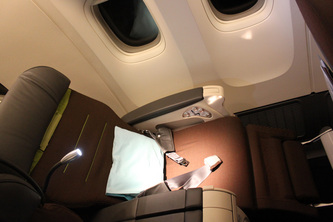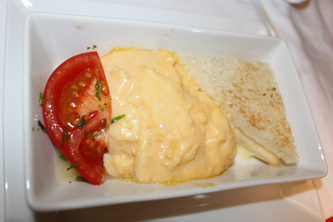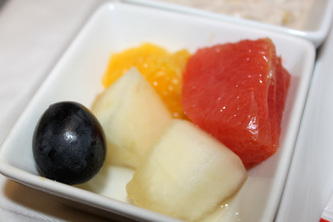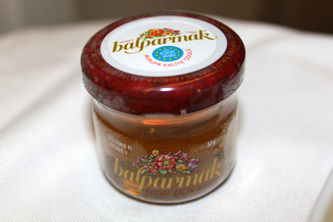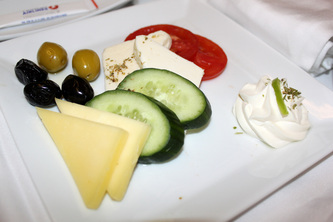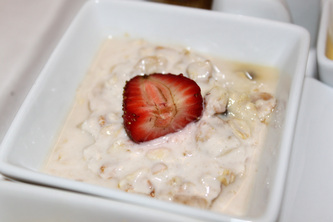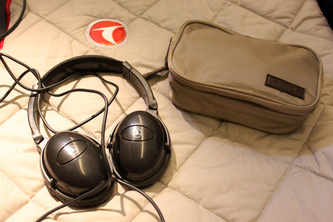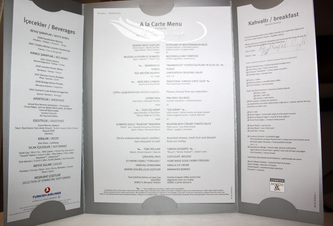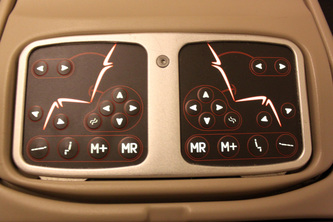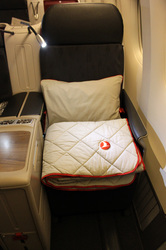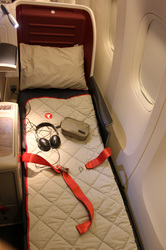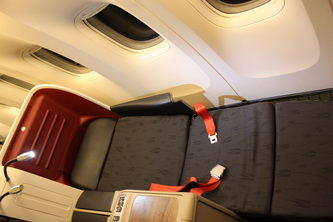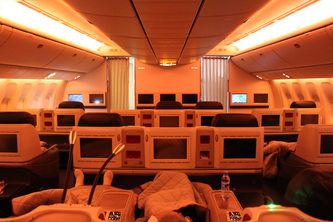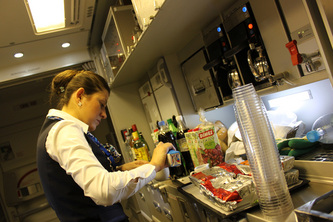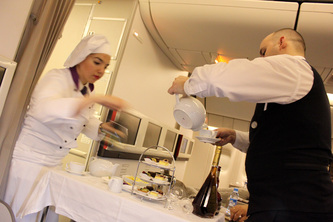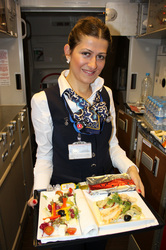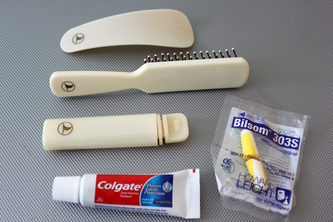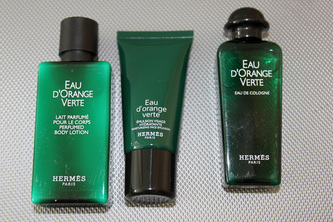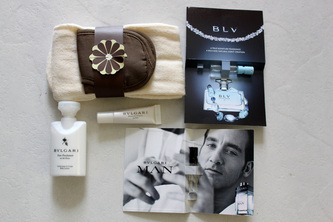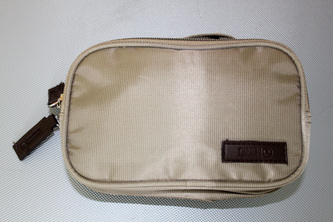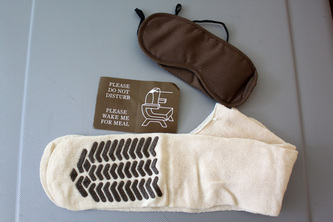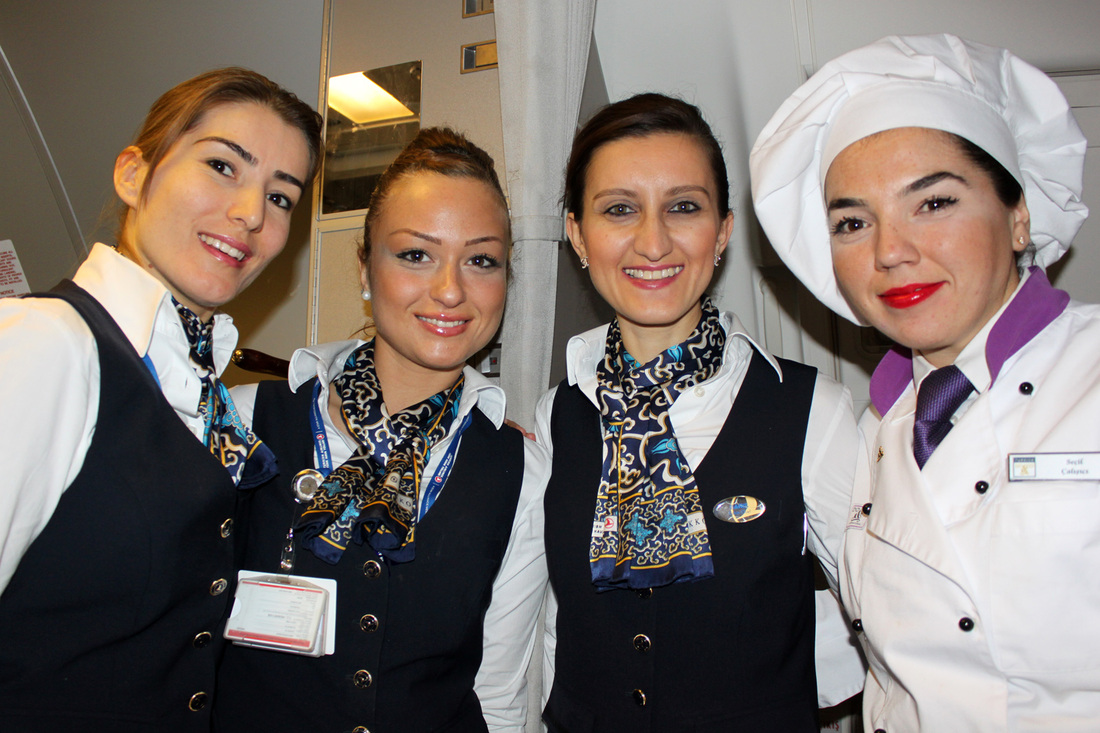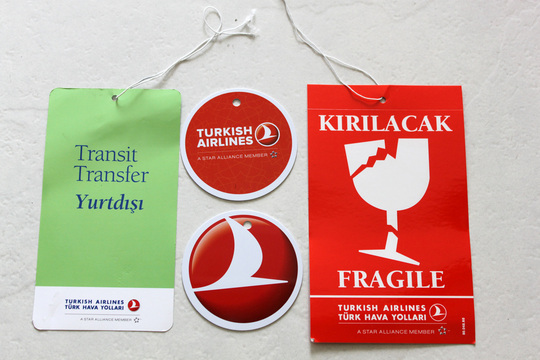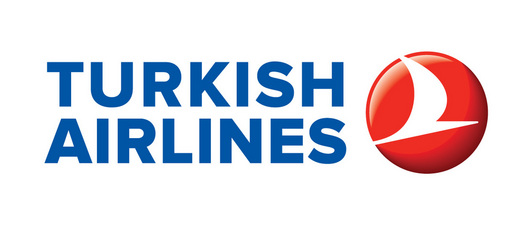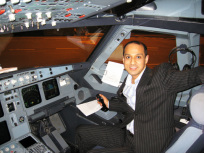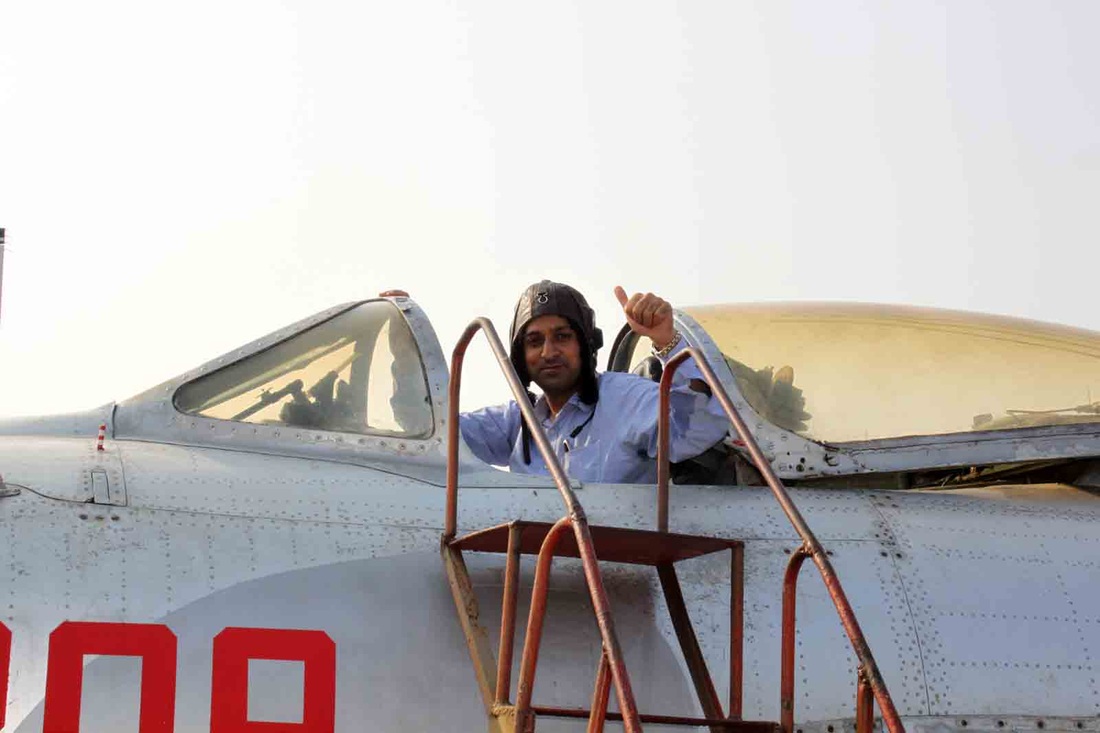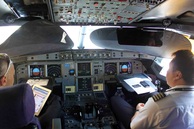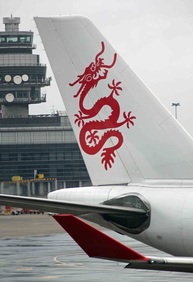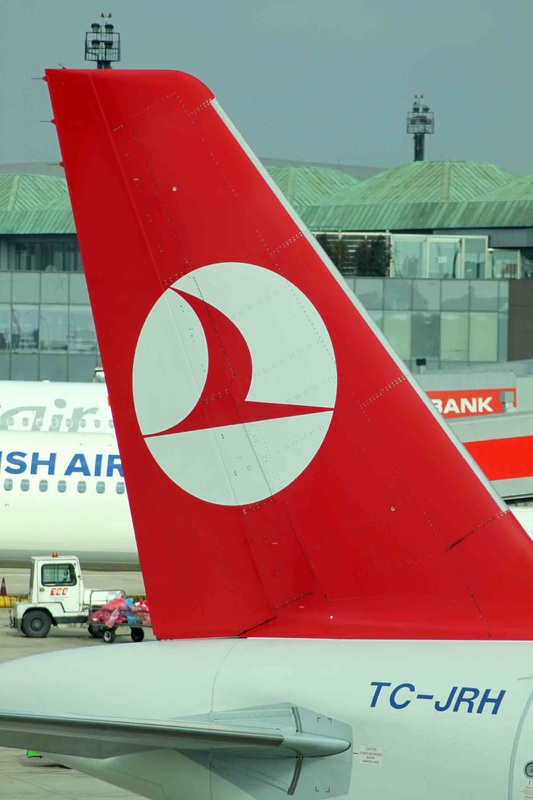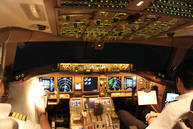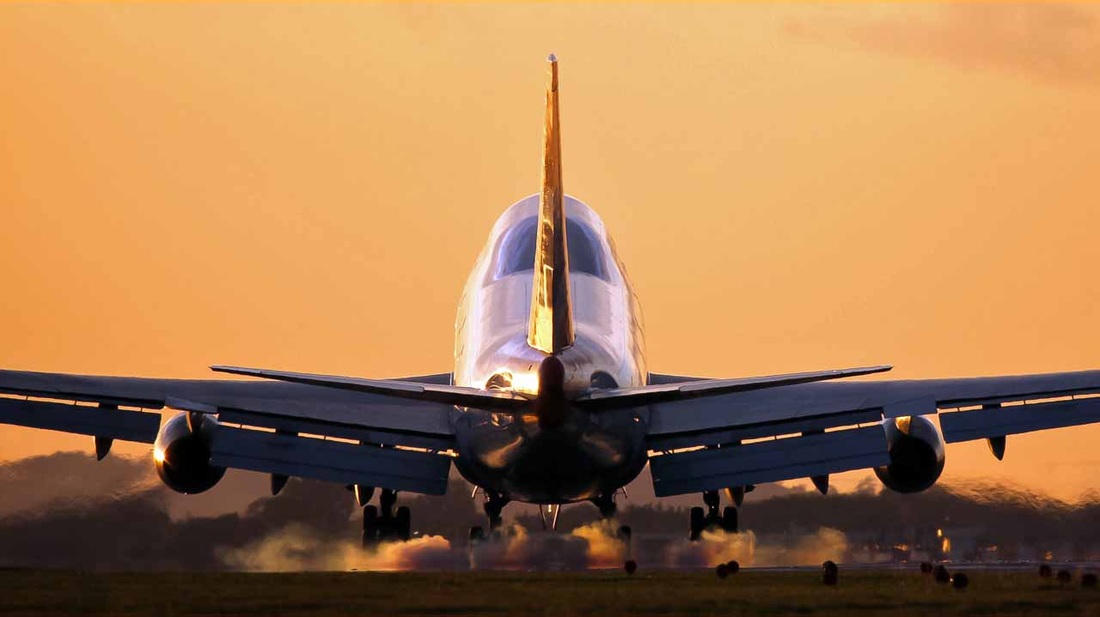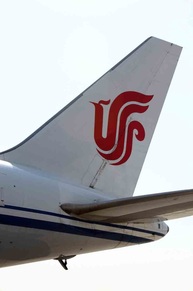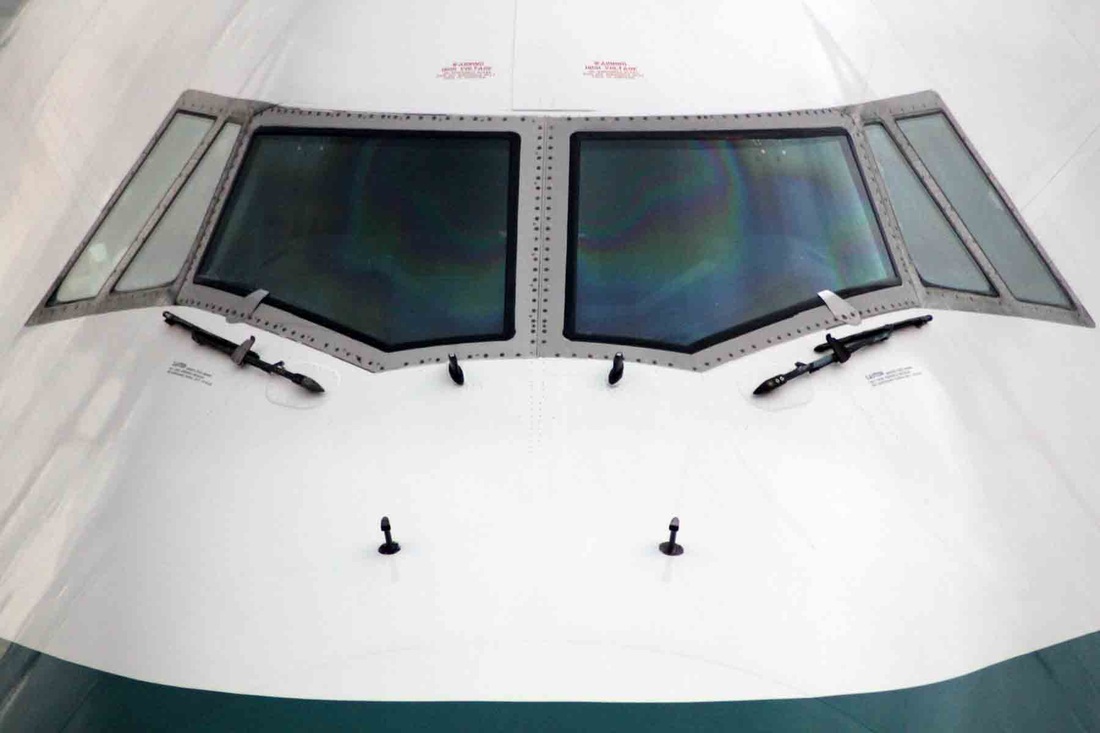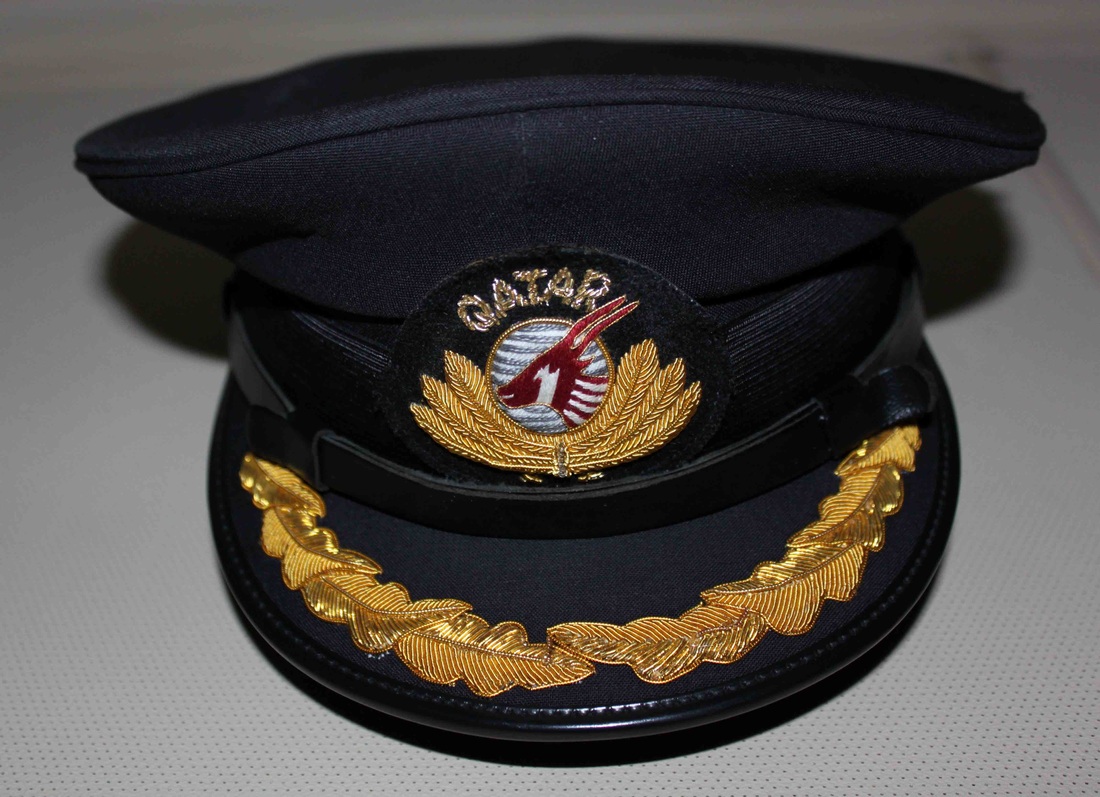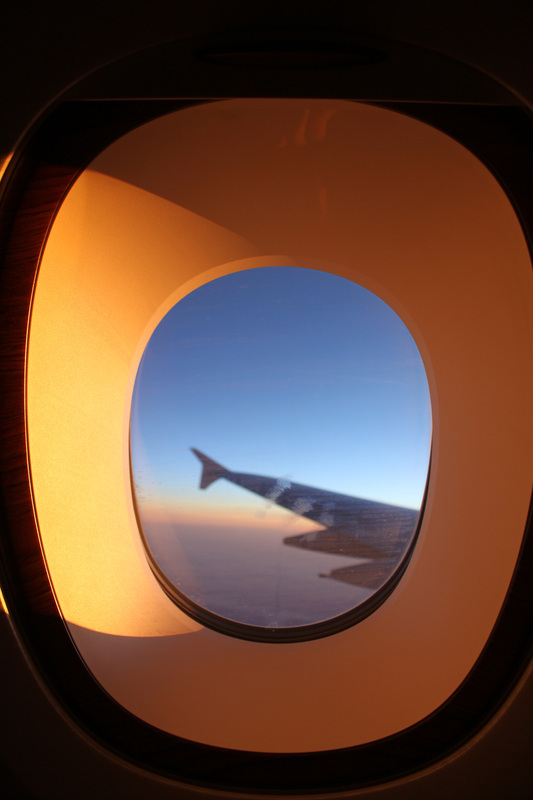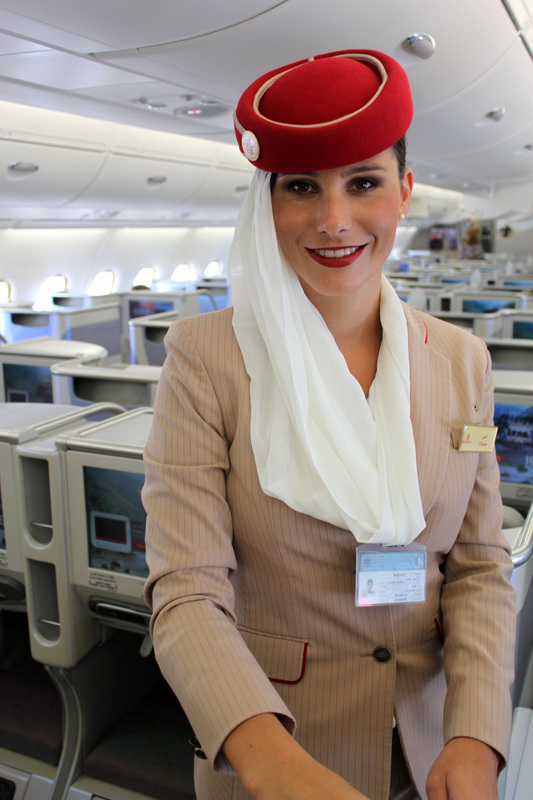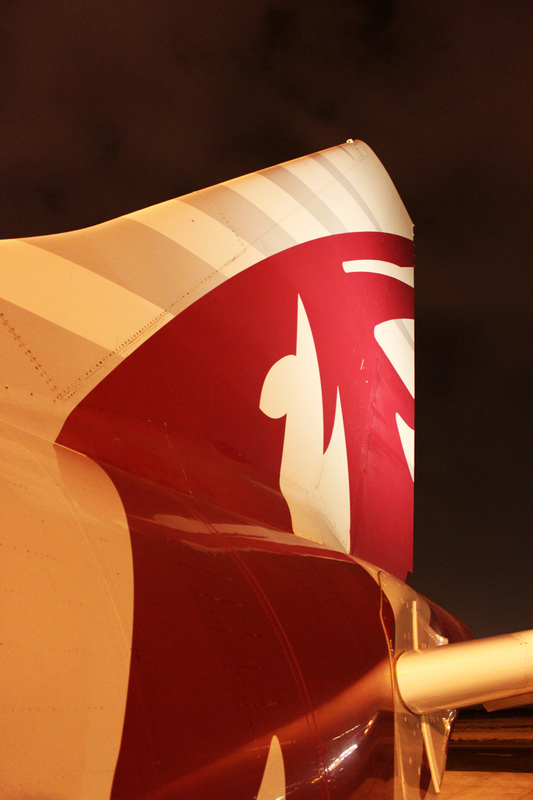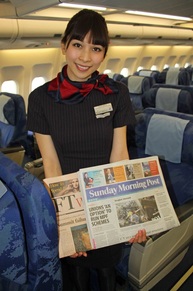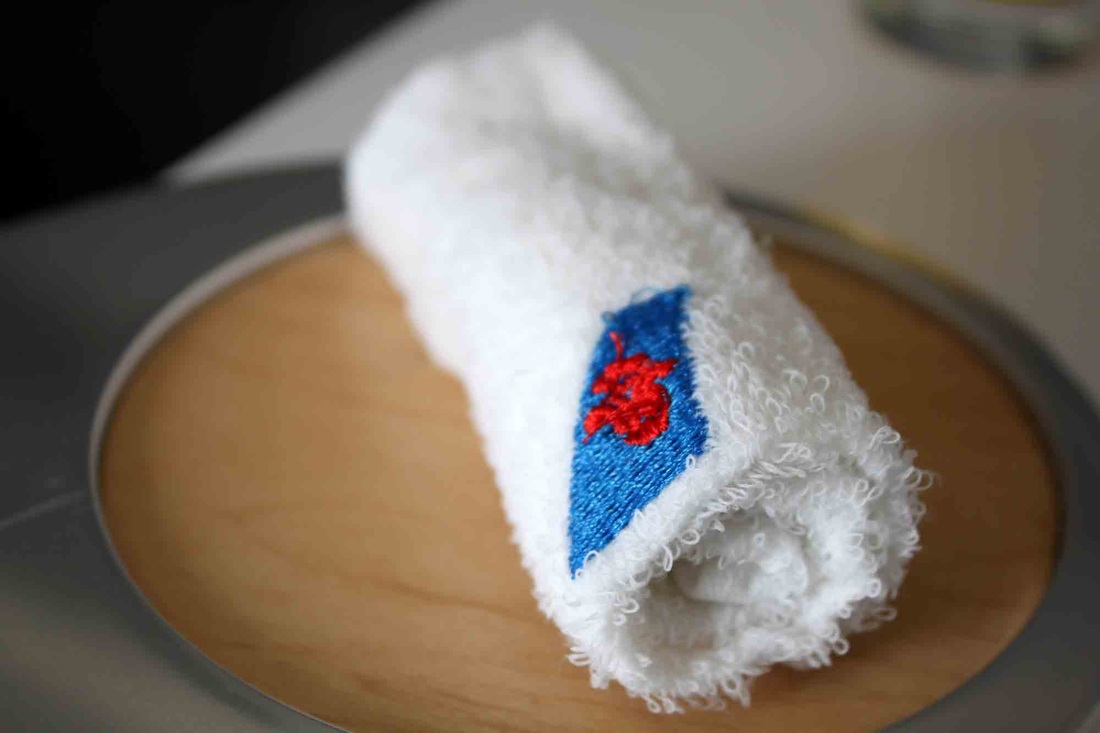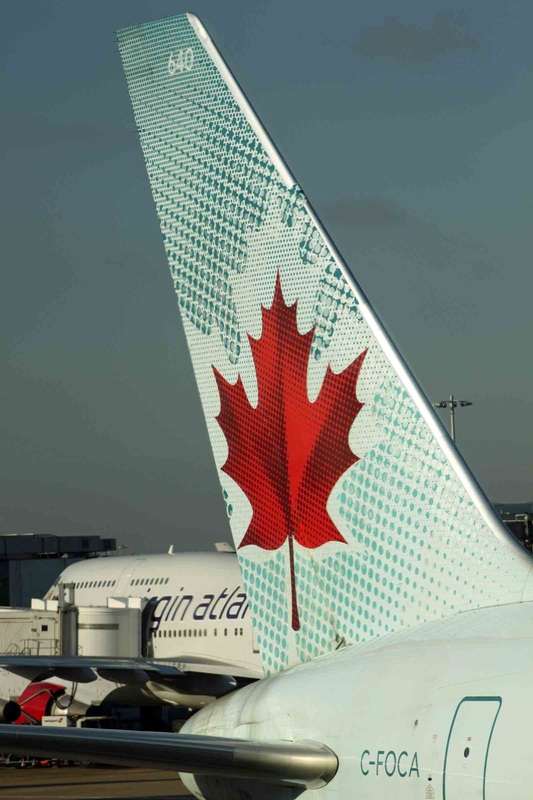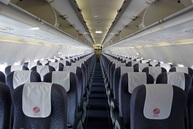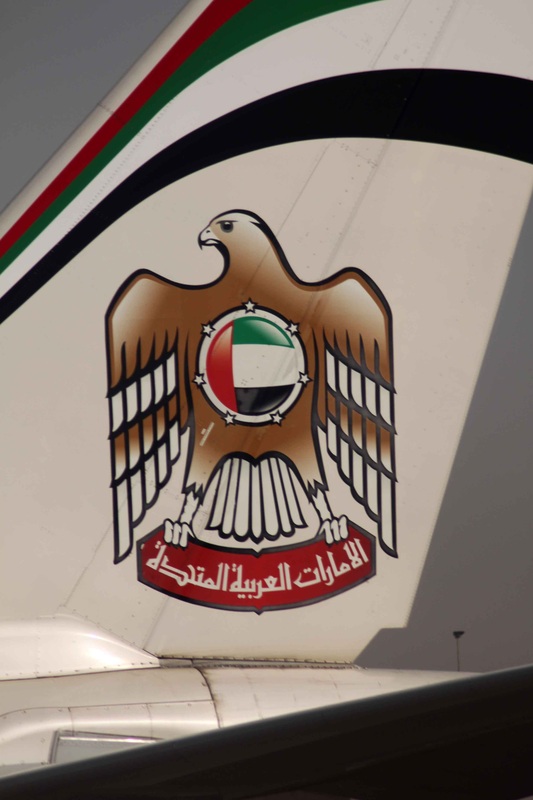|
As the main partner of the new Batman VS Superman Holywood movie, and to celebrate the launch of this blockbuster, Turkish Airlines, the national flag carrier of Turkey, decorated one of their aircraft in a dual-sided design for one of their 777-300ERs. On the boarding side, the superman logo is emblazoned on the empennage, whilst on the other, the large batman symbol can be seen. The airline even started an advertising campaign that promotes the carrier’s new routes Gotham City and Metropolis (which allegedly was the topic of some amusement, as after the commercial some people wanted to purchase tickets to the two fictional cities). The YouTube video has already reached over 27 million views in under two months, showcasing the success of this brand partnership for the carrier. THY Turkish Airlines is the award-winning national flag carrier of Turkey. Since being formed on 20th May 1933 with a fleet of 5 aircraft, Turkish Airlines has become a leading global airline company in its 80 years of distinguished service. Turkish Airlines is a proud member of Star Alliance, and operates from its global hub at Istanbul International Airport to 260 cities in 90 countries using 200 state-of-the-art aircraft. Turkish Airlines, which is a fully scheduled airline, carried 29.1 million passengers in 2010. It employs more than 14,000 people worldwide. In 2010, Turkish Airlines celebrated its 75th anniversary with a special ‘75’ logo painted on its aircraft and painted some its A320 aircraft in the old original 1970s airline livery. The initials 'THY' stand for Türk Hava Yollari (meaning Turkish Airlines).
In December 2012, Turkish Airlines finalized an order for 15 Boeing airplanes that will help it fly to more destinations globally. The order was valued at $4.7 billion at list prices although customers buying multiple planes often get a discount. Turkish Airlines currently has 12 777-300ERs and nearly 100 Boeing airplanes. The 777-300ERs seat up to 386 passengers in each individual aircraft. The Istanbul (IST) to London Gatwick (LGW) route is hugely popular with 14 flights a week between the two cities. Another strong connection between Turkish Airlines and the United Kingdom is that Turkish Airlines is the main sponsor of the Manchester United Football Club. The three and a half year ‘multi-million’ pound deal was signed in 2010. The airline has invested a lot of money in working with big brands and prompting its own brand globally. In contrast to other European flag carriers in the 21st century, Turkish Airlines is proud to be the fastest growing airline in Europe and has been consistently been voted the best airline in Europe by its passengers and officially by SKYTRAX. Recent announcements in 2012 solidified Europe’s Best Airline’s Partnership with global sports figures. For example, International soccer superstar Leo Messi was named Global Brand Ambassador for Turkish Airlines at a ceremony in September 2012 at the Camp Nou Stadium in Barcelona, Spain, after signing the agreement. The FC Barcelona forward joins the ranks of Los Angeles Lakers star Kobe Bryant and professional tennis player Caroline Wozniacki who have been brand ambassadors since 2011 and 2010 respectively. Turkish Airlines now officially flies to more destinations globally than any other airline. In the United Kingdom, apart from London Gatwick, Turkish Airlines also flies regular scheduled flights to London Heathrow, Birmingham, Manchester, and Edinburgh (THY used to fly to schedule flights to Stansted, now it is just for charter flights). In total Turkish Airlines operates 65 flights a week between Istanbul and the United Kingdom, including 44 flights a week between London and Istanbul (Heathrow and Gatwick combined). Another strong indicator of this is that because Turkish Airlines is a proud member of Star Alliance, whose members also include Lufthansa, United Airlines, and BMI. So therefore, because of this link with Star Alliance, this flight was in code share with Lufthansa and BMI. Turkish Airlines usually operate the Istanbul to London Gatwick route using the Boeing 737-800. However on this occasion the Airbus A321-231 was deployed, and it was a pleasure to fly this beautiful aircraft. I decided to check out their Business Class on this relatively short haul daytime flight. Route: ISTANBUL (IST) to LONDON GATWICK (LGW) Departure date and time of flight: December 2012, 12:25pm local time (Istanbul) Flight number: TK1997 IACO Callsign: Turkish Flight duration: 3 Hours 50 minutes Class: BUSINESS CLASS Aircraft type: AIRBUS A321-231 (32 aircraft in service) Aircraft registration: TC-JRS (Delivered on 29th June 2011) First flight: 21st June 2011 Aircraft’s name: Datça Test registration: D-AVZJ Aircraft serial number: 4761 Aircraft Engines: 2 x IAE V2533-A5 Frequent flyer programme: miles & smiles In-flight magazine: SkyLife Magazine Seat configuration for this aircraft: Business Class: 28 seats in a 2-2 configuration, Economy Class: 152 seats in a 3-3 configuration Comments on the check-in staff and any issues: No issues. The security at Istanbul Airport is very tight. Passengers and their baggage are checked for security BEFORE they enter the airport building. At the check-in area, the security staff ask even more testing questions to make sure that you are the passenger. If they are suspicious then they will also ask you for another source of identification except your passport. On my flight to London, the security asked me if I had another source of identification to prove that I was British (because apparently so many illegal people enter the UK through Istanbul). I showed the security staff my British driving license. The check-in and security procedure was very smooth, and took around about 15 minutes. My gate for departure was 209, and I had around about an hour before boarding time. I decided to check out the beautiful Lounge for Business and First Class passengers for THY Turkish Airport. Any baggage issues: No issues regarding the baggage. With Turkish Airlines, passengers travelling on Business Class can carry 2-luggage bags upto 32 KG in total, with 2 hand bags of 8 KG each. Lounge experience at Istanbul The facilities at Istanbul airport have improved vastly since I was here last in early 2011. There is a beautiful lounge that is available for Business Class travelers, Miles&Smiles Elite card members with one guest, Miles&Smiles Elite Plus members with their family and Star Alliance Gold card members. It really is a lovely masterpiece of architecture that blends in well with a lovely ambiance. The only glitch I could see was that because of the audible open design of the roof, it was very easy to hear someone talking on the phone, even if they were sitting on the other side of the Lounge! I had no intention to but I could easily hear someone cursing and shouting on their phone, and then I looked around and thought where is that noise coming from? Only when I looked into the distance on the other side of the Lounge I realised that the person whose voice I could clearly hear was actually sitting at least 100 meters away from me! Of course, he would not have realised unless someone had told him- and for the fear of being shouted at, I never did tell the poor chap. Overall the Lounge is really amazing. You can do anything you want. Surf the internet; eat delicious Western, Chinese, Indian, and Turkish hot and cold meals. Plenty of fresh fruit juices to drink and plenty of spirits and wines too. Oh, there is even a pool table, and a well stocked library, and not to forget the complimentary Wi-Fi. It’s such a lovely place that you have to be careful not to leave it too close to your boarding time because if your gate is something like 209 (like mine was), then it’s around a 15-20 minute walk (maybe longer if you have children and family with you). If you wish, you may leave your boarding card with the CIP Lounge hostess who will inform you of the departure of your flight (in case you get lost in the comforts of the lounge as mentioned before). If you need to freshen up there are also shower facilities, so don’t forget to ask for your personal bath kit and towel at reception. For parents, a diaper changing trolley is also available. Toilets for both men and women are available and fully accessible by those with disabilities. For those wishing a meditation moment, the lounge also houses a Muslim prayer room. Punctuality of the flight and route taken: The flight departed on time, and landed a few minutes earlier than scheduled. The flight started initially with a straight climb out of runway 35L towards Eastern Europe- passing over Bulgaria, Bratislava and then entering German airspace. Through the flight the view was blocked by heavy cloud over mainland Europe until we got into Dutch airspace. We commenced our decent over Dutch airspace, which provided some fabulous views across to Rotterdam, Eindhoven, The Hague, and the English Channel. The City of London could easily be seen in the haze from somewhere over Southend-On-Sea. From the Dutch coast to the touchdown point only took around 20 minutes. Comments regarding the pre-flight service: Passengers in Business Class were offered welcome drinks consisting of fresh orange juice, fresh lemon juice, strawberry soda, and champagne. Usually what you find is that most ‘fresh orange juice’ drinks that form part of airline meals are heavily concentrated and taste like water with a splash of orange squash (or something similar), however it must be said that the orange juice on Turkish Airlines is authentically fresh orange juice (with the orange bits in as well). Perfect quality and it tastes extremely good. Highly recommended that you drink it without the ice, as it tastes even better (otherwise the ice will dilute the rich authentic taste). Comments regarding the pre-meal service: On Turkish Airlines, passengers in Business Class are offered a selection of drinks including fresh orange juice, fresh lemon juice, mineral water, and champagne. On this flight there were also a selection of international and Turkish wines and beers. White Turkish wine: 2008 Kavaklidere Narince (Anatolia) Red Turkish wine: 2007 Doluca Karma Turkish beer: Efes Pilsen Turkish liqueur: Tekel Ozel Uretim (sour cherry) On this flight, the welcome drinks were accompanied with a packet of Turkish hazelnuts and a selection of canapés. Turkish Airlines offers the hazelnut because it originates from Turkey, and forms part of Turkish cuisine. Comments regarding the main meal: Turkish Do&Co, the gourmet entertainment company, provides in-flight catering at Turkish Airlines with their colourful and inspiring menus containing equally sensational dishes. All the menus come written in both English and Turkish. A la carte menus are provided in business class while set meals are provided in the Economy Class. A round of fresh fruit juices and other drinks were offered to wake up the senses (just cannot stress how good it feels to drink that fresh orange juice!). The meal tray consisted of a load of seriously good food. First up was a tray containing freshly cut cheese slices, feta, and a thick cream, which went fine with fresh green and black olives. The following three were the options available for the main lunch dish: · Grilled swordfish with eggplant stuffed with red pepper and potato puree. · Fillet mignon and chicken medallion with mustard and curry sauce, sautéed vegetables and buttered rice · Cheese ravioli with parmesan sauce, sautéed musrooms and marinated red peppers I opted for the seafood option. The generous helping of the swordfish goes well with the incredibly delicious stuffed peppers and the potato puree. Turkish Airlines in flights have certainly improved a lot since the last time I was onboard in 2011, and they keep improving all the time. This food was too good. The red peppers are of an unbelievably first-class taste. Accompanying the main dish was a bowl of stuffed zucchini in olive oil (close enough to mum’s cooking!), a small bowl of assorted cheese, and a plate full of scrumptious prawn salad. The cabin crew offered a generous helping of a selection of warm ‘oven fresh bread’ from the basket that included freshly made croissants and Danish pastries. Passengers were again treated to a selection of freshly brewed coffee, which included both western coffee and Turkish coffee. Stainless steel cutlery in the business class cabin is provided by ‘Isik’, and proudly displays the engraved symbols ‘THY’ followed by the Turkish Airlines logo. All other cutlery in the business class cabin is provided in fine bone china, again with the Turkish Airlines logo and black ‘THY’ symbol engraved at the bottom of each piece. Comments regarding the after meal drinks and in-flight snacks: Passengers were treated to a selection of freshly brewed coffee, which included both Western coffee and Turkish coffee. Turkish coffee has a slightly stronger flavour and is normally taken without milk. A lovely cube of Turkish Delight is accompanied with the Turkish coffee. There was also a variety of digestives available including Baileys, Cointreau and Frapin VSOP Cognac. Good food like this should never be wasted. Throughout the flight, passengers were able to enjoy a variety of snacks including free flowing drinks (alcoholic and non-alcoholic) from the galley. Comments on the in-flight entertainment system: Huge headphones with noise cancellation technology were offered in the Business Class cabin. The 10.6-inch PTV screen, which is in place in the arm rest of every seat, can be used to watch movies, choose any kinds of music to play, watch how your flight is progressing, catch up on current affairs, or play computer games with. The digital AVOD (Audio Video on Demand) in-cabin entertainment system is in use on this route. Passengers can select their program either from the panel in the arm of the seat or simply by touching the screen. Programs the AVOD system fall into three categories: 'Information', 'Entertainment’, and 'Communications'. Altogether, there are over 120 channels and levels of entertainment to absorb during your flight. Then there is always the five-star quality in-flight magazine of Turkish Airlines, SkyLife, to keep you mesmerized with many stories and useful information. Connections enabling passengers to listen to, or watch on their individual screens, content on their personal iPods or USB devices are available on this aircraft (the Airbus A321-200). Comments of professionalism of the cabin crew: The hospitality on Turkish Airlines is just top notch. The staff are highly trained and provide a truly five-star service comparable to the likes of a top quality five-star hotel. Even in the most highly pressurised of situations, the cabin crew have a smile on their faces, and this is key difference that makes Turkish Airlines stand out from the rest. A quality that separates a good airline from a very good airline is one where the cabin crew at the very good airline will greet the passenger before the passenger greets the cabin crew. It has to be said that this mark of high quality stands out clear for the staff of Turkish Airlines on this flight. Comments on the interior of the aircraft (including seat comfort): The Business Class cabin of the Airbus A321-200 on Turkish Airlines has a 2-2 seat configuration. Because this was a medium haul flight (less than 5 hours), during the day and within the European region so therefore there was no amenity kit provided. There are 28-Business Class seats on the Airbus A321-200 each with 159 degrees recline providing a very spacious legroom. The Business Class seat has a 34.0” pitch and is 20.0” width. It reclines back enough for you to have a very comfortable rest for the flight. Lovely suede leather and cotton material that is pleasing for the eye. Each seat in Business Class has electronic buttons on the bottom left hand corner that control the seats movements. Economy Class seats have a configuration of 3-3 and have a 30.0-32.0” pitch and a 17.5” width. Each seat in Business Class comes with its own personal night light that is easy to control, as well as a built-in back massage system. If you need a back massage then all you need to do is press the button. The food tray is neatly placed inside the left hand armrest, while the Personal TV (PTV) screen is neatly placed in the side arm rests. There is also AC power and power available for your laptop built in every seat. This is a very convenient feature. In a nutshell, if you are a seriously minded business frequent flyer, have a hectic and busy business lifestyle where you are constantly moving around and need the essentials of business life at the touch of a button (even in the sky) then Business Class on Turkish Airlines is for YOU. Turkish Airlines logo and livery: The airline's striking logo consists of a crane flying inside a white circle symbolizing the common migration of the birds in Turkey. The logo is a crane bird with wings above the body. The simple yet powerful design of the wings also refers to the crescent in the Turkish flag. The "Eurowhite" livery consists of a snow white coloured fuselage with large navy blue ‘TURKISH AIRLINES’ lettering across the starboard and port side in capitals. On some smaller aircraft, such as the Airbus A330 and the Boeing 737-800, the word ‘TURKISH’ is written in capital navy blue letters, while ‘AIRLINES’ is displayed right underneath in light grey colours. The national flag of Turkey is displayed about one foot to the right hand side of the blue lettering. A huge silver coloured tulip is painted on the fuselage, running from the rear of the wing to the tail. The belly of the fuselage is painted in light grey. Every plane is named after a city or town in Turkey, or any of the seas and lakes scattered around the Turkey’s coastal waters. The tailfin of the aircraft is painted in a bright red colour with the company logo wrapped in a white circle. Recently a new logo was unveiled where the main change on the fin has been that the emblem is now white and on a red background, while it was formerly red and on a white background. The inscription "Turkish" has been replaced with "Turkish Airlines" on the front-left and front-right sides of the fuselage. The "Eurowhite" livery (a white fuselage with blue lettering) and a grey tulip figure on the fuselage (running from the rear of the wing to the tail) have remained the same. Priestmangoode is the company responsible behind the re-branding of Turkish Airlines as a key part of the airline’s strategy to position itself as a major European carrier. Priestmangoode delivered a complete re-design, starting with new interiors across the entire Turkish fleet. Overall rating 1-10 (worst-best): 10 THY Turkish Airlines is the award-winning national flag carrier of Turkey. Since being formed on 20th May 1933 with a fleet of 5 aircraft, Turkish Airlines has become a leading global airline company in its 80 years of distinguished service. Turkish Airlines is a proud member of Star Alliance, and operates from its global hub at Istanbul International Airport to 260 cities in 90 countries using 200 state-of-the-art aircraft. Turkish Airlines, which is a fully scheduled airline, carried 29.1 million passengers in 2010. It employs more than 14,000 people worldwide. In 2010, Turkish Airlines celebrated its 75th anniversary with a special ‘75’ logo painted on its aircraft and painted some its A320 aircraft in the old original 1970s airline livery. The initials 'THY' stand for Türk Hava Yollari (meaning Turkish Airlines). Turkish Airlines now officially flies to more destinations globally than any other airline. In December 2012, Turkish Airlines finalized an order for 15 Boeing airplanes that will help it fly to more destinations globally. The order was valued at $4.7 billion at list prices although customers buying multiple planes often get a discount. Turkish Airlines currently has 12 777-300ERs and nearly 100 Boeing airplanes. The 777-300ERs seat up to 386 passengers in each individual aircraft. The airline invest a lot of money in working with big brands and prompting its own brand too. Recent announcements in 2012 solidified Europe’s Best Airline’s Partnership with global sports figures. For example, International soccer superstar Leo Messi was named Global Brand Ambassador for Turkish Airlines at a ceremony in September 2012 at the Camp Nou Stadium in Barcelona, Spain, after signing the agreement. The FC Barcelona forward joins the ranks of Los Angeles Lakers star Kobe Bryant and professional tennis player Caroline Wozniacki who have been brand ambassadors since 2011 and 2010 respectively. In contrast to other European flag carriers in the 21st century, Turkish Airlines is proud to be the fastest growing airline in Europe and has been consistently been voted the best airline in Europe by its passengers and officially by SKYTRAX. The Guangzhou (CAN) to Istanbul (IST) route is a successful route, having started in February 2011. For this route, Turkish Airlines used to fly the brand new Boeing 777-300ER aircraft, however for the moment the airline uses the Airbus A340-300 aircraft. With the world’s major airlines focusing on cost cutting, it is no wonder that we are seeing a demise of the First Class cabin. So likewise, Turkish Airlines also has Business, Comfort Class (Premium Economy cClass- not on this aircraft), and Economy Class. Many major flag-carriers around the world are replacing their First Class cabins with Business Class (Virgin Atlantic, Air China, Continental Airlines are prime examples), and intact replacing their Business Class with Premium Economy Class cabins. Which does make sense because there is hardly much difference between First and Business Class, especially when most Business Class seats transform into flatbeds anyways. The Guangzhou to Istanbul route has become exceedingly popular with both Turkish and Chinese people because of the warm economic, political and tourist relations between Turkey and China. Presently there are four flights a week from Guangzhou to Istanbul and vice-versa (the last time I did a review for the CAN-IST route, it was only 3 flights a week). The flight from Guangzhou leaves at 23:10pm and arrives the following day at Istanbul at 5:25am, while the return flight leaves Istanbul at 23:50pm, arriving into Guangzhou the following day at 14:30pm. Most of the flights, including the one I took here (TK73) are full payload and full cargo as well. This gives the reader a strong indication of the strong partnership between Turkey and China, and the way the future of the aviation industry is going for these two countries. Both Turkey and China have ambitions plans in the pipeline to grow their aircraft fleets and airline routes for the commercial aviation sector between these two countries. In China, apart from Guangzhou, Turkish Airlines also flies to Shanghai, Beijing, and Hong Kong providing 25 flights a week to the region. Another strong indicator of this is that because Turkish Airlines is a proud member of Star Alliance, whose members also include Lufthansa, United Airlines, Shenzhen Airlines, Singapore Airlines, and Air China. So therefore, because of this link with Star Alliance, this flight was in code share with ‘Air China’. Focusing on Turkish Airline’s Business Class, incidentally – isn't difficult, however, especially once you’re on board. The cabins and service are top-notch, and you’ll definitely travel in sheer comfort. Enjoy the flight experience! Route: GUANGZHOU (CAN) to ISTANBUL (IST) Departure date and time of flight: December 2012, 23:10pm local time (Guangzhou) Flight number: TK73 IACO Callsign: Turkish Flight duration: 12 Hours 5 minutes Class: BUSINESS CLASS Aircraft type: AIRBUS A340-313X (7 aircraft in service) Aircraft registration: TC-JDN Aircraft’s name: ADANA Aircraft Engines: 4 x CFMI CFM56-5C4 Aircraft Test Registration: F-WWJU First flight: 1st August 1997 Delivery Date: 19th August 1997 Aircraft manufacturing serial number: 80 Frequent flyer programme: miles & smiles Seat configuration for this aircraft: Business class: 34 seats in a 2-2-2 configuration, Economy class: 236 seats in a 2-4-2 configuration Comments on the check-in staff and any issues: Guangzhou airport can get very busy and confusing in the evenings. The check-in desks at Guangzhou are much better managed now than they were a few years ago when international airlines were rare at Guangzhou. Even though this flight was full, there was no rush, and no hustle & bustle from the passengers or the check-in staff. The best part of it was that the check-in staff can speak very good English, a skill that was rare to find a few years ago in South China among any local staff. Things have certainly improved, not just for THY Turkish Airlines but for other airlines at Guangzhou as well. The check-in procedure did not take a long time either with only around a short 5-10 minutes wait in the queue. I was escorted by the airline station manager from the check-in desk to the gate. He allowed me to wander around the lounge (which is shared with China Southern Airlines), and then I met him again at gate A103. The check-in staff at the Turkish Airlines counters at Guangzhou Baiyun airport were very professional and helpful. I was surprised to see that Guangzhou Airport were using the peak hours to train their newly graduated security staff at the customs! There must have been thousands of passengers waiting to go through security, and board for the high number of flights that were departing that evening. While the security and customs queues were long, and equally managed properly, I do think that they could easily have been handled quicker (or perhaps they could have had the trainee staff stationed at a less busy time). All in all it took me around 15 minutes to wait and go through the security and customs (at Guangzhou Airport, security comes first, and then customs) Any baggage issues: No issues regarding the baggage. With Turkish Airlines, passengers travelling on Business Class can carry 2-luggage bags up to 30 KG in total, with two hand bags of 8 KG each. In Economy Class passengers can carry two luggage bags weighing 23 KG in total. At the time of writing free baggage allowance is 30 kg for Economy Class and 50 kg for Business Class from Odessa to Italy, Spain, Germany, Greece and Portugal. Punctuality of the flight, and route taken: The plane, an Airbus A340-300, was parked at gate A103, surrounded by other international airlines (Ethiopian B777, Emirates B777, Thai Airways A330, Cebu Pacific A320, ANA B767, Qatar Airways B777, and Egyptair B777). Evenings are indeed busy at Guangzhou as the vast majority of the flights go to North Africa, and the Middle East. We pushed back on time at around 23:20pm, and faced towards the north with a short taxi to runway 02R. Normally from Guangzhou to Istanbul, it should take around between 9 and 10 hours non-stop. However, this flight took 12 hours non-stop. Why? The Captain was kind enough to explain to me that there were two reasons for this. 1. If we took the direct route, then we would experience heavy turbulence over the high terrain Sichuan and Yunnan provinces that particular evening, and 2. Due to heavy traffic in the area, and around the Central European air space, ATC (Air Traffic Control), had scheduled our flight to head back towards Macau and Zhuhai after departure, and then head back over Hainan Island, Vietnam, North Thailand, Burma, India, Pakistan and then eventually re-joining the main flight path that leads to Istanbul. The plane entered Turkish airspace at around 2 hours prior to landing (when breakfast was served!), and then made over the Black Sea and then finally turning over the waters of Marmara Sea to make a straight approach into Istanbul’s runway 05 right on time as scheduled. In-flight magazine: SkyLife Magazine Comments regarding the pre-flight service: Upon embarking the aircraft, passengers in business class were offered welcome drinks consisting of fresh orange juice, strawberry drink, fresh lemon juice, Turkish mineral water, and champagne. Usually what you find is that most ‘fresh orange juice’ drinks that form part of airline meals are heavily concentrated and taste like water with a splash of orange squash (or something similar), however it must be said that the orange juice on Turkish airlines is authentically fresh orange juice (with the orange bits in as well). Perfect quality and it tastes exceedingly good. Highly recommended that you drink it without the ice, as it tastes even better. Comments regarding the pre-meal service: Passengers in Business Class were offered a selection of drinks including fresh orange juice, fresh apple juice, mineral water and champagne. There was also a selection of international and Turkish wines and beers. On the wine list menu one could see five options for red wine, 2 options for white wine, rose wine, champagne and various aperitifs: White wine options were: Prestige Narince 2011 – Turkish Chablis Premier Cru Les Beauroys 2008 – France Red wine options were: Doluca Karma Cabarnet Sauvignon Okuzgozu, 2010 – Turkey Chateau Lamothe Pontac Medoc, 20009- France Bodegas Beronia Crianza, 2008 – Spain Bodega Norton Privada, 2009 – Argentina Graham’s Late Bottled Vintage, 2007 – Portugal Rose wine: Kavaklidere Egeo, 2011 – Turkey Champagne: Gosset Brut Grande Reserve Turkish beer: Efes Pilsen Turkish liqueur: Tekel Ozel Uretim Turkish Raki: Efe yaş üzüm rakısı (fresh grape Raki) It would be a complete waste of a flight if you don’t try the Turkish liqueur, or the Turkish rose wine (unless, of course, if you don’t drink alcohol). So, what does it taste like? A little bit strong with a hint of sweetness and spicy flavour to it. You can almost feel the sour cherry touching the top of your tongue. It’s best if you take the Turkish liqueur with plenty of hazelnuts. Indeed, the drinks were accompanied with a bowl of Turkish hazelnuts and a selection of canapés. Even Economy Class passengers get the hazelnut. Turkish Airlines offers the hazelnut because it originates from Turkey, and forms part of Turkish cuisine. Comments regarding the first meal (dinner): Dinner was served around an hour after departure from Guangzhou- we must have been somewhere over the Hainan Island and making our way towards South-East Asia. Flying can be exciting yet also boring- depending whichever way you look at it. However, the fun and exciting part always comes when you are presented with the in-flight meal because at least you have something to do and keep yourself busy. Turkish Airlines has stylish menus, which they hand out to all the passengers in all the cabins prior to the meal service. Turkish Do&Co, the gourmet entertainment company, provides in-flight catering at Turkish Airlines with their colourful and inspiring menus containing equally sensational dishes. All the menus come written in both English and Turkish. A la carte menus were provided in Business Class while set meals were provided in the Economy Class. For starters, the following options were provided in Business Class: · Roast beef with balsamic sauce, avocados, tomatoes and black olives · Marinated prawns with mustard dressing, grilled asparagus, sun-dried tomatoes, with parmesan Talking of asparagus, Business Class passengers had the option of tucking into the traditional Turkish asparagus soup decorated with asparagus tips. Now, that is just sheer luxury food that no one should take for granted- not even when you are cruising. For the main course, there were three options available in Business Class: · Grilled salmon with herbed butter, sautéed asparagus, roasted tomato, saffron risotto · Ricotta ravioli with alfredo sauce, sautéed mushrooms, cherry tomatoes, parmesan · Fillet of lamb with rosemary sauce, pan-fried vegetables polenta Despite both the salmon and the ravioli having equally top quality taste I went for the grilled salmon. Having grilled salmon as part of a five-star in-flight meal is a luxury, though perhaps it’s not the real experience as one would have if they were eating in a restaurant at ground level. Accompanying the main dish were the following side dishes: · Spicy lentil salad · Leeks in olive oil · Small portion of chopped up tomatoes and cucumbers The cabin crew twice offered a generous helping of a selection of warm oven fresh bread from the basket- once before the main course and then again during the main course. The dessert tray contained the following: · Selection of cheese · Selection of fresh seasonal fruit · Green tea ice-cream · Various petit desserts including Turkish baklava and Turkish Delight (can’t be Turkish if you don’t have ‘Turkish Delight’, right?). · Baked apples with mascarpone cream Stainless steel cutlery in the Business Class cabins is provided by ‘Isik’, and proudly displays the engraved symbols ‘THY’ followed by the Turkish Airlines logo. All other cutlery in business and business class cabins is provided in fine bone china, again with the Turkish Airlines logo and black ‘THY’ symbol engraved at the bottom of each piece. Comments regarding the after meal drinks and in-flight snacks: Passengers were treated to a selection of freshly brewed coffee, which included both western coffee and Turkish coffee. Turkish coffee has a slightly stronger flavour and is normally taken without milk. A lovely cube of Turkish Delight is accompanied with the Turkish coffee. There was also a variety of digestives available including Baileys, Cointreau and Hennessey XO. A lovely freshly brewed coffee with Baileys did the trick! Throughout the flight, passengers were able to enjoy a variety of snacks including dried apricots, dried sultanas, fresh fruit, and free flowing drinks (alcoholic and non-alcoholic) from the galley. Passengers could also ask for Turkish specialities such as the ayran, a traditional Turkish drink, which consists of yogurt blended in with warm water and some salt. It can make you have an enjoyable sleep. The senior purser gave me a couple of glasses to try- it was good stuff (even after drinking the freshly brewed coffee with Baileys). Comments regarding the second meal (breakfast): Since this was a 12-hour flight, so there was plenty of time to relax and eat dinner and then go to sleep. Dinner was completed around 2 hours into the flight, which meant that passengers had around 8 hours of sleep before they were to be treated to the best meal of the day (or in this case- of this flight). Of course, those who did not want to be disturbed were left to snooze off for as long as they wished (though, they missed a delicious breakfast). Starters: To wake up the senses the following drinks were offered: A choice of freshly squeezed orange juice, fresh carrot juice, mango smoothie, tomato juice, coffee, decaffeinated coffee, hot chocolate, black tea with milk, or lemon juice. In addition to the main hot breakfast dish, the following was available: Yoghurt, Muesli, and beef pastrami and turkey ham Main Course: There were two options for the main course, including: Herb and mushroom omelette, broccoli and cherry tomatoes, and fried potatoes Scrambled eggs with fresh chives, tomato and cheese toast, sautéed mushrooms, and cherry tomato. I opted for the richly decorated herb and mushroom omelette. This was a very colourful dish, which contained plenty of flavours to absorb such as the cherry tomatoes and the fried potatoes. The crunchiness of the potatoes blended in well with the well cooked omelette. Additionally: The following were also served in generous portions: Seasonal fresh fruit Selection of cheese Ovenfresh bread selection including croissant ve Danish pastry All meal trays in all classes come complimentary with a disposable toothpick and dental floss. Comments on the in-flight entertainment system: Huge headphones with noise cancellation technology were offered in the Business Class cabin. The 15.6-inch PTV screen, which is fixed at the back of every Business Class seat can be used to watch movies, choose any kinds of music to play, watch how your flight is progressing, catch up on current affairs, or play computer games with. The digital AVOD (Audio Video on Demand) in-cabin entertainment system is in use on this route. Passengers can select their program either from the panel in the arm of the seat or simply by touching the screen. Programs the AVOD system fall into three categories: 'Information', 'Entertainment' and 'Communications'. Altogether, there are over 120 channels and levels of entertainment to absorb during your flight. Then there is always the five-star quality in-flight magazine of Turkish Airlines, SkyLife, to keep you mesmerized with many stories and useful information. Connections enabling passengers to listen to, or watch on their individual screens, content on their personal iPods or USB devices are available on this aircraft (the Airbus A340-300). Comments of professionalism of the cabin crew: The cabin crew were very hospitable. Turkish Airlines is all about providing true, honest, and genuine Turkish hospitality at its best. All the cabin crew on all Turkish Airlines flights around the world are native people of Turkey. Turkish Airlines does not employ cabin crew who do not hold a Turkish nationality. So therefore, when operating on flights out of exotic destinations such as Guangzhou, Delhi, Tokyo, and so on, there is always a Turkish member of crew who can speak in the local language. Like for example on our flight, one of the cabin crew could speak fluent Cantonese and Mandarin, and he is especially on the China routes because of his language skills. Likewise, on a flight to Tokyo, you will find a Turkish cabin crew that can speak fluent Japanese, and so on. Comments on the interior of the aircraft (including seat business): The Airbus A340-300 has a two class configuration: Business and Economy Class. The Business Class seats on the Airbus A340-300 have an incredibly spacious 2-2-2 seat configuration. The Business Class seat has a 60” pitch, and a width of 21”, and unfolds into an almost flat bed (not completely 180 degrees recline). On the Boeing 777-300ER and the Airbus A330-300 the Business Class seats unfold into a flatbed, however on the Airbus A340-300 the beds are still very comfortable with a 13” inch recline. Passengers are provided with a soft blanket, padded slippers, and a complimentary luxury amenity kit before going to sleep. The Business Class amenity kit is different for long haul flights that leave Istanbul from those flights that fly into Istanbul. For our flight flying into Istanbul from Guangzhou, the amenity kit was provided by Lanvin. The stylish amenity kit bag contained the following: A quality toothbrush with a tube of Colgate toothpaste, a high quality eyeshade, earplugs, a pair of luxury socks that have soft pads on the soles, a foldable comb, and a shoe stick. A Lanvin lip balm and a Lanvin skin moisturiser was also provided. For long haul flights flying out from Istanbul, Business Class passengers get a stylish Crabtree and Evelyn kit. Equally well, the Economy Class amenity kit is also very colourful and user friendly. It’s the first airline I have been on where the amenity kit bag is made up of a pencil box with a painting on it. Inside the ‘pencil box’ style amenity kit box is a toothbrush and toothpaste, eyeshades, socks, and a lip balm. Each Business Class seat has lovely suede leather and cotton material that is pleasing for the eye. Each seat in Business Class has electronic buttons on the bottom left hand corner that control the seats movements. Each seat in Business Class comes with its own personal night light that is easy to control. The food tray is neatly placed inside the left hand armrest, while the personal TV (PTV) screen is neatly placed in the right hand armrest. Business Class passengers are provided with leather headrests that fold 90 degree into the seat. There is also AC power and power available for your laptop built in every seat. This is a very convenient feature. Turkish Airlines logo and livery: The airline's striking logo consists of a crane flying inside a white circle symbolizing the common migration of the birds in Turkey. The logo is a crane bird with wings above the body. The simple yet powerful design of the wings also refers to the crescent in the Turkish flag. The "Eurowhite" livery consists of a snow white coloured fuselage with large navy blue ‘TURKISH AIRLINES’ lettering across the starboard and port side in capitals. On some smaller aircraft, such as the Airbus A330 and the Boeing 737-800, the word ‘TURKISH’ is written in capital navy blue letters, while ‘AIRLINES’ is displayed right underneath in light grey colours. The national flag of Turkey is displayed about one foot to the right hand side of the blue lettering. A huge silver coloured tulip is painted on the fuselage, running from the rear of the wing to the tail. The belly of the fuselage is painted in light grey. Every plane is named after a city or town in Turkey, or any of the seas and lakes scattered around the Turkey’s coastal waters. The tailfin of the aircraft is painted in a bright red colour with the company logo wrapped in a white circle. Recently a new logo was unveiled where the main change on the fin has been that the emblem is now white and on a red background, while it was formerly red and on a white background. The inscription "Turkish" has been replaced with "Turkish Airlines" on the front-left and front-right sides of the fuselage. The "Eurowhite" livery (a white fuselage with blue lettering) and a grey tulip figure on the fuselage (running from the rear of the wing to the tail) have remained the same. Priestmangoode is the company responsible behind the re-branding of Turkish Airlines as a key part of the airline’s strategy to position itself as a major European carrier. Priestmangoode delivered a complete re-design, starting with new interiors across the entire Turkish fleet. THY TURKISH AIRLINES review (LONDON HEATHROW to ISTANBUL, BUSINESS CLASS) - AIRBUS A330-2005/7/2011
Turkish Airlines is the award-winning national flag carrier of Turkey. Since being formed on 20th May 1933 with a fleet of 5 aircraft, Turkish Airlines has become a leading global airline company in its 78 years of distinguished service. Turkish Airlines is a proud member of Star Alliance, and operates from its global hub at Istanbul International Airport to 172 cities in 82 countries using 161 state-of-the-art aircraft. Turkish Airlines, which is a fully scheduled airline, carried 29.1 million passengers in 2010. It employs more than 14,000 people worldwide. In 2010, Turkish Airlines celebrated its 75th anniversary with a special ‘75’ logo painted on its aircraft and painted some its A320 aircraft in the old original 1970s airline livery. The initials 'THY' stand for Türk Hava Yollari (meaning Turkish Airlines). The airline’s marketing motto is ‘GLOBALLY YOURS’.
In contrast to other European flag carriers in the 21st century, Turkish Airlines is proud to be the fastest growing airline in Europe and in 2009 was voted the best airline in southern Europe. The London Heathrow (LHR) to Istanbul (IST) route is hugely popular with 31 flights a week between the two cities. Another strong connection between Turkish Airlines and the United Kingdom is that Turkish Airlines is the main sponsor of the Manchester United Football Club. The three and a half year ‘multi-million’ pound deal was signed in 2010. In the United Kingdom, apart from London Heathrow, Turkish Airlines also flies regular scheduled flights to Birmingham, Manchester, and Stansted. In total Turkish Airlines operates 43 flights a week between Istanbul and the United Kingdom. Another strong indicator of this is that because Turkish Airlines is a proud member of Star Alliance, whose members also include Lufthansa, United Airlines, and BMI. So therefore, because of this link with Star Alliance, this flight was in code share with Lufthansa and BMI. Turkish Airlines operate the Istanbul to London Heathrow route using a variety of aircraft types depending on the seat occupancy. These include the Airbus A320, A321, A330-200, A330-300, Boeing 737-800 and even the Boeing 777-300ER variant. On this route, an Airbus A330-200 aircraft was used. Route: LONDON HEATHROW (LHR) to ISTANBUL (IST) Departure date and time of flight: April 2011, 16:30pm local time (London) Flight number: TK1986 (ICAO callsign: “Turkish 1986 heavy”) Flight duration: 3 Hours 35 minutes Class: BUSINESS CLASS Aircraft type: AIRBUS A330-203 (8 aircraft in service) Aircraft registration:TC-JNC (Delivery date: 11th of May 2006) Aircraft’s name: Bursa Frequent flyer programme: miles & smiles Seat configuration for this aircraft: Business class: 22 seats in a 2-2-2 configuration, Economy class: 228 seats in a 2-4-2 configuration Punctuality of the flight: The flight departed on time and landed on time as well. The gate at Heathrow Terminal 3 was 330 as well! In addition, we had one of the airline’s star pilots in the cockpit, Captain Kazan. Normally a Captain has four strips on their epaulettes, but Captain Kazan also had a star as well! Considering it was a busy afternoon at Heathrow, we managed to jump the queue and took-off from runway 09R for a Dover departure. I managed to get a shot of south London as we quickly passed places such as Clapham Junction, Waterloo, and Dulwich. Within around 10 minutes after departure, we were over the Dover marker, the made a slight left turn towards Brussels airspace; and from there onwards, we went into cruise at around 35,000 feet for this medium haul flight. Any baggage issues: No issues regarding the baggage. With Turkish Airlines, passengers travelling on Business Class can carry 2-luggage bags up to 32 KG in total, with two hand bags of 8 KG each. Comments on the check-in staff and any issues: Checking into the flight was not a problem, but getting into Heathrow (as always) can be a hell of a journey no matter what mode of transport you use. The check in staff at Turkish Airlines are very professional, polite and make the check-in process very smooth. For long haul flights, it is highly recommended to get to the airport at least 3 hours before your flight (or even more). Comments regarding the pre-flight service: Passengers in both Business Class were offered welcome drinks consisting of fresh orange juice, fresh apple juice, Turkish mineral water, and champagne. Usually what you find is that most ‘fresh orange juice’ drinks that form part of airline meals are heavily concentrated and taste like water with a splash of orange squash (or something similar), however it must be said that the orange juice on Turkish airlines is authentically fresh orange juice (with the orange bits in as well). Perfect quality and it tastes exceedingly good. Highly recommended that you drink it without the ice, as it tastes even better. Comments regarding the pre-meal service: Passengers in Business Class are offered a selection of drinks including fresh orange juice, fresh apple juice, mineral water and champagne. There were also a selection of international and Turkish wines and beers. White Turkish wine: 2008 Kavaklidere Narince (Anatolia) Red Turkish wine: 2007 Doluca Karma Turkish beer: Efes Pilsen Turkish liqueur: Tekel Ozel Uretim (sour cherry) The drinks are accompanied with a bowl of Turkish hazelnuts. Turkish Airlines offers the hazelnut because it originates from Turkey, and forms part of Turkish cuisine. Comments regarding the first meal: Turkish Airlines has stylish menus, which they hand out to all the passengers in all the cabins prior to the meal service. Turkish Do&Co, the gourmet entertainment company, provides in-flight catering at Turkish Airlines with their colourful and inspiring menus containing equally sensational dishes. All the menus come written in both English and Turkish. A la carte menus are provided in business class. Because this was a short flight, so therefore we were offered only one meal with two tempting options. The starters consisted on a large plate full of a selection of traditional Turkish appetizers including thinly cut slices of aubergine, succulent turkey meat, boiled soya beans, and cherry tomatoes. You could have easily thought that it was the main dish. Another Turkish deli was the marinated green beans bathed with a few drops of soya sauce. For the main course, the choices were as follows (specials from Turkish cuisine as provided by Turkish Do&Co): · Turkish style grilled minced beef with sautéed zucchini, red peppers, and bulgar. · Homemade artichoke ravioli with pan-fried artichokes, cherry tomatoes, and parmesan. The homemade ravioli went well with the assorted pieces of cheese that was provided as well. For dessert, there was the home made profiterole with vanilla cream and chocolate sauce. Nothing else to say for this dish except that it was irresistibly delicious. Passengers were again treated to a selection of freshly brewed coffee, which included Western coffee and Turkish coffee; as well as tea (Turkish and Western tea). Stainless steel cutlery in the Business Class cabin is provided by ‘Isik’, and proudly displays the engraved symbols ‘THY’ followed by the Turkish Airlines logo. All other cutlery in the Business Class cabin is provided in fine bone china, again with the Turkish Airlines logo and black ‘THY’ symbol engraved at the bottom of each piece. Comments regarding the after meal drinks and in-flight snacks: Passengers were treated to a selection of freshly brewed coffee, which included both Western coffee and Turkish coffee. Turkish coffee has a slightly stronger flavour and is normally taken without milk. A lovely cube of Turkish Delight is accompanied with the Turkish coffee. There was also a variety of digestives available including Baileys, Cointreau and Hennessey XO. Throughout the flight, passengers were able to enjoy a variety of snacks including free flowing drinks (alcoholic and non-alcoholic) from the galley. Comments on the in-flight entertainment system: Huge headphones with noise cancellation technology were offered in the Business Class cabin. The 15.6-inch PTV screen, which is in place behind every seat, can be used to watch movies, choose any kinds of music to play, watch how your flight is progressing, catch up on current affairs, or play computer games with. The digital AVOD (Audio Video on Demand) in-cabin entertainment system is in use on this route. Passengers can select their program either from the panel in the arm of the seat or simply by touching the screen. Programs the AVOD system fall into three categories: 'Information', 'Entertainment' and 'Communications'. Altogether, there are over 120 channels and levels of entertainment to absorb during your flight. Then there is always the five-star quality in-flight magazine of Turkish Airlines, SkyLife, to keep you mesmerized with many stories and useful information. Connections enabling passengers to listen to, or watch on their individual screens, content on their personal iPods or USB devices are available on this aircraft (Airbus A330-200). Comments of professionalism of the cabin crew: The hospitality on Turkish Airlines is just top notch. The staff are highly trained and provide a truly five-star service comparable to the likes of a top quality five-star hotel. Even in the most highly pressurised of situations, the cabin crew have a smile on their faces, and this is key difference that makes Turkish Airlines stand out from the rest. A quality that separates a good airline from a very good airline is one where the cabin crew at the very good airline will greet the passenger before the passenger greets the cabin crew. It has to be said that this mark of high quality stands out clear for the staff of Turkish Airlines on this flight. Comments on the interior of the aircraft (including seat comfort) : The Business Class cabin of the Airbus A330-200 on Turkish Airlines has a 2-2-2 seat configuration. Because this was a medium haul flight (less than 5 hours), during the day and within the European region so therefore there was no amenity kit provided. There are 22-Business Class lie-flat beds on the Airbus A330-200 each with 159 degrees recline providing a very spacious legroom. The seat reclines enough for you to have a very comfortable lie down for a long flight. Lovely suede leather and cotton material that is pleasing for the eye. Each seat in Business Class has electronic buttons on the bottom left hand corner that control the seats movements. Each seat in Business Class comes with its own personal night light that is easy to control. The food tray is neatly placed inside the left hand armrest, while the Personal TV (PTV) screen is neatly placed on the back of the seat ahead. There is also AC power and power available for your laptop built in every seat. This is a very convenient feature. Turkish Airlines logo and livery: The airline's striking logo consists of a crane flying inside a white circle symbolizing the common migration of the birds in Turkey. The logo is a crane bird with wings above the body. The simple yet powerful design of the wings also refers to the crescent in the Turkish flag. The "Eurowhite" livery consists of a snow white coloured fuselage with large navy blue ‘TURKISH AIRLINES’ lettering across the starboard and port side in capitals. On some smaller aircraft, such as the Airbus A330 and the Boeing 737-800, the word ‘TURKISH’ is written in capital navy blue letters, while ‘AIRLINES’ is displayed right underneath in light grey colours. The national flag of Turkey is displayed about one foot to the right hand side of the blue lettering. A huge silver coloured tulip is painted on the fuselage, running from the rear of the wing to the tail. The belly of the fuselage is painted in light grey. Every plane is named after a city or town in Turkey, or any of the seas and lakes scattered around the Turkey’s coastal waters. The tailfin of the aircraft is painted in a bright red colour with the company logo wrapped in a white circle. Priestmangoode is the company responsible behind the re-branding of Turkish Airlines as a key part of the airline’s strategy to position itself as a major European carrier. Priestmangoode delivered a complete re-design, starting with new interiors across the entire Turkish fleet. Overall rating 1-10 (worst-best): 10 THY TURKISH AIRLINES review (ISTANBUL ATATURK to LONDON HEATHROW, BUSINESS CLASS) - AIRBUS A330-3004/21/2011
Turkish Airlines is the award-winning national flag carrier of Turkey. Since being formed on 20th May 1933 with a fleet of 5 aircraft, Turkish Airlines has become a leading global airline company in its 78 years of distinguished service. Turkish Airlines is a proud member of Star Alliance, and operates from its global hub at Istanbul International Airport to 172 cities in 82 countries using 161 state-of-the-art aircraft. Turkish Airlines, which is a fully scheduled airline, carried 29.1 million passengers in 2010. It employs more than 14,000 people worldwide. In 2010, Turkish Airlines celebrated its 75th anniversary with a special ‘75’ logo painted on its aircraft and painted some its A320 aircraft in the old original 1970s airline livery. The initials 'THY' stand for Türk Hava Yollari (meaning Turkish Airlines).
In contrast to other European flag carriers in the 21st century, Turkish Airlines is proud to be the fastest growing airline in Europe and in 2009 was voted the best airline in southern Europe. The Istanbul (IST) to London Heathrow (LHR) route is hugely popular with 31 flights a week between the two cities. Another strong connection between Turkish Airlines and the United Kingdom is that Turkish Airlines is the main sponsor of the Manchester United Football Club. The three and a half year ‘multi-million’ pound deal was signed in 2010. In the United Kingdom, apart from London Heathrow, Turkish Airlines also flies regular scheduled flights to Birmingham, Manchester, and Stansted. In total Turkish Airlines operates 43 flights a week between Istanbul and the United Kingdom. Another strong indicator of this is that because Turkish Airlines is a proud member of Star Alliance, whose members also include Lufthansa, United Airlines, and BMI. So therefore, because of this link with Star Alliance, this flight was in code share with Lufthansa and BMI. Turkish Airlines operate the Istanbul to London Heathrow route using a variety of aircraft types depending on the seat occupancy. These include the Airbus A320, A321, A330-200, A330-300, Boeing 737-800 and even the Boeing 777-300ER variant. On this route, an Airbus A330-200 aircraft was used. Route: ISTANBUL (IST) to LONDON HEATHROW (LHR) Departure date and time of flight: April 2011, 07:55am local time (Istanbul) Flight number: TK1979 (ICAO callsign: “Turkish 1979 heavy”) Flight duration: 4 Hours 10 minutes Class: BUSINESS CLASS Aircraft type: AIRBUS A330-343 (6 aircraft in service) Aircraft registration: TC-JNI (Delivered on 13th of October 2010) Aircraft’s name: Konak Frequent flyer programme: miles & smiles Seat configuration for this aircraft: Business Class: 22 seats in a 2-2-2 configuration, Economy Class: 228 seats in a 2-4-2 configuration Punctuality of the flight: Departed on time, and landed on time as well. Istanbul airport was reasonably quiet during the early morning period. The aircraft, named Konak, was parked at gate 226- right at the far end of the airport terminal (near enough to the cargo terminal). We took off on time, making our way across a rather hazy Europe. As we approached the greater London, it became clear that the weather in the UK was also very hazy. With easterly winds running in London, we had to go all around north London, firstly over Lambourne, and then made a u-turn somewhere over Bovingdon to make a final approach into Heathrow’s runway 09L. This gave the opportunity to provide stunning views of Windsor Castle and Berkshire as we gently made our way in behind a KLM Boeing 737-800 aircraft. The ‘Flying Dutchman’ joined us from behind somewhere over the English Channel- (and somehow overtook us above London to land first!). Amazingly, it only took less than 30-minutes from the point where we started our decent (somewhere over the Dutch coast) to landing at Heathrow’s runway 09L (that’s roughly 130 miles or so). Then it took another 30-minutes to taxi to the gate at terminal three from the runway, which is a distance of about one mile. Interestingly this 30 minute taxi to the terminal felt longer than the 30 minutes it took for us to get from the English Channel to the airport (now, that really puts things into prospective!). Any baggage issues: No issues regarding the baggage. With Turkish Airlines, passengers travelling on Business Class can carry 2-luggage bags upto 32 KG in total, with 2 hand bags of 8 KG each. Comments on the check-in staff and any issues: No issues. No issues. This was a connecting flight with only a short 1-hour wait before the next flight. Very convenient connection without any delays. Comments regarding the pre-flight service: Passengers in Business Class were offered welcome drinks consisting of fresh orange juice, fresh apple juice, Turkish mineral water, and champagne. Usually what you find is that most ‘fresh orange juice’ drinks that form part of airline meals are heavily concentrated and taste like water with a splash of orange squash (or something similar), however it must be said that the orange juice on Turkish airlines is authentically fresh orange juice (with the orange bits in as well). Perfect quality and it tastes extremely good. Highly recommended that you drink it without the ice, as it tastes even better (otherwise the ice will dilute the rich authentic taste). Comments regarding the pre-meal service: On Turkish Airlines, passengers in Business Class are offered a selection of drinks including fresh orange juice, fresh apple juice, mineral water, and champagne. On this flight there were also a selection of international and Turkish wines and beers. White Turkish wine: 2008 Kavaklidere Narince (Anatolia) Red Turkish wine: 2007 Doluca Karma Turkish beer: Efes Pilsen Turkish liqueur: Tekel Ozel Uretim (sour cherry) On this flight, the welcome drinks were accompanied with a packet of Turkish hazelnuts and a selection of canapés. Turkish Airlines offers the hazelnut because it originates from Turkey, and forms part of Turkish cuisine. Comments regarding the first meal: Turkish Do&Co, the gourmet entertainment company, provides in-flight catering at Turkish Airlines with their colourful and inspiring menus containing equally sensational dishes. All the menus come written in both English and Turkish. A la carte menus are provided in Business Class while set meals are provided in the Economy Class. A round of fresh fruit juices and other drinks were offered to wake up the senses (just cannot stress how good it feels to drink that fresh orange juice!). The meal tray consisted of a load of seriously good food. First up was a tray containing freshly cut cheese slices, feta, and a thick cream, which went fine with fresh green and black olives. The following were the options available for the main breakfast dish: · Wrap with scrambled eggs, baked mozzarella, chicken sausage, grilled green peppers, and cherry tomatoes. · Scrambled eggs, turkey, ham, and cheese toast with herbed sautéed mushrooms, grilled tomatoes, and green peppers I opted for the second option. The turkey meat goes well with both ham and cheese toast with sautéed mushrooms. The green peppers are of an incredibly good taste. Accompanying the main dish was a bowl of seasonal fresh fruit, another small bowl containing chicken & turkey breasts and a thick raspberry flavoured yogurt. The chefs at Turkish Do&Co make amazing scrambled eggs with toast, and have a way with in-flight catering that is just magic. The cabin crew offered a generous helping of a selection of warm ‘oven fresh bread’ from the basket that included freshly made chocolate chip croissants and Danish pastries. Passengers were again treated to a selection of freshly brewed coffee, which included both Western coffee and Turkish coffee. Stainless steel cutlery in the Business Class cabin is provided by ‘Isik’, and proudly displays the engraved symbols ‘THY’ followed by the Turkish Airlines logo. All other cutlery in the Business Class cabin is provided in fine bone china, again with the Turkish Airlines logo and black ‘THY’ symbol engraved at the bottom of each piece. Comments regarding the after meal drinks and in-flight snacks: Passengers were treated to a selection of freshly brewed coffee, which included both western coffee and Turkish coffee. Turkish coffee has a slightly stronger flavour and is normally taken without milk. A lovely cube of Turkish Delight is accompanied with the Turkish coffee. There was also a variety of digestives available including Baileys, Cointreau and Frapin VSOP Cognac. Good food like this should never be wasted. Throughout the flight, passengers were able to enjoy a variety of snacks including free flowing drinks (alcoholic and non-alcoholic) from the galley. Comments on the in-flight entertainment system: Huge headphones with noise cancellation technology were offered in the Business Class cabin. The 15.6-inch PTV screen, which is in place behind every seat, can be used to watch movies, choose any kinds of music to play, watch how your flight is progressing, catch up on current affairs, or play computer games with. The digital AVOD (Audio Video on Demand) in-cabin entertainment system is in use on this route. Passengers can select their program either from the panel in the arm of the seat or simply by touching the screen. Programs the AVOD system fall into three categories: 'Information', 'Entertainment’, and 'Communications'. Altogether, there are over 120 channels and levels of entertainment to absorb during your flight. Then there is always the five-star quality in-flight magazine of Turkish Airlines, SkyLife, to keep you mesmerized with many stories and useful information. Connections enabling passengers to listen to, or watch on their individual screens, content on their personal iPods or USB devices are available on this aircraft (the Airbus A330-300). Comments of professionalism of the cabin crew: The hospitality on Turkish Airlines is just top notch. The staff are highly trained and provide a truly five-star service comparable to the likes of a top quality five-star hotel. Even in the most highly pressurised of situations, the cabin crew have a smile on their faces, and this is key difference that makes Turkish Airlines stand out from the rest. A quality that separates a good airline from a very good airline is one where the cabin crew at the very good airline will greet the passenger before the passenger greets the cabin crew. It has to be said that this mark of high quality stands out clear for the staff of Turkish Airlines on this flight. Comments on the interior of the aircraft (including seat comfort) : The Business Class cabin of the Airbus A330-300 on Turkish Airlines has a 2-2-2 seat configuration. Because this was a medium haul flight (less than 5 hours), during the day and within the European region so therefore there was no amenity kit provided. There are 22-Business Class lie-flat beds on the Airbus A330-300 each with 159 degrees recline providing a very spacious legroom. The Business Class seat has a 61.0” pitch and is 21.0” width. It reclines back enough for you to have a very comfortable lie down for a long flight. Lovely suede leather and cotton material that is pleasing for the eye. Each seat in Business Class has electronic buttons on the bottom left hand corner that control the seats movements and comes with its own personal night light that is easy to control, as well as a built-in back massage system. If you need a back massage then all you need to do is press the button. The food tray is neatly placed inside the left hand armrest, while the Personal TV (PTV) screen is neatly placed on the back of the seat ahead. There is also AC power and power available for your laptop built in every seat. This is a very convenient feature. In a nutshell, if you are a seriously minded business frequent flyer, have a hectic and busy business lifestyle where you are constantly moving around and need the essentials of business life at the touch of a button (even in the sky) then Business Class on Turkish Airlines is for YOU. Turkish Airlines logo and livery: The airline's striking logo consists of a crane flying inside a white circle symbolizing the common migration of the birds in Turkey. The logo is a crane bird with wings above the body. The simple yet powerful design of the wings also refers to the crescent in the Turkish flag. The "Eurowhite" livery consists of a snow white coloured fuselage with large navy blue ‘TURKISH AIRLINES’ lettering across the starboard and port side in capitals. On some smaller aircraft, such as the Airbus A330 and the Boeing 737-800, the word ‘TURKISH’ is written in capital navy blue letters, while ‘AIRLINES’ is displayed right underneath in light grey colours. The national flag of Turkey is displayed about one foot to the right hand side of the blue lettering. A huge silver coloured tulip is painted on the fuselage, running from the rear of the wing to the tail. The belly of the fuselage is painted in light grey. Every plane is named after a city or town in Turkey, or any of the seas and lakes scattered around the Turkey’s coastal waters. The tailfin of the aircraft is painted in a bright red colour with the company logo wrapped in a white circle. Priestmangoode is the company responsible behind the re-branding of Turkish Airlines as a key part of the airline’s strategy to position itself as a major European carrier. Priestmangoode delivered a complete re-design, starting with new interiors across the entire Turkish fleet. Overall rating 1-10 (worst-best): 10 Turkish Airlines is the award-winning national flag carrier of Turkey. Since being formed on 20th May 1933 with a fleet of 5 aircraft, Turkish Airlines has become a leading global airline company in its 78 years of distinguished service. Turkish Airlines is a proud member of Star Alliance, and operates from its global hub at Istanbul International Airport to 172 cities in 82 countries using 161 state-of-the-art aircraft. Turkish Airlines, which is a fully scheduled airline, carried 29.1 million passengers in 2010. It employs more than 14,000 people worldwide. In 2010, Turkish Airlines celebrated its 75th anniversary with a special ‘75’ logo painted on its aircraft and painted some its A320 aircraft in the old original 1970s airline livery. The initials 'THY' stand for Türk Hava Yollari (meaning Turkish Airlines).
In contrast to other European flag carriers in the 21st century, Turkish Airlines is proud to be the fastest growing airline in Europe and in 2009 was voted the best airline in southern Europe. The Guangzhou (CAN) to Istanbul (IST) route is a relatively new one, having started in February 2011. For this route, Turkish Airlines uses the brand new Boeing 777-300ER aircraft. Turkish Airlines re-configured the interior cabins of the Boeing 777-300ER aircraft to have them specially designed in line with a new class of traveller known as ‘Comfort Class’. The Comfort Class seat has a 46.0" pitch, (as opposed to 32.0" in Economy Class), and is more wider (19.5") than an Economy Class seat (18.0”). This means that passengers can arrive at their destination feeling refreshed; less fatigued and are also able to stretch their legs with the extras legroom. In fact, the Comfort Class seat on Turkish Airlines is comparable, if not better, than most Business Class seats on some other airlines. The quality of the food presentation, style, freshness and taste is also considerably better in Comfort Class than that in Economy Class. With the world’s major airlines focusing on cost cutting, it is no wonder that we are seeing a demise of the First Class cabin. Many major flag-carriers around the world are replacing their First Class cabins with Business CClass (Virgin Atlantic, BMI, Air China, Continental Airlines are prime examples), and intact replacing their Business Class with Premium Economy Class cabins. Which does make sense because there is hardly much difference between First and Business Class, especially when most Business Class seats transform into flatbeds anyways. Comfort Class is a new chapter in flying because it is not Economy Class and it’s not really Business Class either, but somewhere in between. The Guangzhou to Istanbul route has become exceedingly popular with both Turkish and Chinese people because of the warm economic, political and tourist relations between Turkey and China. Presently there are three flights a week from Guangzhou to Istanbul and vice-versa. The flight from Guangzhou leaves at 23:00pm and arrives the following day at Istanbul at 5:25am, while the return flight leaves Istanbul at 23:50pm, arriving into Guangzhou the following day at 14:30pm. Most of the flights, including the one I took here (TK73) are full payload and full cargo as well. This gives the reader a strong indication of the strong partnership between Turkey and China, and the way the future of the aviation industry is going for these two countries. Both Turkey and China have ambitions plans in the pipeline to grow their aircraft fleets and airline routes for the commercial aviation sector between these two countries. In China, apart from Guangzhou, Turkish Airlines also flies to Shanghai, Beijing, and Hong Kong providing a total of 23 flights a week to the region. Another strong indicator of this is that because Turkish Airlines is a proud member of Star Alliance, whose members also include Lufthansa, United Airlines, Air China, and BMI. So therefore, because of this link with Star Alliance, this flight was in code share with ‘Air China’. Focusing on Turkish Airline’s spanking new Premium Economy Class – which is called Comfort Class, incidentally – isn’t difficult, however, especially once you’re on board. The cabins and service are top-notch, and you’ll definitely travel in comfort (excuse the pun). Read along the report and you’ll see what I mean. Route: GUANGZHOU (CAN) to ISTANBUL (IST) Departure date and time of flight: April 2011, 23:00pm local time (Guangzhou) Flight number: TK73 (ICAO callsign: “Turkish 73 heavy”) Flight duration: 10 Hours 55 minutes Class: COMFORT CLASS Aircraft type: BOEING 777-3F2ER (13 aircraft in service) Aircraft registration: TC-JJL (First flight 7th February 2011) Aircraft’s name: Karadeniz Frequent flyer programme: miles & smiles Seat configuration for this aircraft: Business Class: 28 seats in a 2-3-2 configuration, Comfort Class: 64 seats in a 2-3-2, Economy Class: 246 seats in a 3-3-3 configuration Punctuality of the flight: Departed on time, and landed on time as well. Any baggage issues: No issues regarding the baggage. With Turkish Airlines, passengers travelling on Business Class can carry 2-luggage bags up to 32 KG in total, with 2 hand bags of 8 KG each. In Comfort Class passengers can carry two luggage bags weighing 23 KG in total. Comments on the check-in staff and any issues: Guangzhou airport can get very busy and confusing in the evenings. Even though this flight was full, there was no rush. The check-in procedure did not take a long time either with only around a short 5-10 minutes wait in the queue. The check-in staff at the Turkish Airlines counters at Guangzhou Baiyun airport were very professional and helpful. Comments regarding the pre-flight service: Upon embarking the aircraft, passengers in both Business Class and Comfort Class were offered welcome drinks consisting of fresh orange juice, fresh apple juice, Turkish mineral water, and champagne. Usually what you find is that most ‘fresh orange juice’ drinks that form part of airline meals are heavily concentrated and taste like water with a splash of orange squash (or something similar), however it must be said that the orange juice on Turkish airlines is authentically fresh orange juice (with the orange bits in as well). Perfect quality and it tastes exceedingly good. Highly recommended that you drink it without the ice, as it tastes even better. Comments regarding the pre-meal service: Passengers in Comfort Class were offered a selection of drinks including fresh orange juice, fresh apple juice, mineral water and champagne. There was also a selection of international and Turkish wines and beers.
It would be a complete waste of a flight if you don’t try the Turkish liqueur (unless, of course, if you don’t drink alcohol). So, what does it taste like? A little bit strong with a hint of sweetness and spicy flavour to it. You can almost feel the sour cherry touching the top of your tongue. It’s best if you take the Turkish liqueur with plenty of hazelnuts. Indeed, the drinks were accompanied with a bowl of Turkish hazelnuts and a selection of canapés. Even economy class passengers get the hazelnut. Turkish Airlines offers the hazelnut because it originates from Turkey, and forms part of Turkish cuisine. Some canapés were included which consisted of a potpourri of Mediterranean meze including smoked salmon, marinated prawns with an arugula salad. Lovely presentation and immaculate attention to detail. Comments regarding the first meal: Dinner was served around an hour and a half after departure from Guangzhou- we must have been somewhere over Kunming and making our way towards the north-west of China. Flying can be exciting yet also boring- depending whichever way you look at it. However, the fun and exciting part always comes when you are presented with the in-flight meal because at least you have something to do and keep yourself busy. Turkish Airlines has stylish menus, which they hand out to all the passengers in all the cabins prior to the meal service. Turkish Do&Co, the gourmet entertainment company, provides in-flight catering at Turkish Airlines with their colourful and inspiring menus containing equally sensational dishes. All the menus come written in both English and Turkish. A la carte menus were provided in Comfort and Business Class while set meals were provided in the Economy Class. For starters, the following options were provided in Comfort Class:
Talking of asparagus, Comfort Class passengers had the option of tucking into the traditional Turkish asparagus soup decorated with asparagus tips. Now, that is just sheer luxury food that no one should take for granted- not even when you are cruising. Passengers in Comfort Class also had the option of a roast beef that came with a neat sprinkling of balsamic sauce, and accompanied with fine cubic chops of avocados and tomatoes. For the main course, there were two options available in comfort class:
Both the salmon and the ravioli were of an equally top quality, nevertheless, I went for the grilled salmon. Having ravioli as part of a five-star in-flight meal is OK, but it’s not the real thing, as I am sure most native Tuscans and Venetians will agree. The salmon, which was of a very good quality on this flight, is a firm favourite of any in-flight meal because fish is good for the body in a pressurised environment. The cabin crew twice offered a generous helping of a selection of warm oven fresh bread from the basket- once before the main course and then again during the main course. The dessert service for Comfort Class is similar to that of Business Class. A dessert tray contained the following:
Some people consider the dessert selection in Comfort Class better than in Business Class because you are given a cute selection of everything whereas in Business Class you also have everything but it’s not easy to make a decision because there is too much to choose from! Stainless steel cutlery in both the Business and Comfort Class cabins is provided by ‘Isik’, and proudly displays the engraved symbols ‘THY’ followed by the Turkish Airlines logo. All other cutlery in Business and Comfort Class cabins is provided in fine bone china, again with the Turkish Airlines logo and black ‘THY’ symbol engraved at the bottom of each piece. Comments regarding the after meal drinks and in-flight snacks: Passengers were treated to a selection of freshly brewed coffee, which included both western coffee and Turkish coffee. Turkish coffee has a slightly stronger flavour and is normally taken without milk. A lovely cube of Turkish Delight is accompanied with the Turkish coffee. There was also a variety of digestives available including Baileys, Cointreau and Hennessey XO. A lovely freshly brewed coffee with Baileys did the trick! Throughout the flight, passengers were able to enjoy a variety of snacks including free flowing drinks (alcoholic and non-alcoholic) from the galley. Sorry, but that freshly brewed coffee with Baileys was just too tempting (again...and again). Oh one thing I would strongly recommend is a ayran. It’s a traditional Turkish drink, which consists of yogurt blended in with warm water and some salt. It can make you have an enjoyable sleep. The senior purser gave me a couple of glasses to try- it was good stuff (even after drinking the freshly brewed coffee with Baileys). Comments regarding the second meal: Dinner was completed around 3 hours into the flight, which meant that passengers had around 5 hours of sleep before they were to be treated to the best meal of the day (or in this case- of this flight). Of course, those who did not want to be disturbed were left to snooze off for as long as they wished (though, they missed a delicious breakfast). A round of fresh fruit juices and other drinks were offered to wake up the senses (that fresh Turkish orange juice is just out of this world). The meal tray consisted of a load of incredibly good food. The main dish contained two scrambled eggs alongside a Turkey ham and cheese toasted bread in the shape of a triangle with grilled tomato and plenty of green peppers to go with it. Accompanying the main dish was a bowl of seasonal fresh fruit and another small bowl containing assorted cheese with vegetables (mostly cheddar cheese). The cabin crew offered a generous helping of a selection of warm oven fresh bread from the basket. I opted for the soft bread, which went well with the anchor butter and strawberry jam. Passengers were again treated to a selection of freshly brewed coffee, which included both western coffee and Turkish coffee (again, I could not resist drinking the amazing freshly brewed coffee with Baileys on this Turkish Airlines flight). Comments on the in-flight entertainment system: Huge headphones with noise cancellation technology were offered in the Comfort Class cabin. The 10.6-inch PTV screen, which can be easily folded away into the right hand side armrest, can be used to watch movies, choose any kinds of music to play, watch how your flight is progressing, catch up on current affairs, or play computer games with. The digital AVOD (Audio Video on Demand) in-cabin entertainment system is in use on this route. Passengers can select their program either from the panel in the arm of the seat or simply by touching the screen. Programs the AVOD system fall into three categories: 'Information', 'Entertainment' and 'Communications'. Altogether, there are over 120 channels and levels of entertainment to absorb during your flight. Then there is always the five-star quality in-flight magazine of Turkish Airlines, SkyLife, to keep you mesmerized with many stories and useful information. Connections enabling passengers to listen to, or watch on their individual screens, content on their personal iPods or USB devices are available on this aircraft (the Boeing 777-300ER). Comments of professionalism of the cabin crew: The cabin crew were very hospitable. Turkish Airlines is all about providing true, honest, and genuine Turkish hospitality at its best. The Captain was very generous and allowed me to sit in the jump seat during the flight to make a short video. At around 4 hours into the flight, while we were somewhere over Xinjiang province (China), the Captain invited me to the cockpit for a chat and a drink. We were cruising at a lower than expected altitude of around 32,000 feet (FL320) because we were full payload and full cargo on this flight. Our brand new plane, which made its first flight on the 7th of February 2011, was making its way towards the Uzbekistan border when the following videos were made at around 3am local time in China. I enjoyed drinking the traditional Turkish drink, Ayran. That drink is remarkably addictive, and very good too. Turkish Airlines Boeing 777-300ER Cockpit Video 1: http://tinyurl.com/6bwczoj Turkish Airlines Boeing 777-300ER Cockpit Video 2: http://tinyurl.com/6cnfm75 Many thanks to the Captain, and the First-Officer for inviting me into the cockpit during the flight. Comments on the interior of the aircraft (including seat comfort): In an official statement realised in 2010, Turkish Airlines stated that: ‘Comfort Class appeals to passengers who currently fly Economy Class but who would appreciate more spacious legroom, more onboard catering and better in-flight entertainment options without the cost of a business class seat. In summary, Comfort Class appeals to our Economy Class passengers who desire an even higher level of comfort.’ We were flying on a brand new aircraft that made its inaugural flight with Turkish Airlines on the 7th of February 2011 so therefore everything was spanking clean. The Comfort Class cabin of the Boeing 777-300ER on Turkish Airlines has an incredibly spacious 2-3-2 seat configuration. Passengers are provided with a soft blanket, padded slippers, and a complimentary luxury amenity kit before going to sleep. The Comfort Class amenity kit contains the following: A quality toothbrush with a tube of Colgate toothpaste, a high quality eyeshade, earplugs, a pair of luxury socks that have soft pads on the soles, a foldable comb, and a shoe stick. A lip balm and skin moisturiser is provided by Tarocco. There are 63-Comfort Class seats on the Boeing 777-300ER each with 111 degrees recline providing a very spacious legroom. The seat reclines enough for you to have a comfortable semi-lie down for a long flight. Lovely suede leather and cotton material that is pleasing for the eye. Each seat in Comfort Class has electronic buttons on the bottom left hand corner that control the seats movements. Each seat in Comfort Class comes with its own personal night light that is easy to control. The food tray is neatly placed inside the left hand armrest, while the personal TV (PTV) screen is neatly placed in the right hand armrest. Comfortable leather headrests that fold 90 degree into the seat. There is also AC power and power available for your laptop built in every seat. This is a very convenient feature. Turkish Airlines logo and livery: The airline's striking logo consists of a crane flying inside a white circle symbolizing the common migration of the birds in Turkey. The logo is a crane bird with wings above the body. The simple yet powerful design of the wings also refers to the crescent in the Turkish flag. The "Eurowhite" livery consists of a snow white coloured fuselage with large navy blue ‘TURKISH AIRLINES’ lettering across the starboard and port side in capitals. On some smaller aircraft, such as the Airbus A330 and the Boeing 737-800, the word ‘TURKISH’ is written in capital navy blue letters, while ‘AIRLINES’ is displayed right underneath in light grey colours. The national flag of Turkey is displayed about one foot to the right hand side of the blue lettering. A huge silver coloured tulip is painted on the fuselage, running from the rear of the wing to the tail. The belly of the fuselage is painted in light grey. Every plane is named after a city or town in Turkey, or any of the seas and lakes scattered around the Turkey’s coastal waters. The tailfin of the aircraft is painted in a bright red colour with the company logo wrapped in a white circle. Priestmangoode is the company responsible behind the re-branding of Turkish Airlines as a key part of the airline’s strategy to position itself as a major European carrier. Priestmangoode delivered a complete re-design, starting with new interiors across the entire Turkish fleet. Turkish Airlines is the award-winning national flag carrier of Turkey. Since being formed on 20th May 1933 with a fleet of 5 aircraft, Turkish Airlines has become a leading global airline company in its 78 years of distinguished service. Turkish Airlines is a proud member of Star Alliance, and operates from its global hub at Istanbul International Airport to 172 cities in 82 countries using 161 state-of-the-art aircraft. Turkish Airlines, which is a fully scheduled airline, carried 29.1 million passengers in 2010. It employs more than 14,000 people worldwide. In 2010, Turkish Airlines celebrated its 75th anniversary with a special ‘75’ logo painted on its aircraft and painted some its A320 aircraft in the old original 1970s airline livery. The initials 'THY' stand for Türk Hava Yollari (meaning Turkish Airlines). The airline’s marketing motto is ‘GLOBALLY YOURS’.
In contrast to other European flag carriers in the 21st century, Turkish Airlines is proud to be the fastest growing airline in Europe and in 2009 was voted the best airline in southern Europe. The Istanbul (IST) to Guangzhou (CAN) route is a relatively new one, having started in February 2011. For this route, Turkish Airlines uses the brand new Boeing 777-300ER aircraft. Turkish Airlines re-configured the interior cabins of the Boeing 777-300ER aircraft to have them specially designed in line with a new class of traveller known as Comfort Class. The Istanbul to Guangzhou route has become exceedingly popular with both Turkish and Chinese people because of the warm economic, political and tourist relations between Turkey and China. Presently there are three flights a week from Istanbul to Guangzhou and vice-versa. The flight from Guangzhou leaves at 23:00pm and arrives the following day at Istanbul at 5:25am, while the return flight leaves Istanbul at 23:50pm, arriving into Guangzhou the following day at 14:30pm. Most of the flights are full payload and full cargo as well. This gives the reader a strong indication of the strong partnership between Turkey and China, and the way the future of the aviation industry is going for these two countries. Both Turkey and China have ambitions plans in the pipeline to grow their aircraft fleets and airline routes for the commercial aviation sector between these two countries. In China, apart from Guangzhou, Turkish Airlines also flies to Shanghai, Beijing, and Hong Kong providing a total of 23 flights a week to the region. Another strong indicator of this is that because Turkish Airlines is a proud member of Star Alliance, whose members also include Lufthansa, United Airlines, Air China, and BMI. So therefore, because of this link with Star Alliance, this flight was in code share with ‘Air China’. Route: ISTANBUL (IST) to GUANGZHOU (CAN) Departure date and time of flight : April 2011, 23:50pm local time (Istanbul) Flight number: TK72 (ICAO callsign: “Turkish 72 heavy”) Flight duration: 9 Hours 50 minutes Class: BUSINESS CLASS Aircraft type: BOEING 777-3F2ER (13 aircraft in service) Aircraft registration: TC-JJM (Delivery date is 22nd of March 2011) Aircraft’s name: Marmara Frequent flyer programme: miles & smiles Seat configuration for this aircraft: Business Class: 28 seats in a 2-3-2 configuration, Comfort Class: 64 seats in a 2-3-2, Economy Class: 246 seats in a 3-3-3 configuration Punctuality of the flight : Departed and landed on time. Istanbul airport can get exceedingly busy during the evenings and at nighttime because the long-haul flights prepare for departure while at the same time there are many European and Middle Eastern flights coming in. Not sure if this was a coincidence or what, but this plane was parked at gate 226, the same gate from which I took the flight to London Heathrow the week before on an Airbus A330-200. Usually certain aircraft that go on certain routes are assigned to certain gates, however in this case it was unexpected that this flight be assigned to this gate. I had arrived on a flight from London Heathrow (which had arrived on time). Even though there was a large queue for take-off at runway 35R, we still managed to get airborne on time. Any baggage issues: No issues regarding the baggage. With Turkish Airlines, passengers travelling on Business Class can carry 2-luggage bags up to 32 KG in total, with two handbags of 8 KG each. Comments on the check-in staff and any issues: No issues. This was a connecting flight with only a short 50-minute wait before the next flight. Very convenient connection without any delays. Comments regarding the pre-flight service: Upon embarking the aircraft, Business Class passengers are treated to chocolates by Godiva. The in-flight sky chef offers the chocolates as passengers are boarding the aircraft. Godiva chocolatier is a manufacturer of premium chocolates and related products. Godiva, founded in Belgium in 1926, was purchased by a Turkish company, Yıldız Holding, owner of the Ülker Group, in November 2007. As part of the proud Turkish hospitality and service, Turkish Airlines is proud to offer Godiva chocolates to its Business Class passengers. Passengers in both Business Class and Comfort Class were offered welcome drinks consisting of fresh orange juice, fresh apple juice, Turkish mineral water, and champagne. Usually what you find is that most ‘fresh orange juice’ drinks that form part of airline meals are heavily concentrated and taste like water with a splash of orange squash (or something similar), however it must be said that the orange juice on Turkish airlines is authentically fresh orange juice (with the orange bits in as well). Perfect quality and it tastes exceedingly good. Highly recommended that you drink it without the ice, as it tastes even better. Comments regarding the pre-meal service: Passengers in Business Class are offered a selection of drinks including fresh orange juice, fresh apple juice, mineral water, and champagne. There were also a selection of international and Turkish wines and beers. White Turkish wine: 2008 Kavaklidere Narince (Anatolia) Red Turkish wine: 2007 Doluca Karma Turkish beer: Efes Pilsen Turkish liqueur: Tekel Ozel Uretim (sour cherry) Moreover, it doesn’t end here. In fact Turkish Airlines have an absolutely arse-kicking wine list on their Business Class menu. The drinks were accompanied with a bowl of mixed nuts, including Turkish hazelnuts. Accompanying the nuts were various canapés, champagne drink, and a fruit cocktail drink. Even Economy Class passengers get the hazelnuts on Turkish Airlines, which is much better than the pretzels or the load of old scrote that you get in some other in-flight meals. Turkish Airlines offers the hazelnut because it originates from Turkey, and forms part of Turkish cuisine. The canapés consisted of a potpourri of Mediterranean meze including smoked salmon, marinated prawns with an arugula salad. The fruit cocktail drink contained orange and pineapple with a lovely dash of fresh fruit on a small stick. Lovely presentation and immaculate attention to detail. I opted to go for the Tekel Ozel Uretim (Turkish liqueur) to go with the nuts and canapés. The Turkish liqueur is slightly strong with a hint of sweetness and spicy flavour to it. It gives a kind of burning sensation as you take every sip. You can almost feel the sour cherry touching the top of your tongue. In fact, it goes well with the nuts. Comments regarding the first meal: Dinner was served around an hour after departure from Istanbul. On long haul flights, Turkish Airlines has a special ‘sky chef’ present in their Business Class cabin. The sky chef presents the food according to the passengers request and can also make any special readjustments to the in-flight meal should the passengers feel they need so. Hot wet towels are offered prior to the meal along with a huge menu. Turkish Do&Co, the gourmet entertainment company, provides in-flight catering at Turkish Airlines with their colourful and inspiring menus containing equally sensational dishes. All the menus come written in both English and Turkish. A la carte menus are in business class. For starters, the following options were provided in Business Class: · Potpourri of Mediterranean meze including smoked salmon, marinated prawns with an arugula salad · Mozzarella and tomatoes accompanied with grilled vegetables and pesto sauce · Traditional Turkish red lentil soup (i.e. Daal) with an olive tapenade bruschetta That traditional Turkish red lentil soup was almost as good as my mum’s cooking. You just cannot go wrong with a red lentil soup (i.e. daal) anywhere in the world. It tasted even better with a little bit of salt and pepper sprinkled on the top, and along with that scrumptious olive tapenade bruschetta...hmmm. Delicious. It was so good that I could have managed with that dish alone for the rest of the flight. The following side dishes were provided on the tray: · Imambayildi stuffed eggplant in Olive Oil · Humus · Garden fresh seasonal salad You’ve got to give the kudos to the chef for producing a absolutely gob smacking humus. In fact, both the humus and the red lentil soup would get my double thumbs up. Healthy, and just so out of this world- even at 40,000 feet!. For the main course, there were three options available in Business Class: · Pan-fried sea bass, sautéed vegetables and herbed potatoes · Rigatoni with creamy tomato sauce- pesto sauce, sun-dried tomato, olives, arugula, parmesan · Sis kebab- lamb skewer, grilled tomato and green pepper, creamy eggplant puree and Turkish style rice My preferred option was the ‘pan-fried sea bass’. Oh, you have to love the smooth texture of the fish meat. It came with a lovely salad containing cherry tomatoes and a huge wad of lemon covered in a small net so you don’t up squirting the lemon juice everywhere. Yummy! Although I went for the ‘pan-fried sea bass’, I was, however, offered to try all three dishes. Turkish Do&Co have shown that there is nothing wrong with eating kebabs in a high pressurised environment at high-altitude. Lean meat, marinated and dry-grilled over charcoal before being served (as it is in this case) is unbelievably healthy especially when you sever it with a lovely crunchy salad like Turkish Airlines do. The problem that you may occasionally come across is that your in-flight meal is slightly frozen. That’s because in-flight meals are freeze dried to keep them fresh and are warmed up in the microwave just before serving. However, since this was a fresh meal because we took off from the hub at Istanbul only a few hours ago so it wasn’t a problem at all. The cabin crew twice offered a generous helping of a selection of warm ‘oven fresh bread’ from the basket- once before the main course and then again during the main course. The dessert tray contained the following: · Selection of cheese · Selection of fresh seasonal fruit · Various petit desserts including Turkish desserts (turkish desserts, 'revani', ekmek kadayifi, clotted cream in a plate). · Homemade sour cherry stroudel, marinated berries, vanilla ice cream in a cup Stainless steel cutlery in both the Business and Comfort Class cabins is provided by ‘Isik’, and proudly displays the engraved symbols ‘THY’ followed by the Turkish Airlines logo. All other cutlery in Business and Comfort Class cabins is provided in fine bone china, again with the Turkish Airlines logo and black ‘THY’ symbol engraved at the bottom of each piece. Comments regarding the after meal drinks and in-flight snacks : Passengers were treated to a selection of freshly brewed coffee, which included both western coffee and Turkish coffee. Turkish coffee has a slightly stronger flavour and is normally taken without milk. A lovely cube of Turkish Delight is accompanied with the Turkish coffee. There was also a variety of digestives available including Baileys, Grand Marnier, Glenlivet, and Bisquit VSOP. Throughout the flight, passengers were able to enjoy a variety of snacks including free flowing drinks (alcoholic and non-alcoholic) from the galley. Ayran, a traditional Turkish drink that consists of yogurt blended in with warm water and some salt was strongly recommended by the cabin crew. Comments regarding the second meal: Dinner was completed around 2 hours into the flight, which meant that passengers had around five and a half hours of sleep before they were to be treated to breakfast. Business Class passengers have the option of having their breakfast given to them as late as 60 minutes before landing. A round of fresh fruit juices and other drinks were offered to wake up the senses (including that incredible orange juice). Business Class passengers can order their breakfast prior to going to sleep using the provided menu. Breakfast in the Business Class cabin was served around 2 hours prior to landing. The breakfast meal tray consisted of a load of seriously good food, as follows: · A plate with a selection of cheese and vegetables · Muesli and fruit yogurt · Seasonal fresh fruit salad · Scrambled Eggs, turkey ham and cheese toast with herbed grilled tomato · Turkish honey The main dish contained two scrambled eggs alongside a Turkey ham and cheese toasted bread in the shape of a triangle with grilled tomato and plenty of green peppers to go with it. Accompanying the main dish was a bowl of seasonal fresh fruit and another small bowl containing assorted cheese with vegetables (mostly cheddar cheese). The cream of the breakfast meal has to be the muesli and fruit yogurt. The cabin crew offered a generous helping of a selection of warm ‘Oven fresh bread’ from the basket. I opted for the soft bread, which went well with the Anchor butter and strawberry jam. Passengers were again treated to a selection of freshly brewed coffee, which included both Western coffee and Turkish coffee. Comments on the in-flight entertainment system: Huge headphones with noise cancellation technology were offered in the Business Class cabin. The 15.6-inch PTV screen, which is in place behind every seat, can be used to watch movies, choose any kinds of music to play, watch how your flight is progressing, catch up on current affairs, or play computer games with. The digital AVOD (Audio Video on Demand) in-cabin entertainment system is in use on this route. Passengers can select their program either from the panel in the arm of the seat or simply by touching the screen. Programs the AVOD system fall into three categories: 'Information', 'Entertainment' and 'Communications'. Altogether, there are over 120 channels and levels of entertainment to absorb during your flight. Then there is always the five-star quality in-flight magazine of Turkish Airlines, SkyLife, to keep you mesmerized with many stories and useful information. Connections enabling passengers to listen to, or watch on their individual screens, content on their personal iPods or USB devices are available on this aircraft (the Boeing 777-300ER). Comments of professionalism of the cabin crew : The cabin crew were very hospitable. Turkish Airlines is all about providing true, honest, and genuine Turkish hospitality at its best. The cabin crew are all very proud and passionate to work for their company. When faced with a challenge, they are the sensational kind of people that just go with it no matter what. Perhaps it’s the excellent training or just the good nature of Turkish people, but everyone seemed so positive, welcoming, and cheerful. Comments on the interior of the aircraft (including seat comfort) : We were flying on a brand new aircraft, having only been delivered to Turkish Airlines on the 22nd of March 2011. The Business Class cabin of the Boeing 777-300ER on Turkish Airlines has a 2-3-2 seat configuration. Passengers are also provided with a luxurious padded soft blanket, padded pillow, padded slippers, and a luxury amenity kit before going to sleep. The Business Class amenity kit contains the following: A quality toothbrush with a tube of Colgate toothpaste, a high quality eyeshade, earplugs, a pair of luxury socks that have soft pads on the soles, a foldable comb, and a shoe stick. A lip balm, eau de toilette, and skin moisturiser is provided by a designer brand- on this flight products were exclusively provided by Bvlargi, whereas on some other flights products are also provided by Hermes. There are 28-Business Class lie-flat beds on the Boeing 777-300ER each with a pitch of 78.0” and a width of 22.0”. Overall the seat has a 177 degrees recline providing a very spacious legroom. The seat reclines enough for you to have a very comfortable lie down for a long flight. Lovely suede leather and cotton material that is pleasing for the eye. Each seat in Comfort Class has electronic buttons on the bottom left hand corner that control the seats movements, while each seat in Business Class comes with its own personal night light that is easy to control. The food tray is neatly placed inside the left hand armrest, while the Personal TV (PTV) screen is neatly placed on the back of the seat ahead. There is also AC power and power available for your laptop built in every seat. This is a very convenient feature. Turkish Airlines logo and livery: The airline's striking logo consists of a crane flying inside a white circle symbolizing the common migration of the birds in Turkey. The logo is a crane bird with wings above the body. The simple yet powerful design of the wings also refers to the crescent in the Turkish flag. The "Eurowhite" livery consists of a snow white coloured fuselage with large navy blue ‘TURKISH AIRLINES’ lettering across the starboard and port side in capitals. On some smaller aircraft, such as the Airbus A330 and the Boeing 737-800, the word ‘TURKISH’ is written in capital navy blue letters, while ‘AIRLINES’ is displayed right underneath in light grey colours. The national flag of Turkey is displayed about one foot to the right hand side of the blue lettering. A huge silver coloured tulip is painted on the fuselage, running from the rear of the wing to the tail. The belly of the fuselage is painted in light grey. Every plane is named after a city or town in Turkey, or any of the seas and lakes scattered around the Turkey’s coastal waters. The tailfin of the aircraft is painted in a bright red colour with the company logo wrapped in a white circle. Priestmangoode is the company responsible behind the re-branding of Turkish Airlines as a key part of the airline’s strategy to position itself as a major European carrier. Priestmangoode delivered a complete re-design, starting with new interiors across the entire Turkish fleet. Overall rating 1-10 (worst-best): 10 |
About Airline PRThis is a special section on Airline Branding, and Airline Public Relations written by me on all the flights I have been fortunate enough to have been on. These are not records taken from somewhere else, but are actual flights I have been on. Most of the flight trips are officially sponsored by the airline companies in order to promote their certain routes, and aircraft. Airline promotion and PR related work in the aviation industry is one of my expertise. Watch exclusive videos below taken in the cockpit of a Boeing 777-300ER in-flight over Chinese Airspace.
Special thanks goes to Turkish Airlines B777-300ER Cockpit Video 1B777-300ER Cockpit Video 2Archives
March 2024
Airlines Reviewed
All
Proud media partner of QATAR AIRWAYS |
